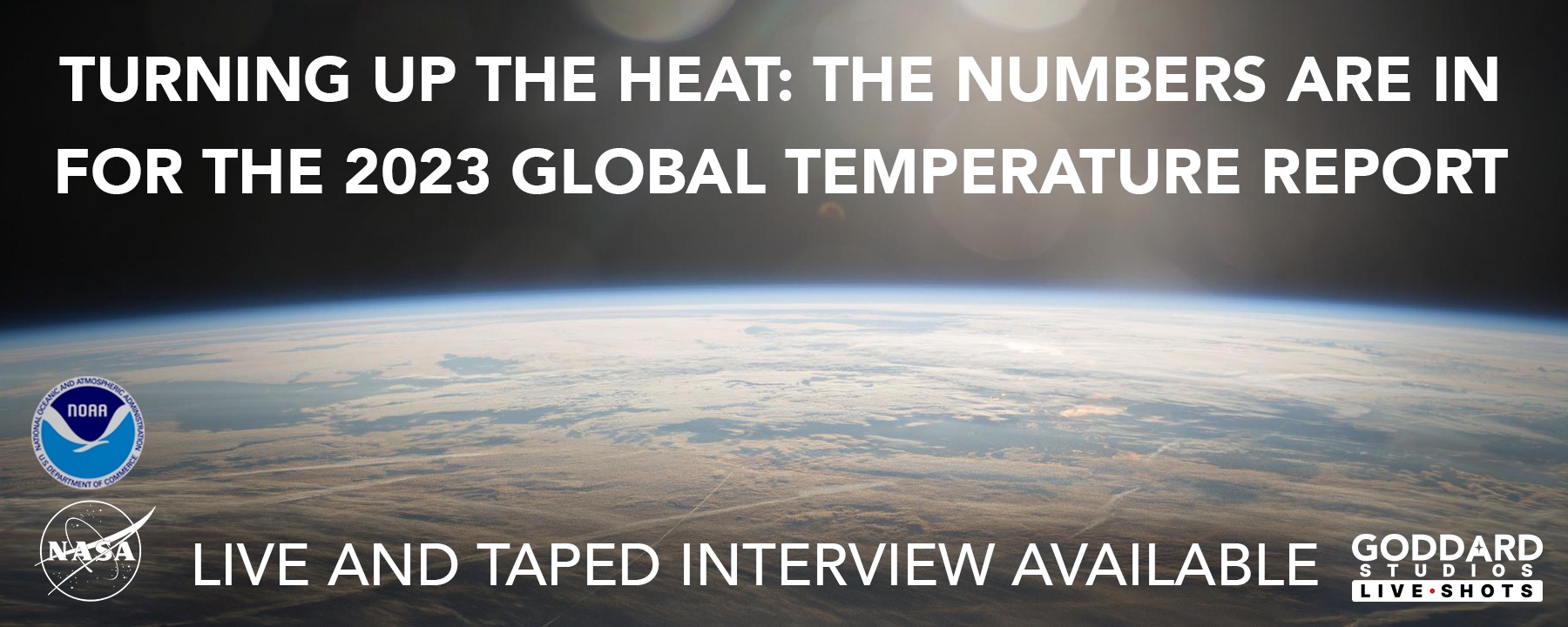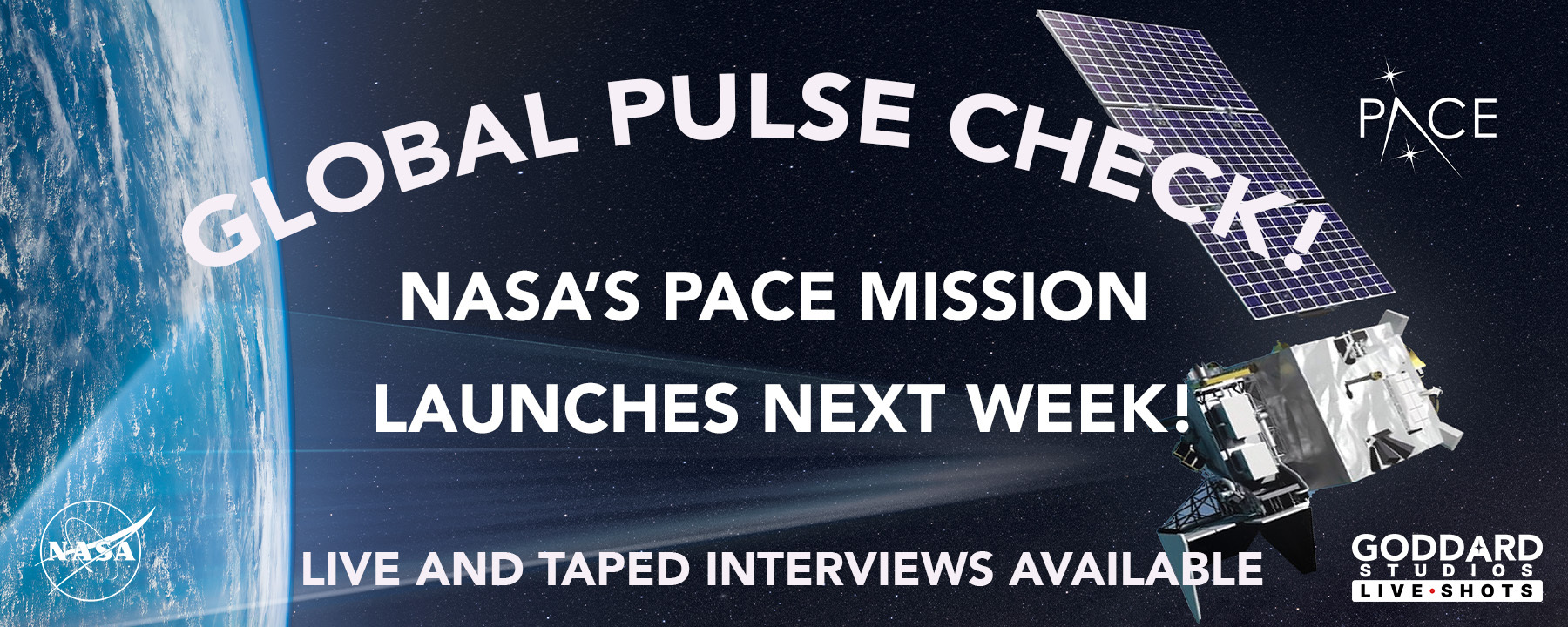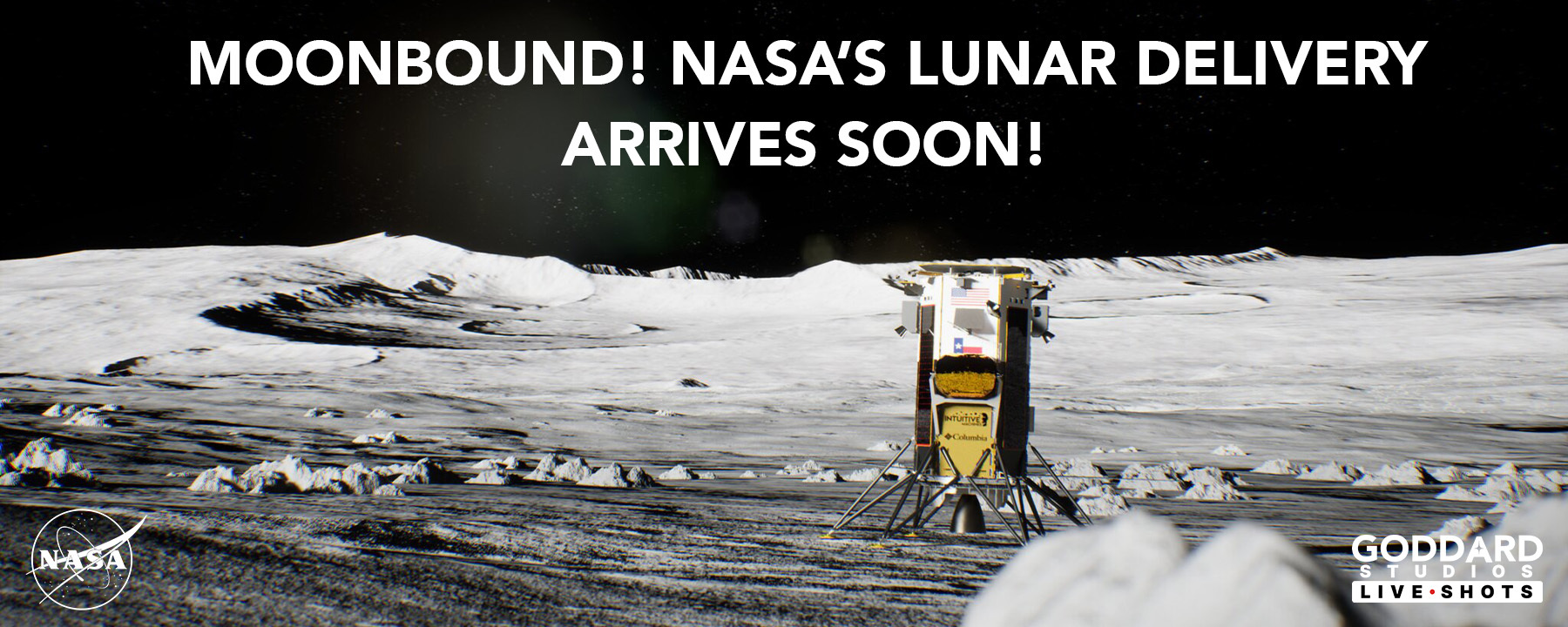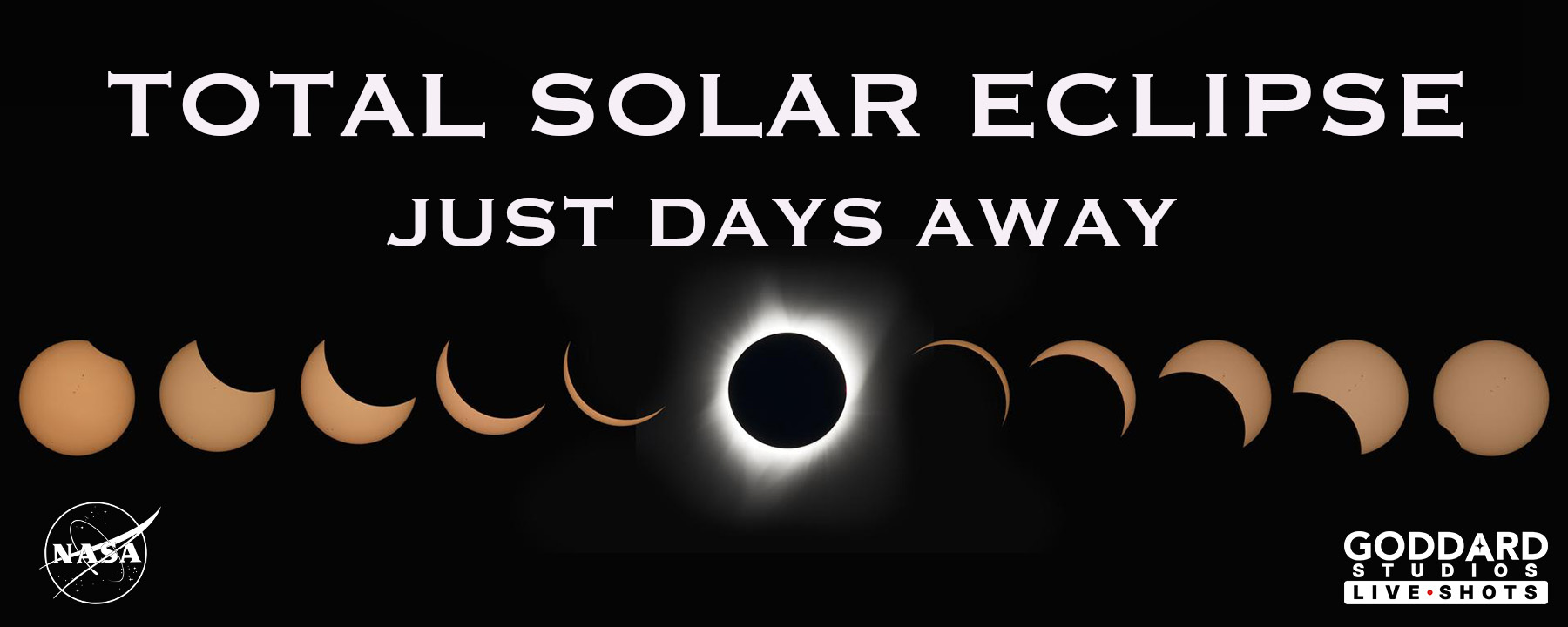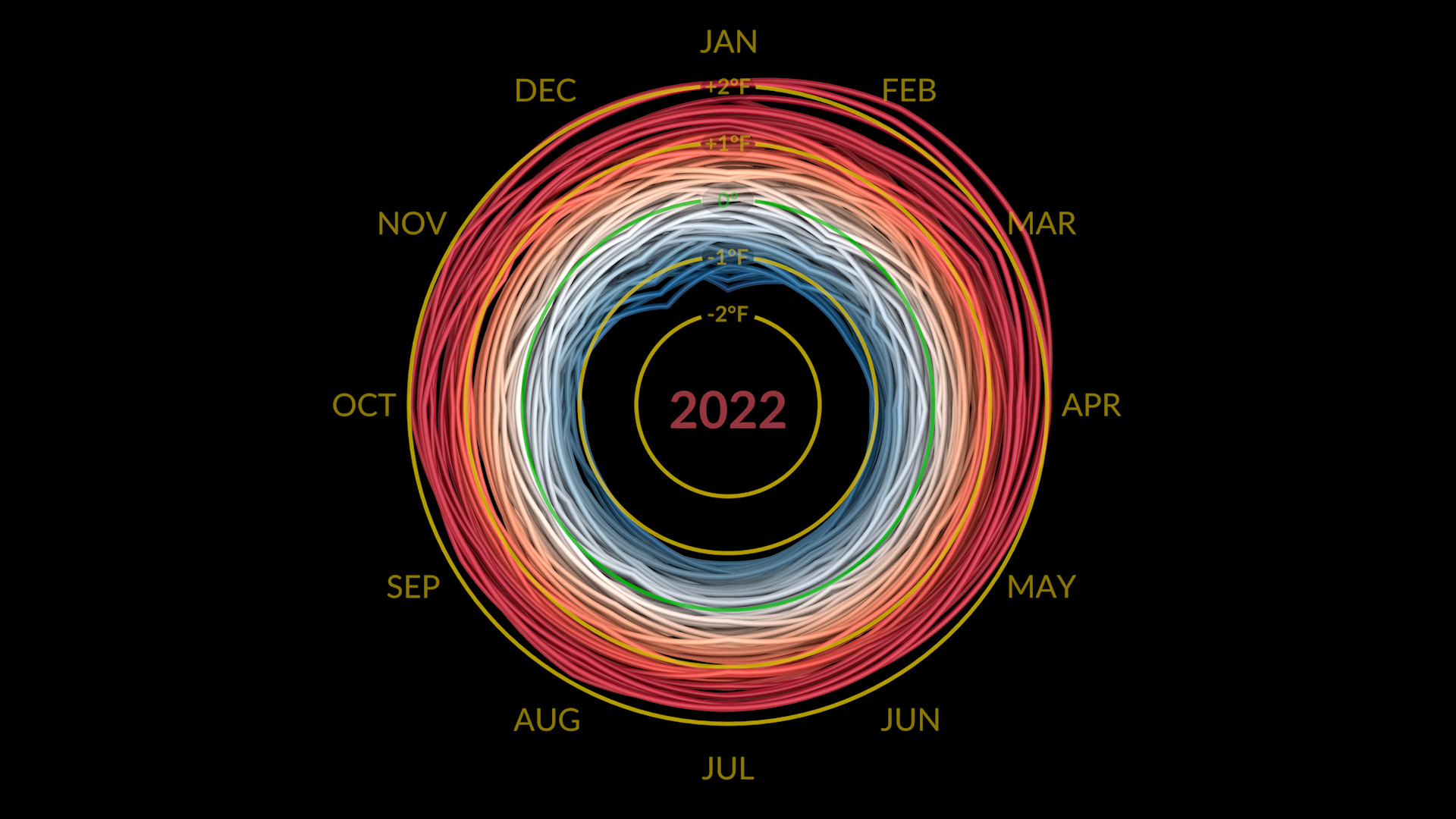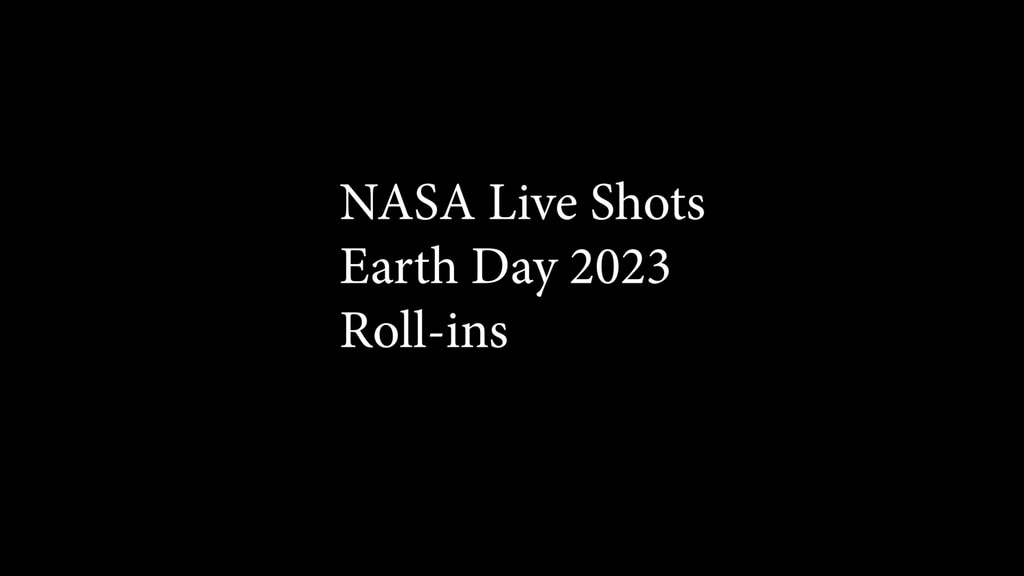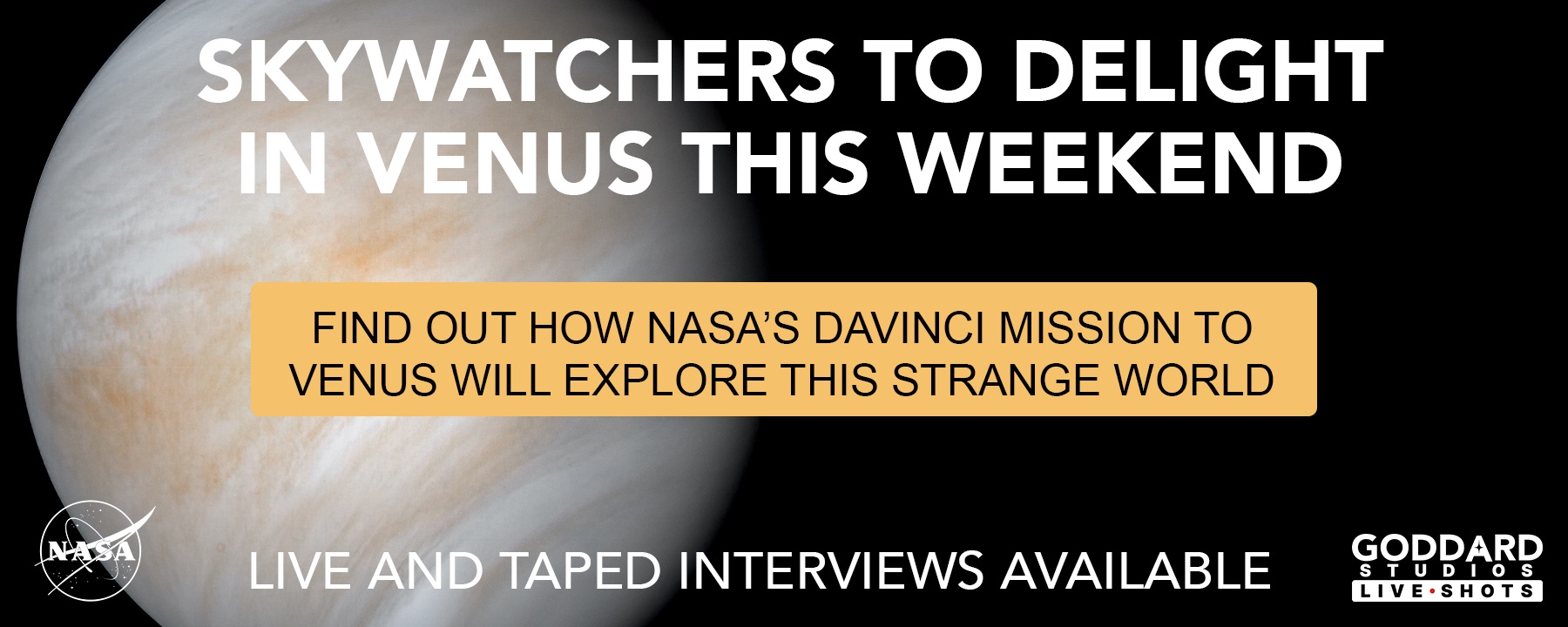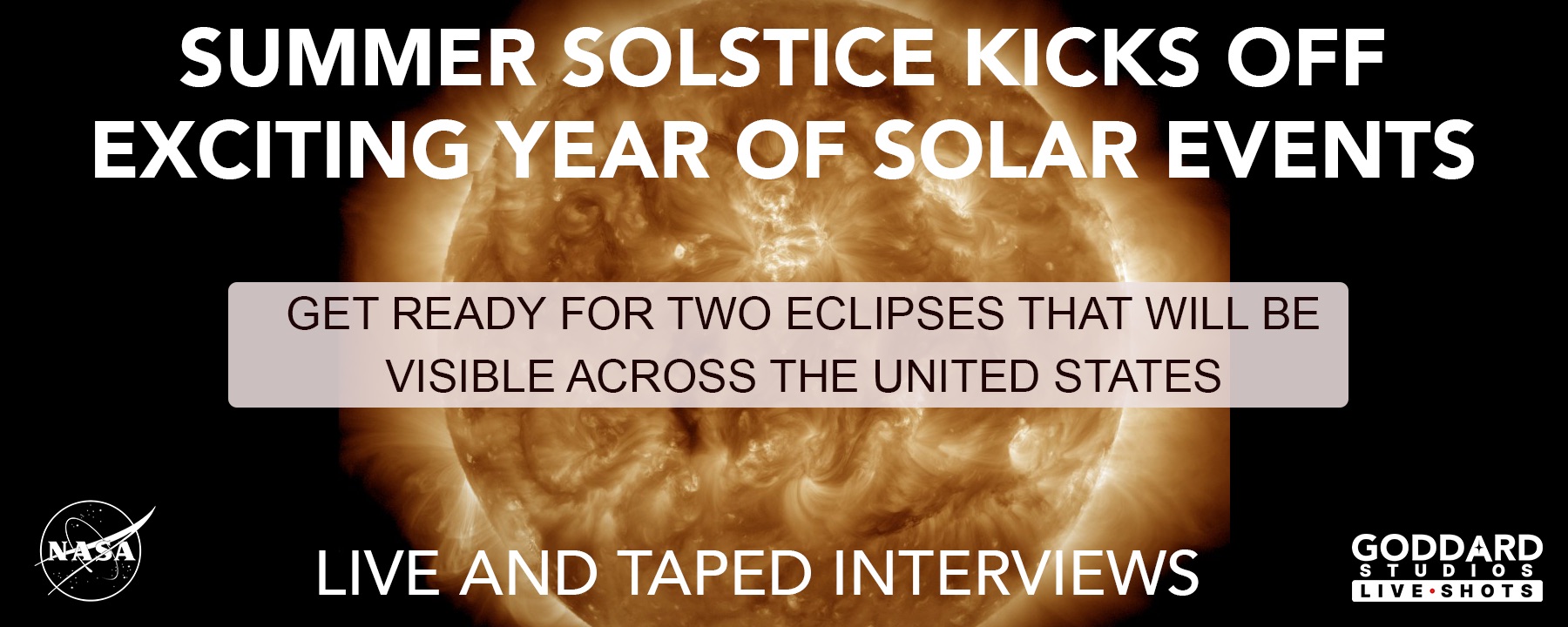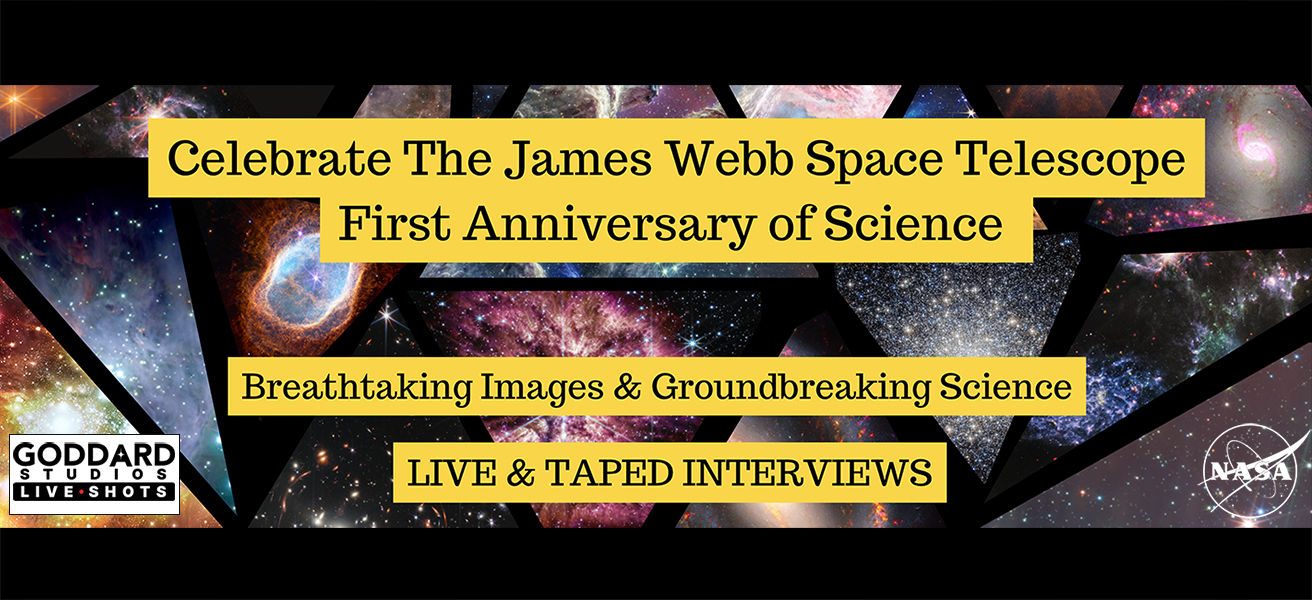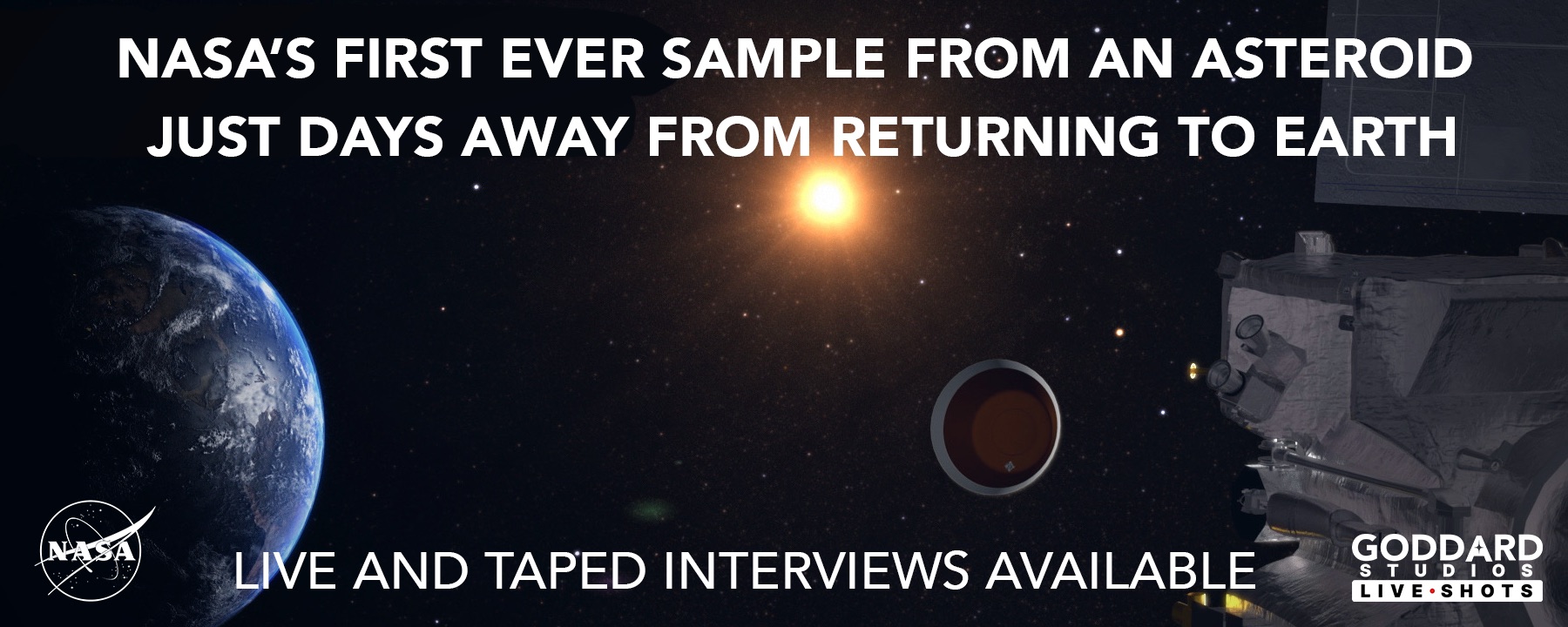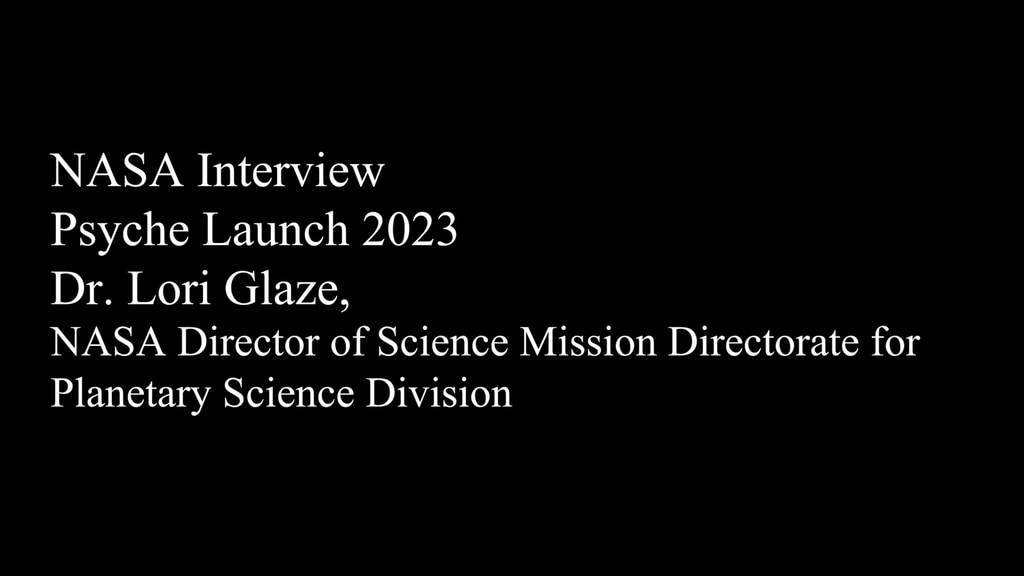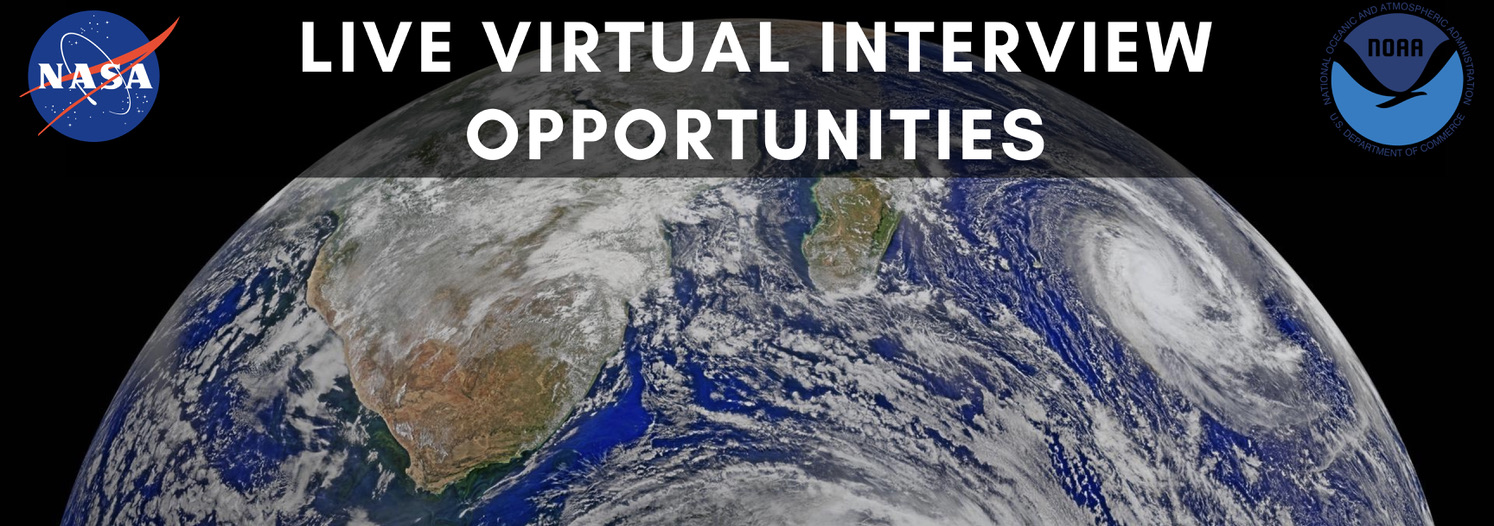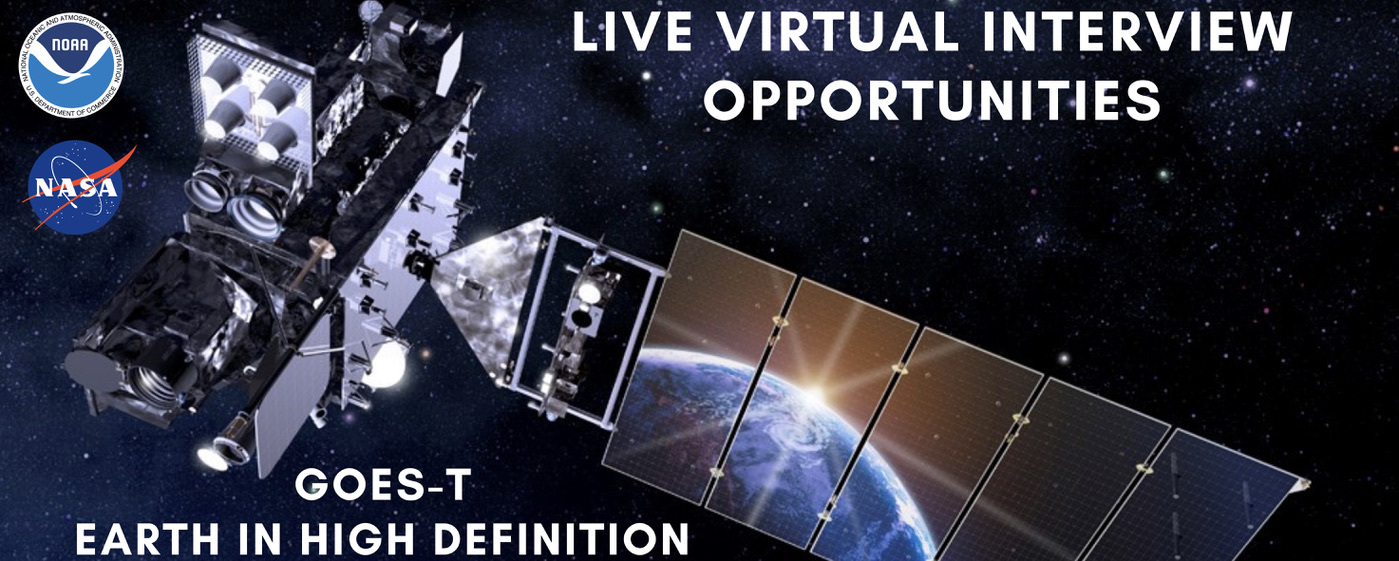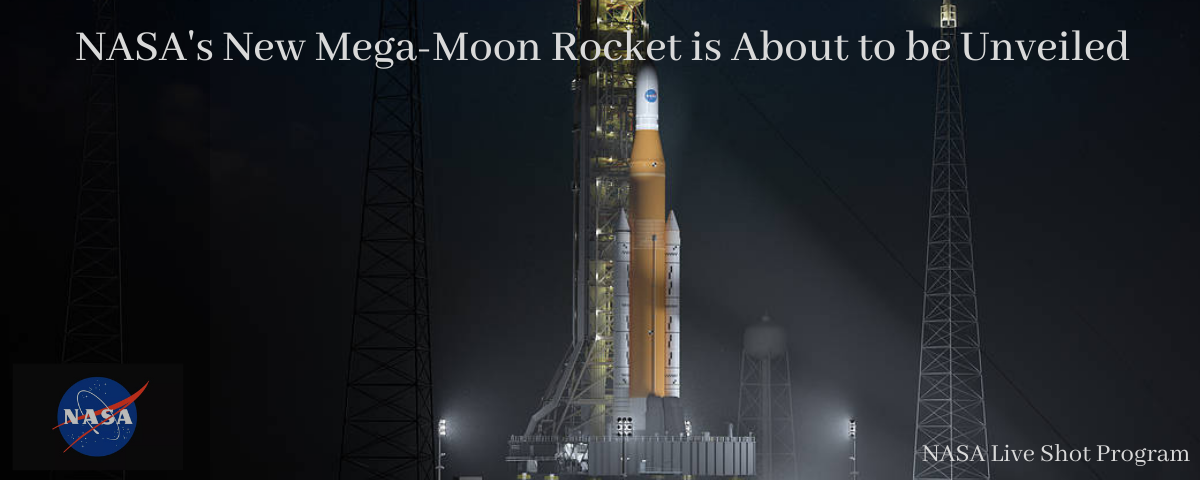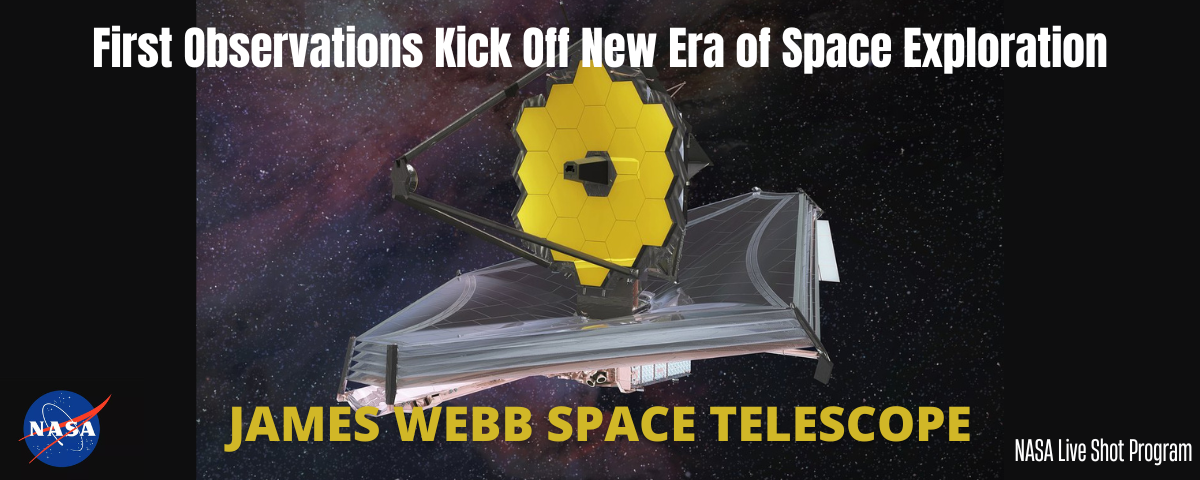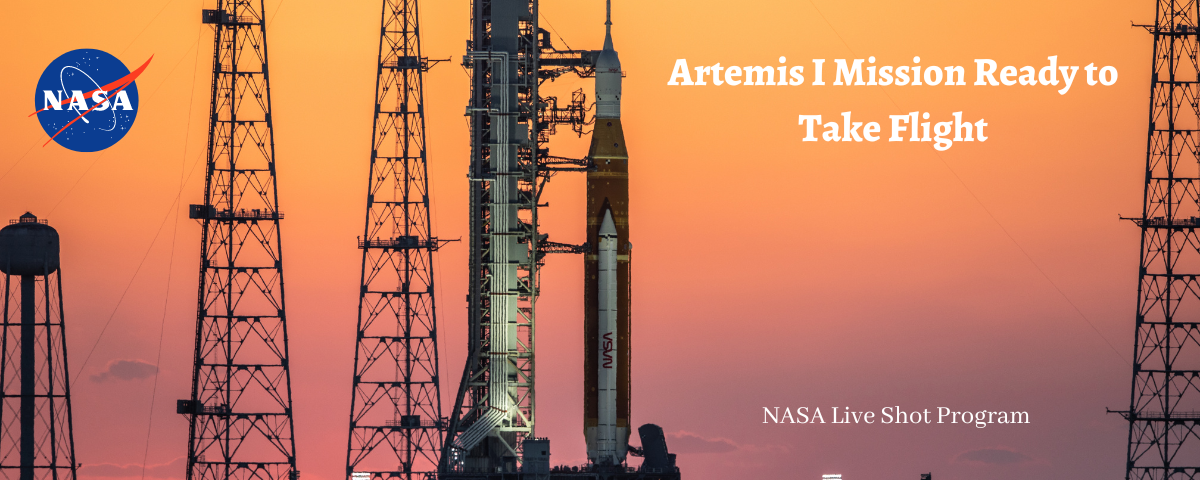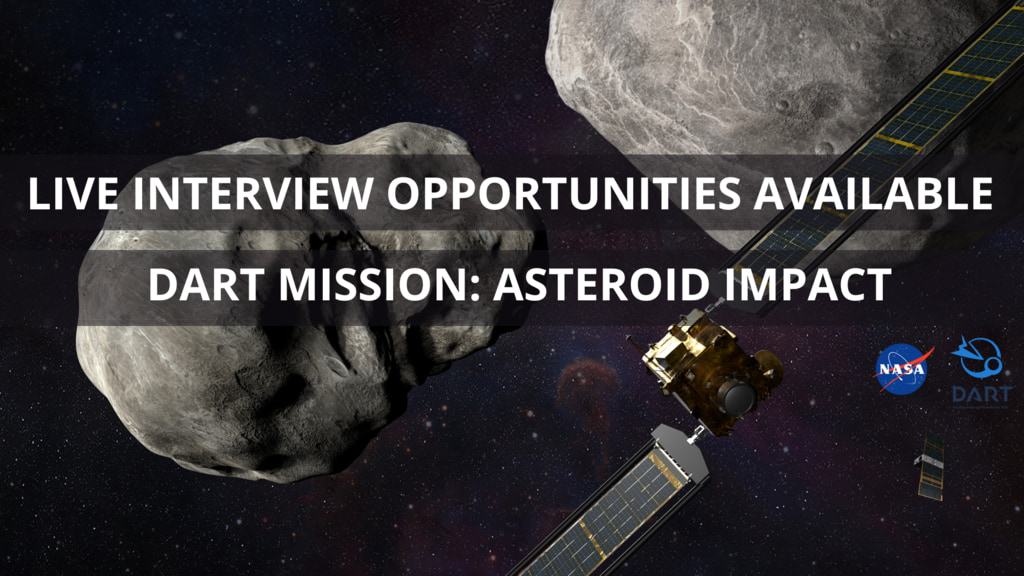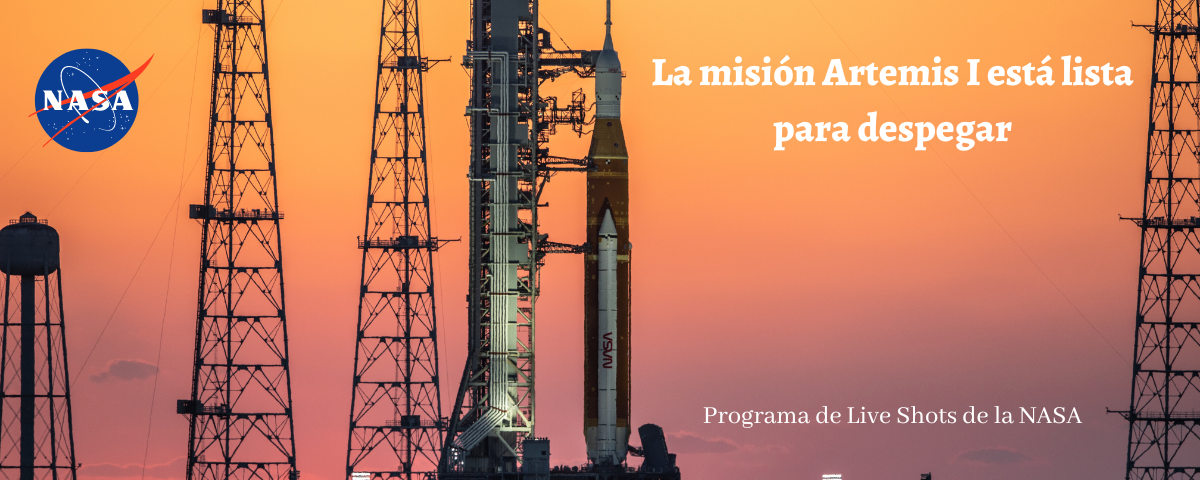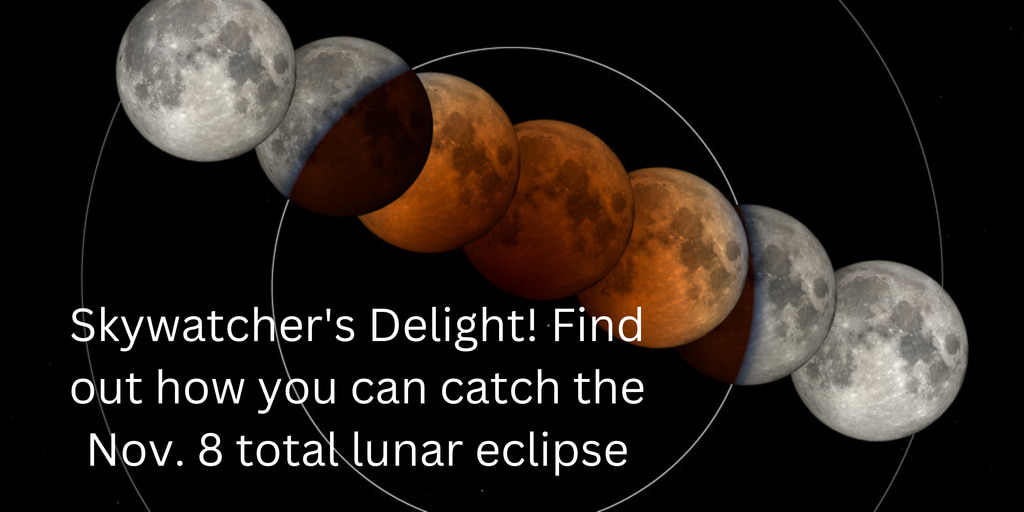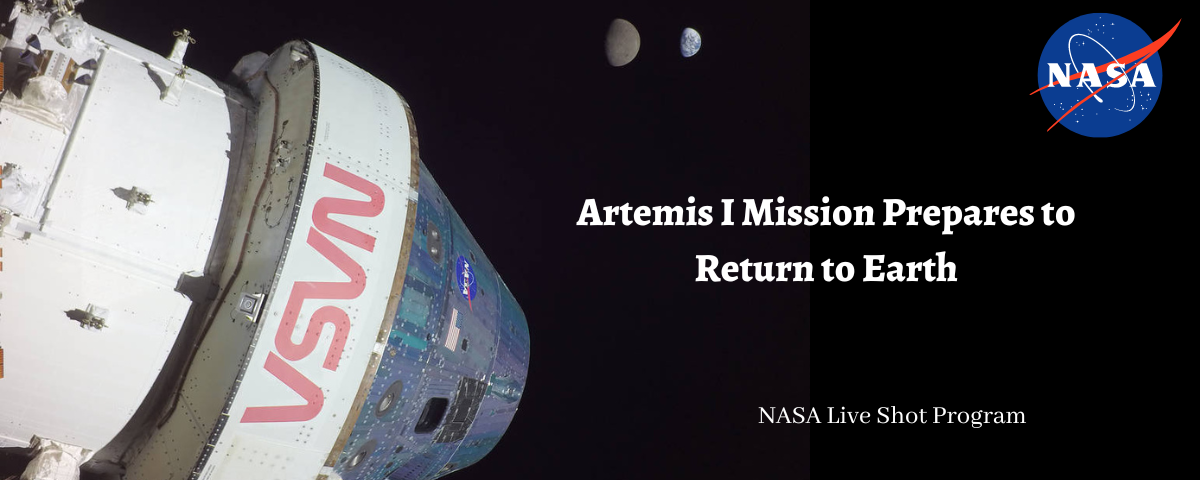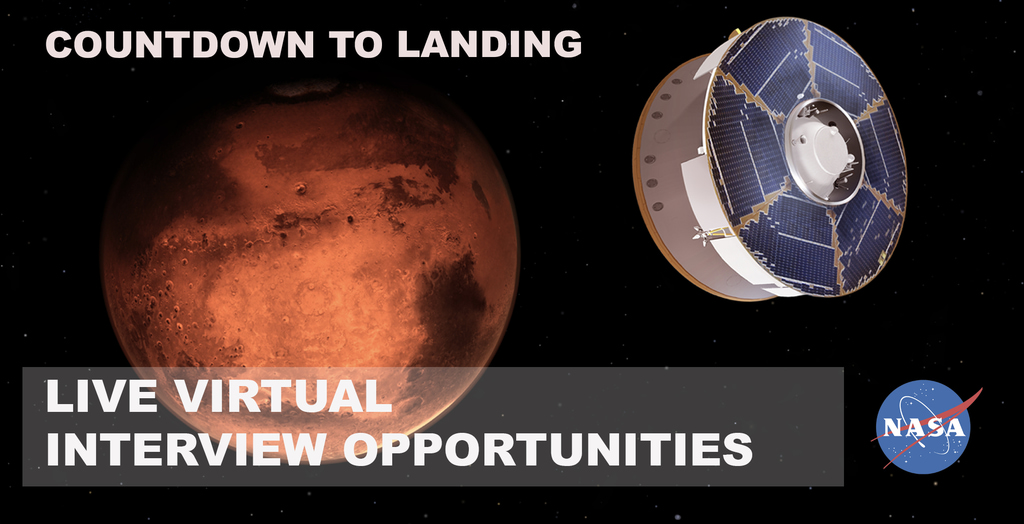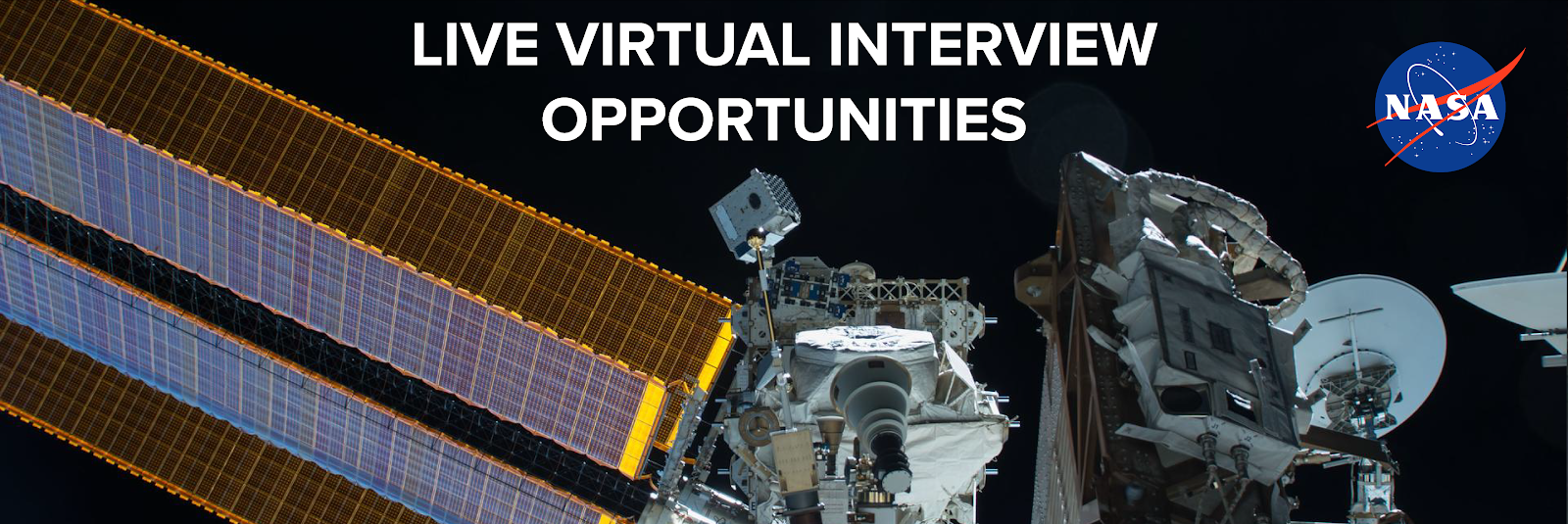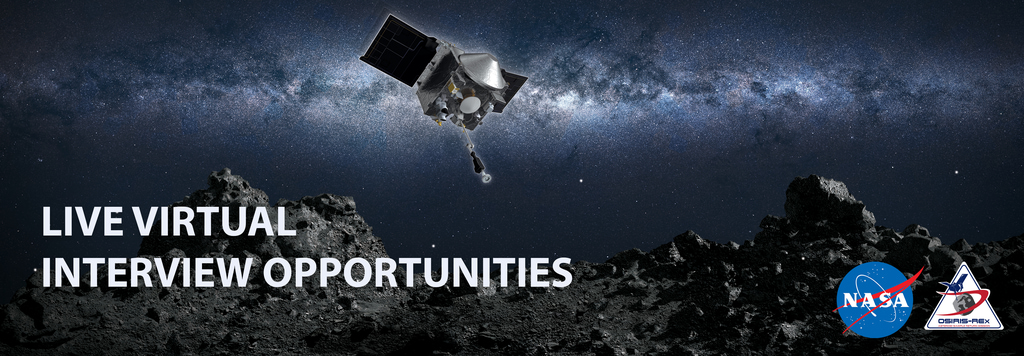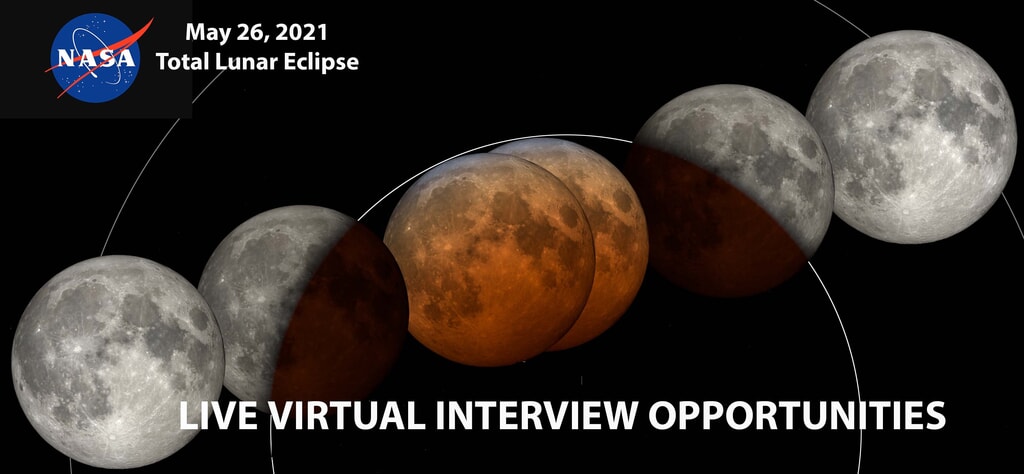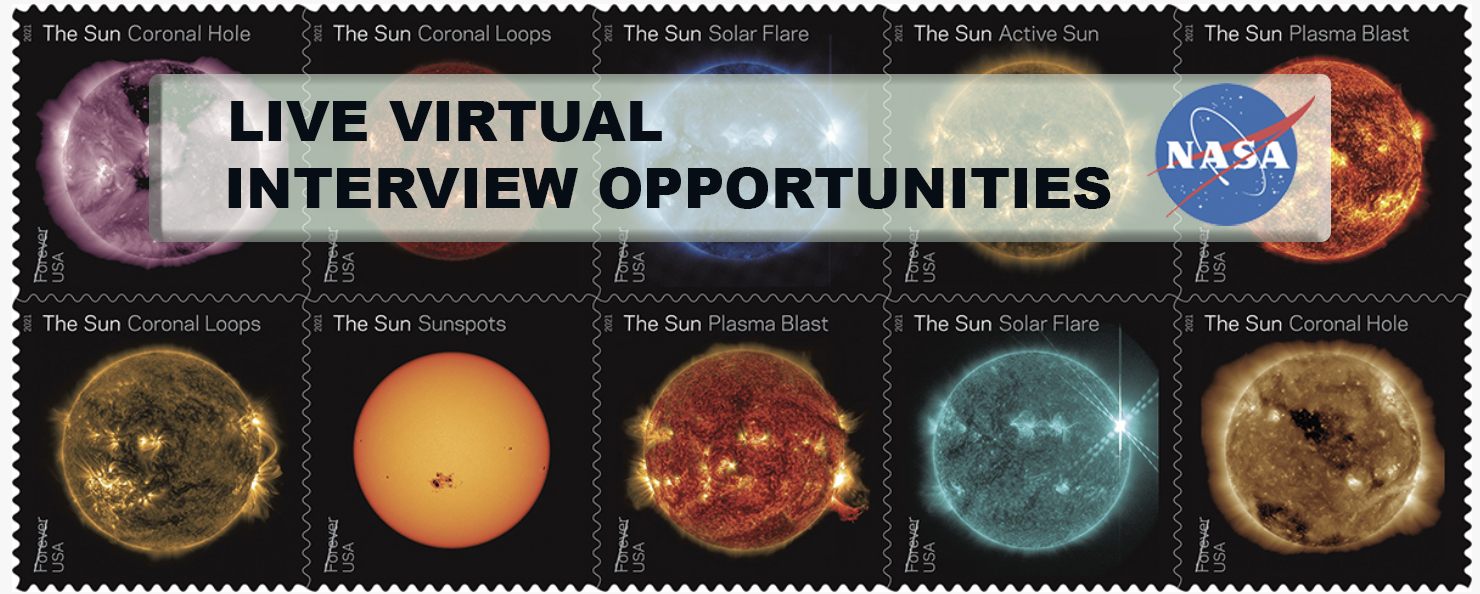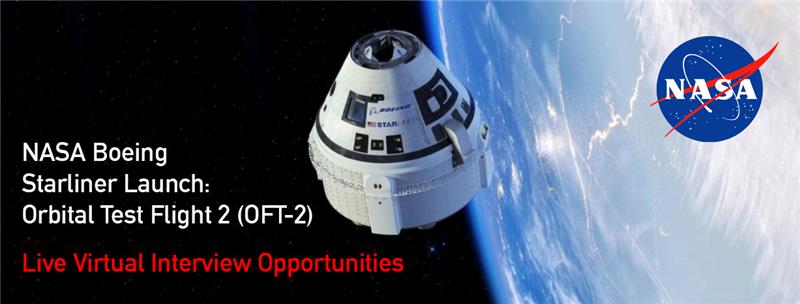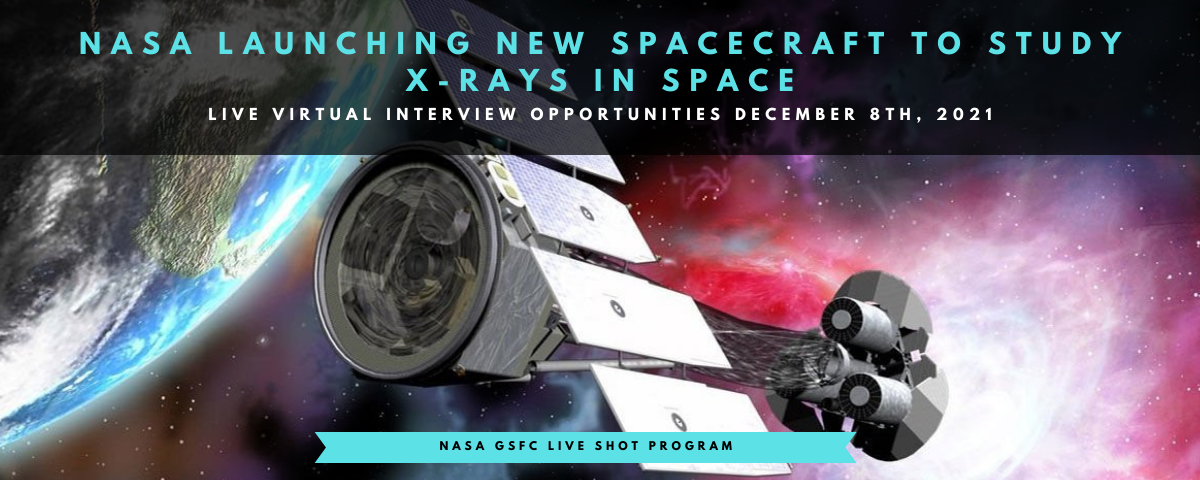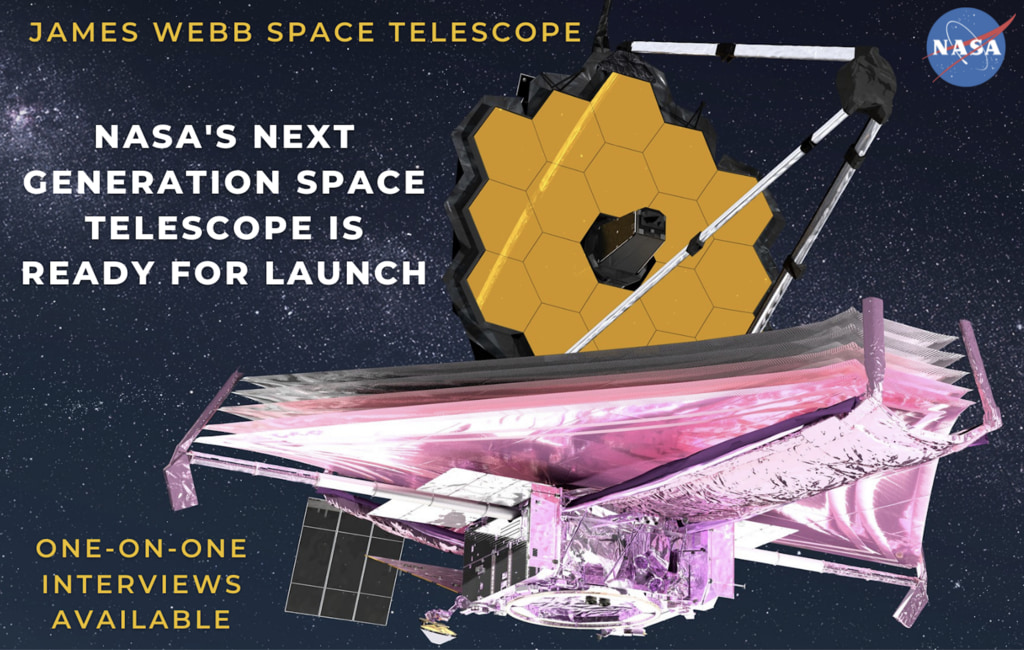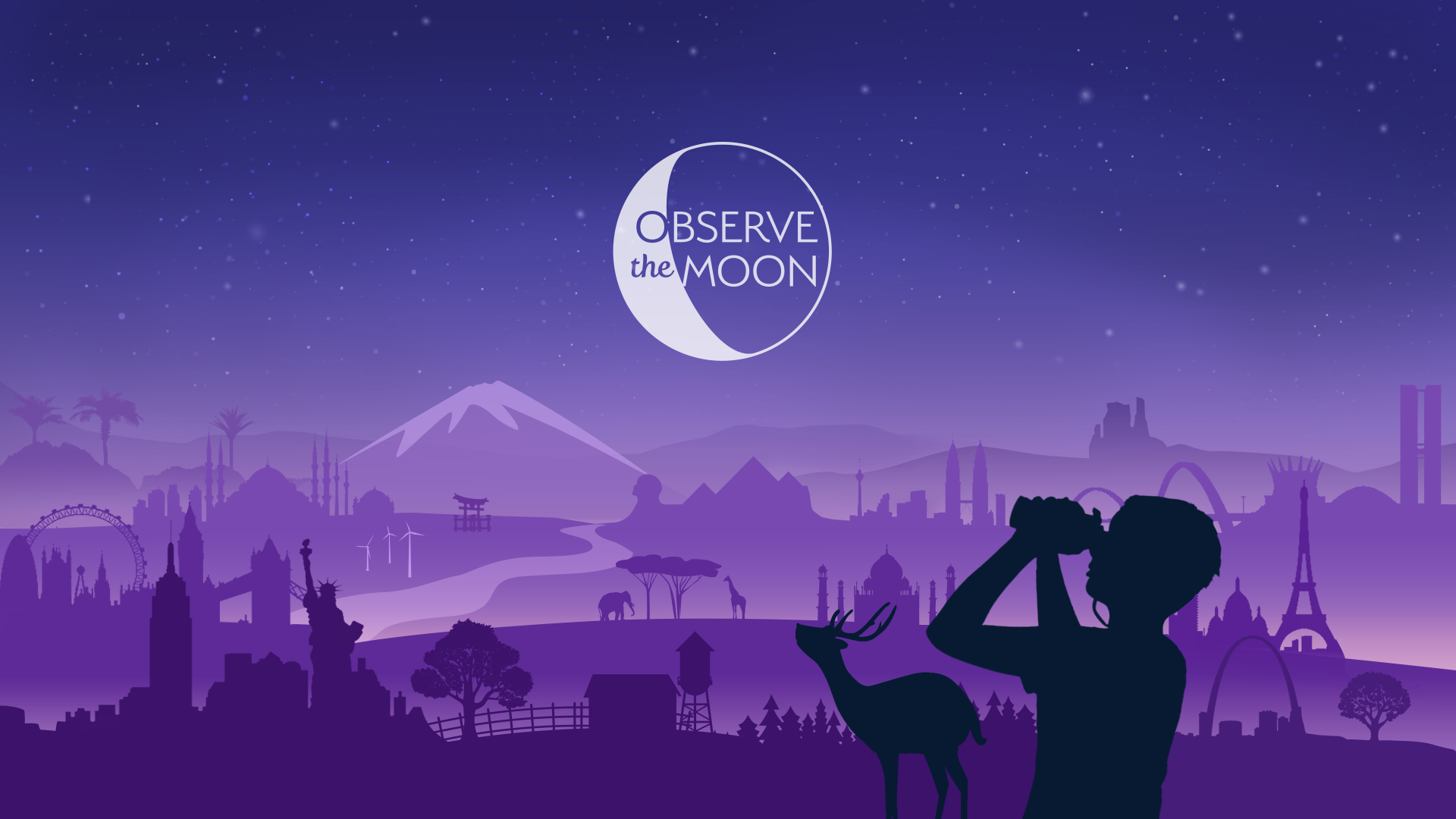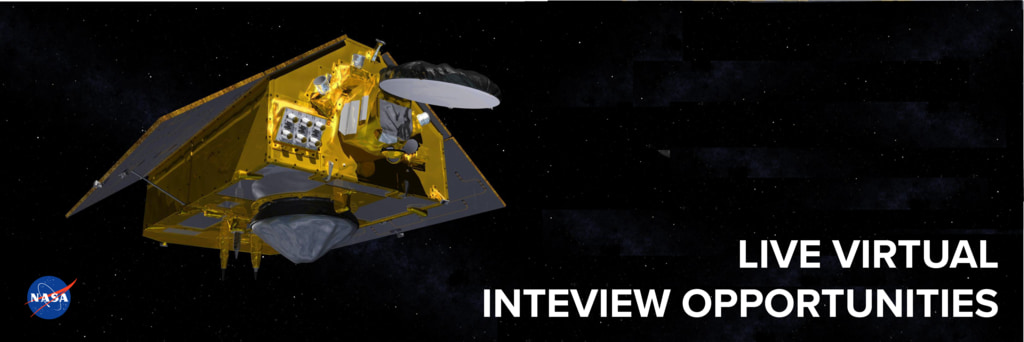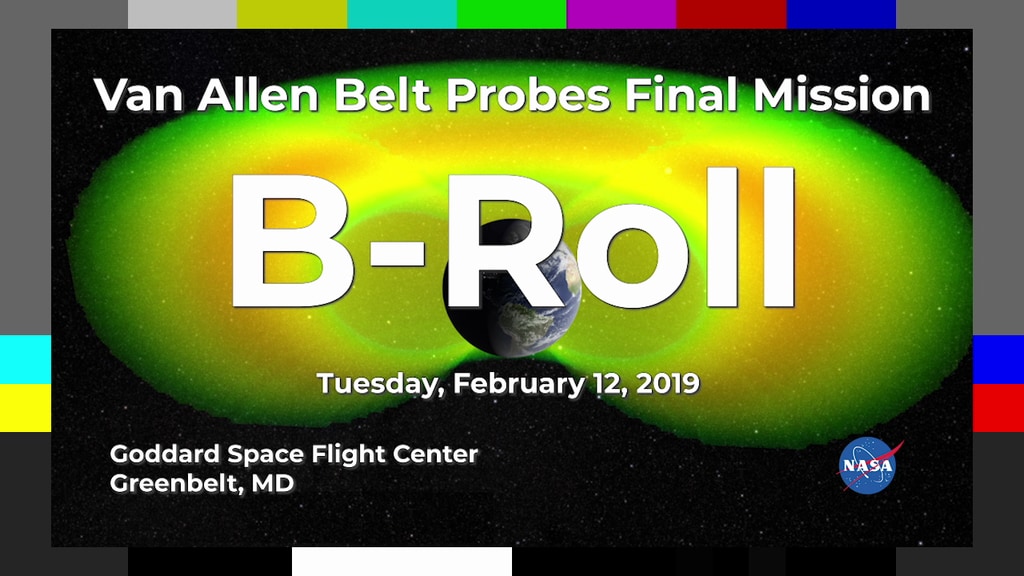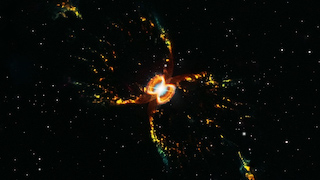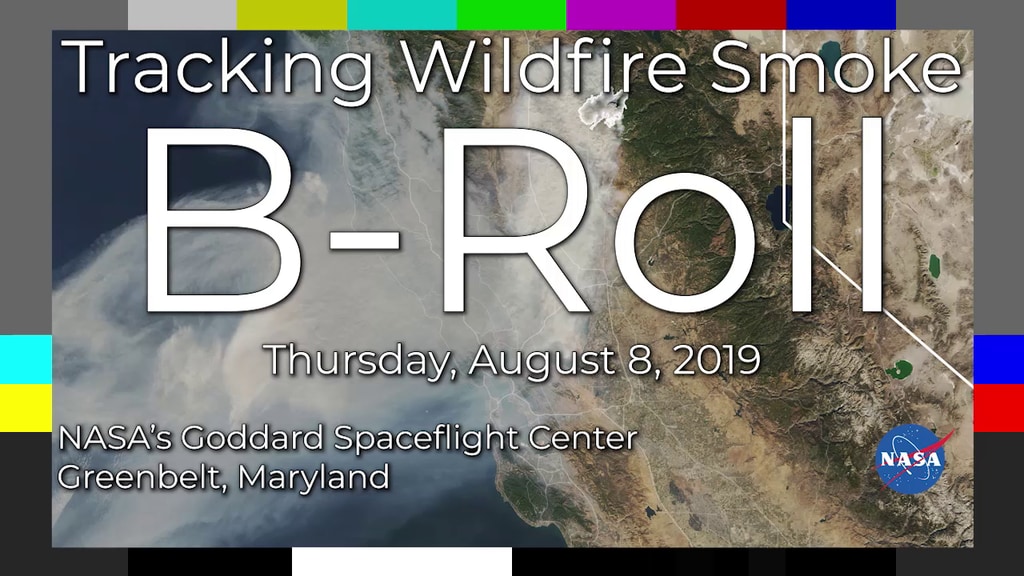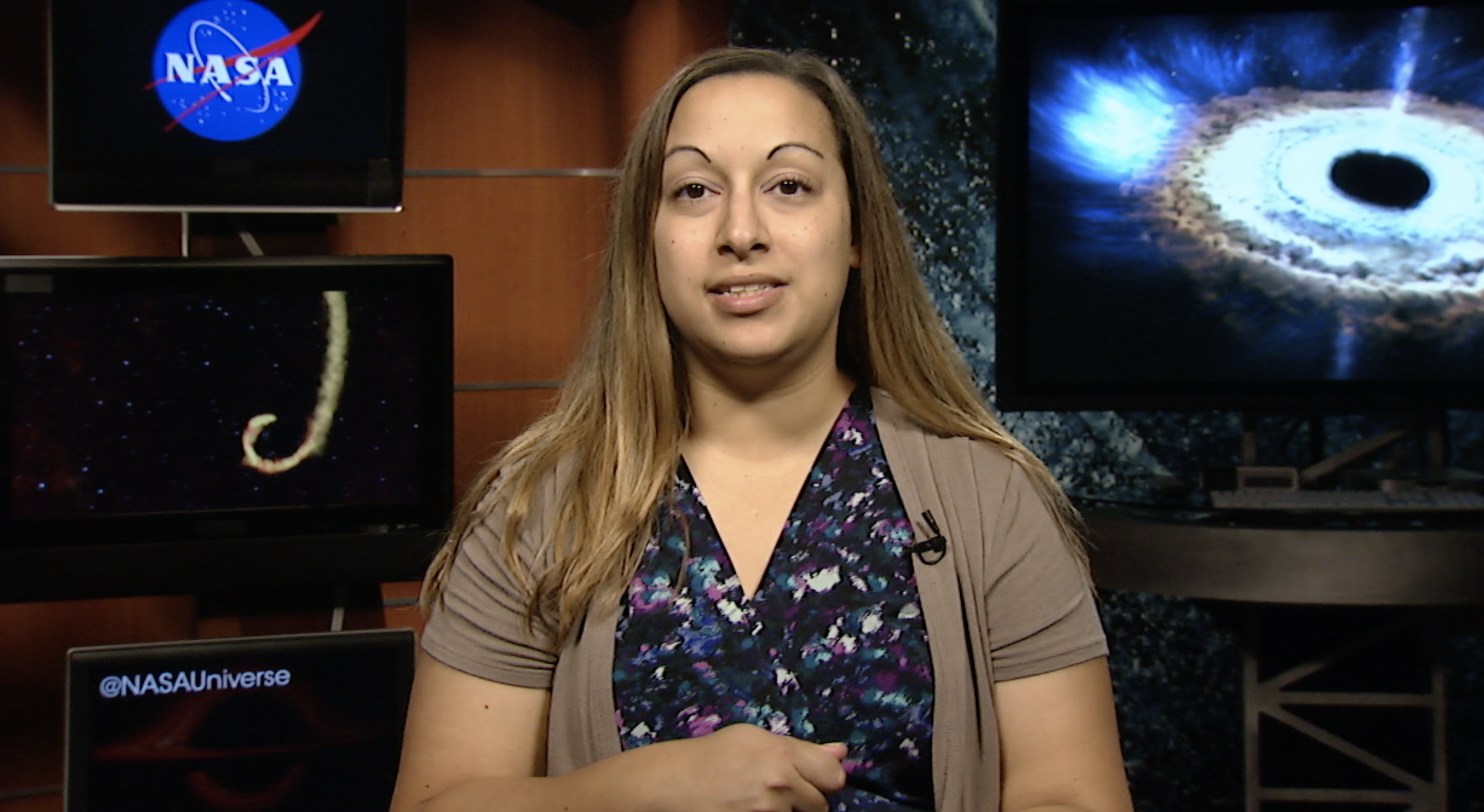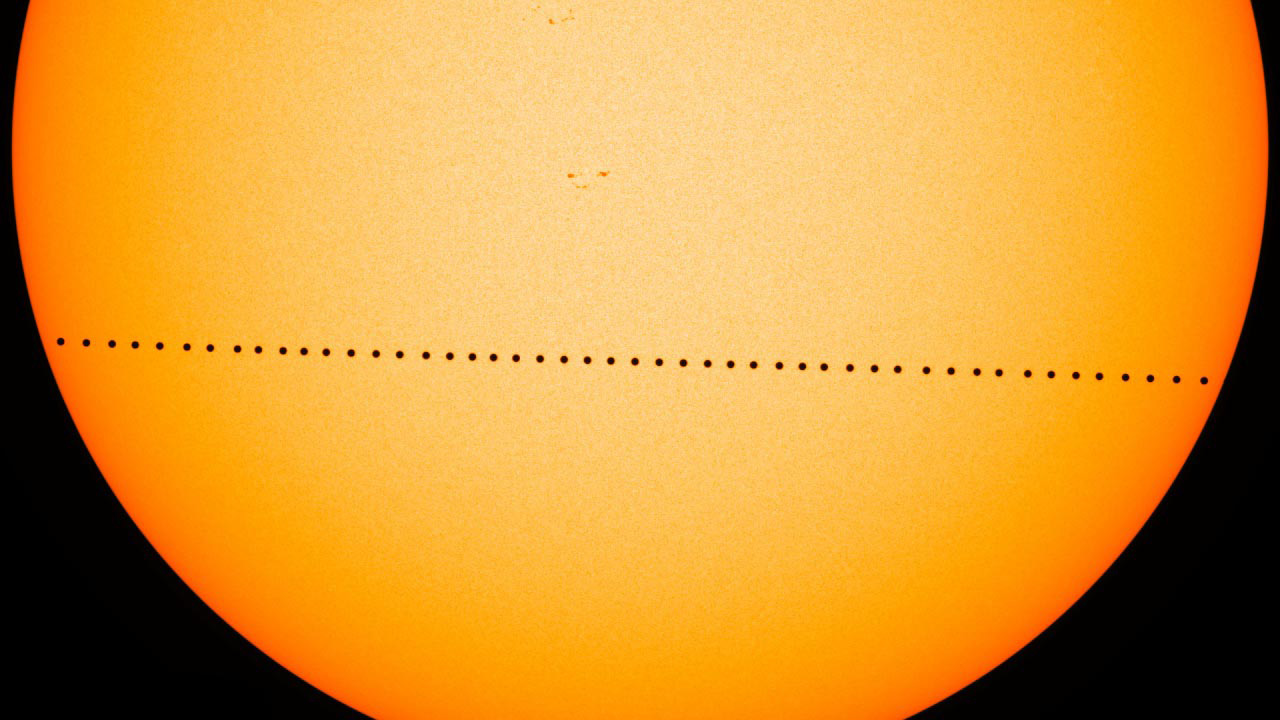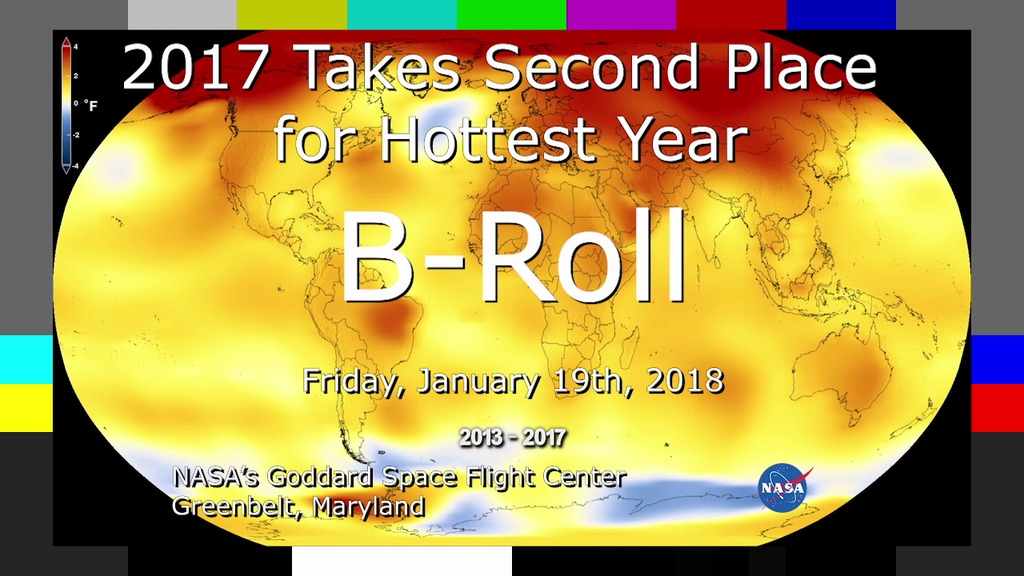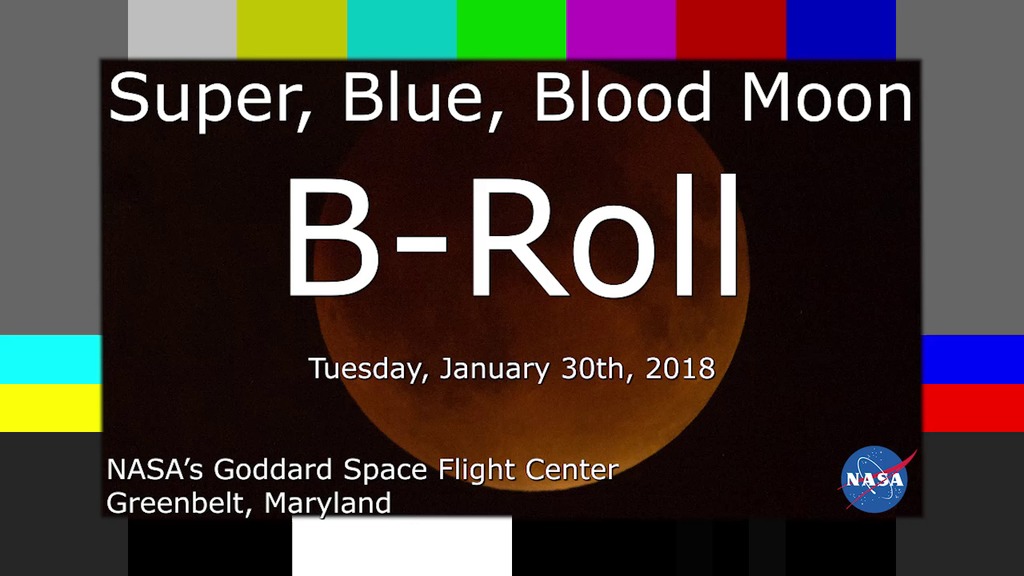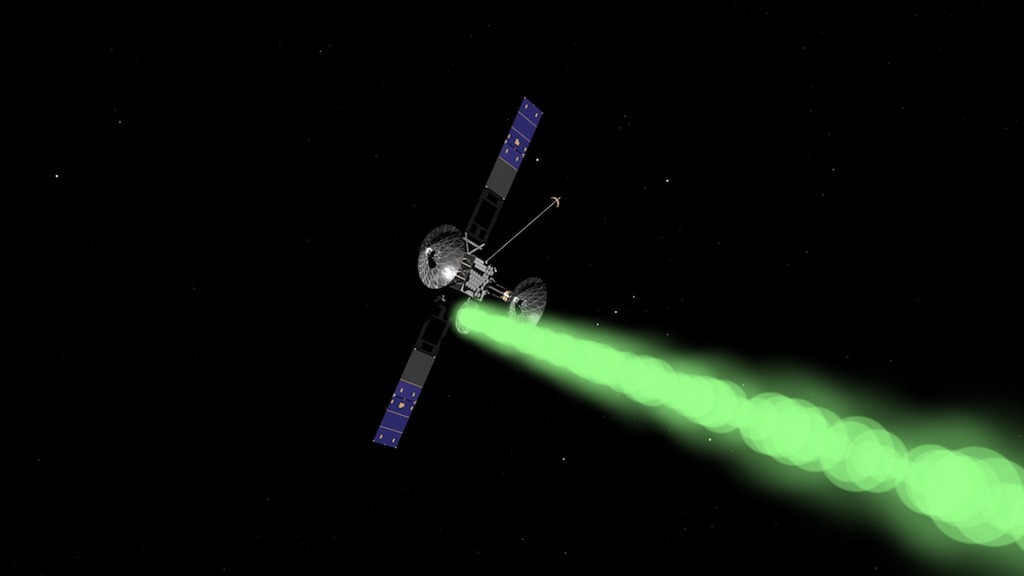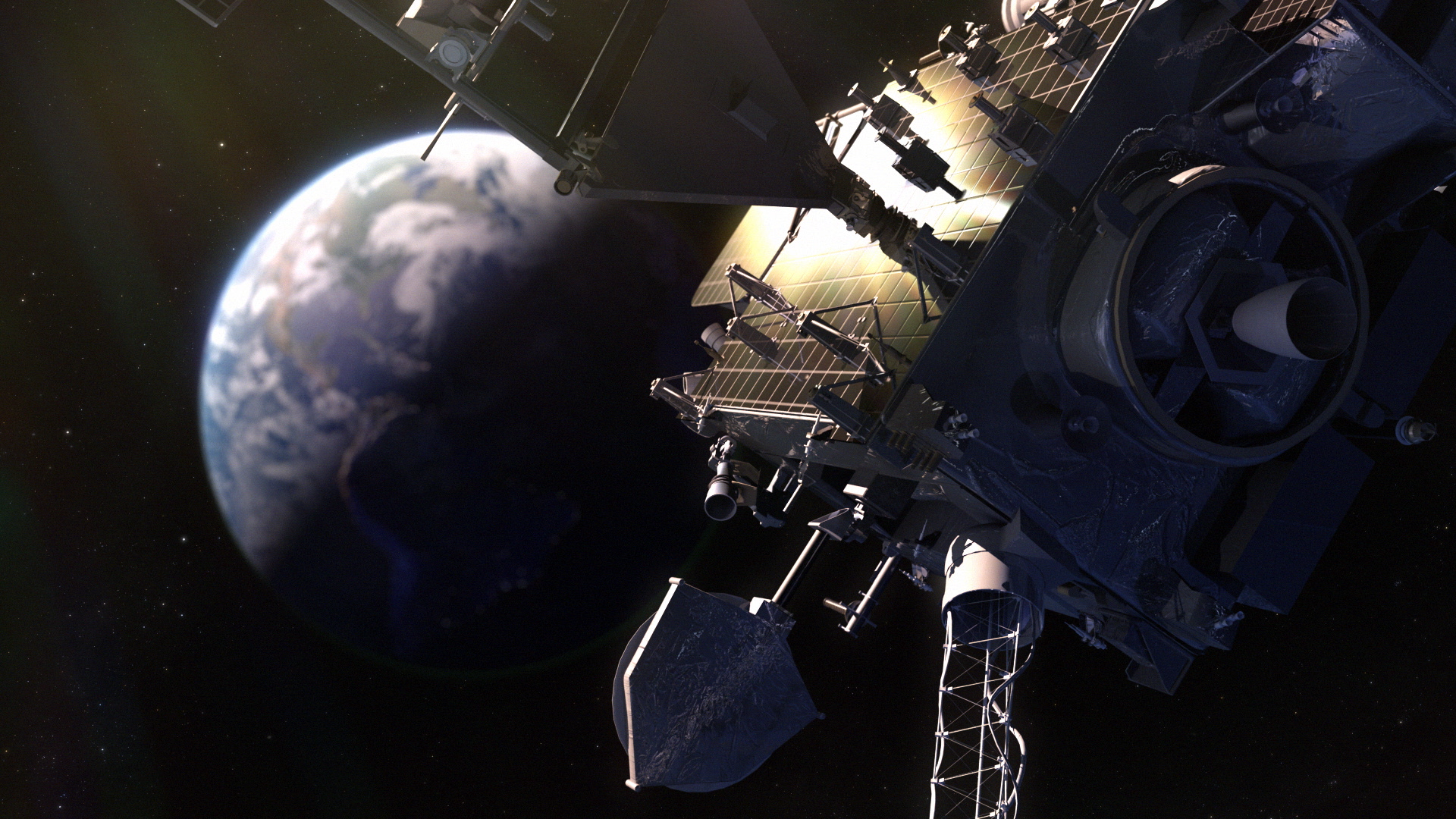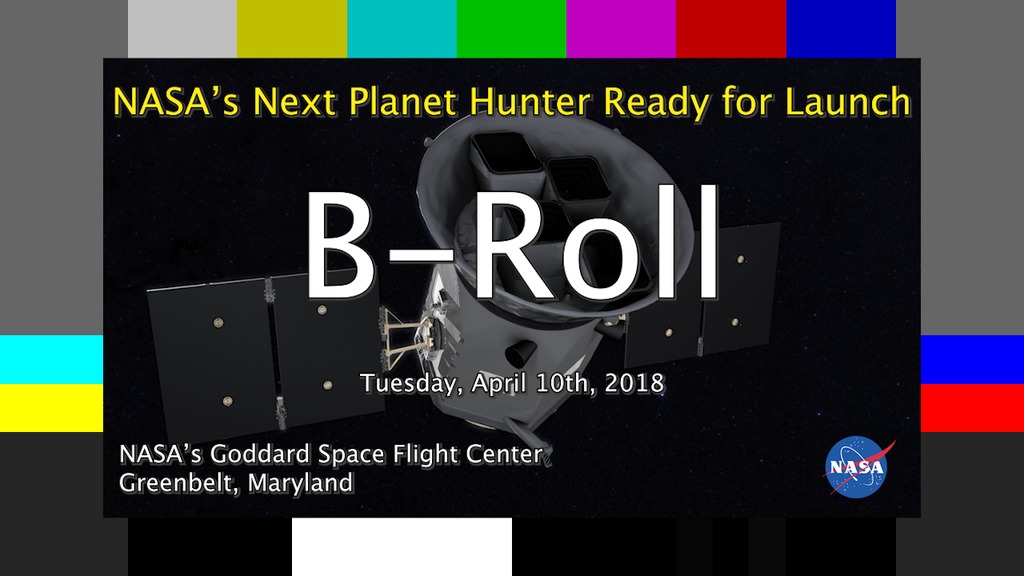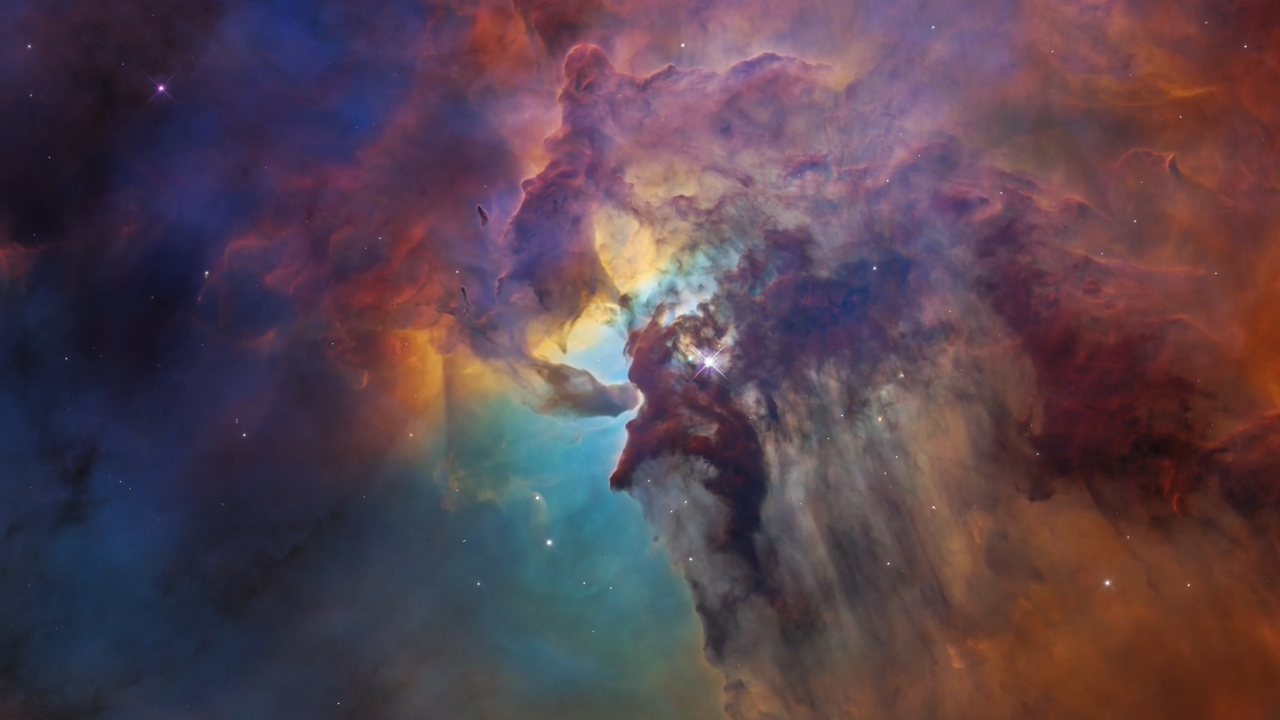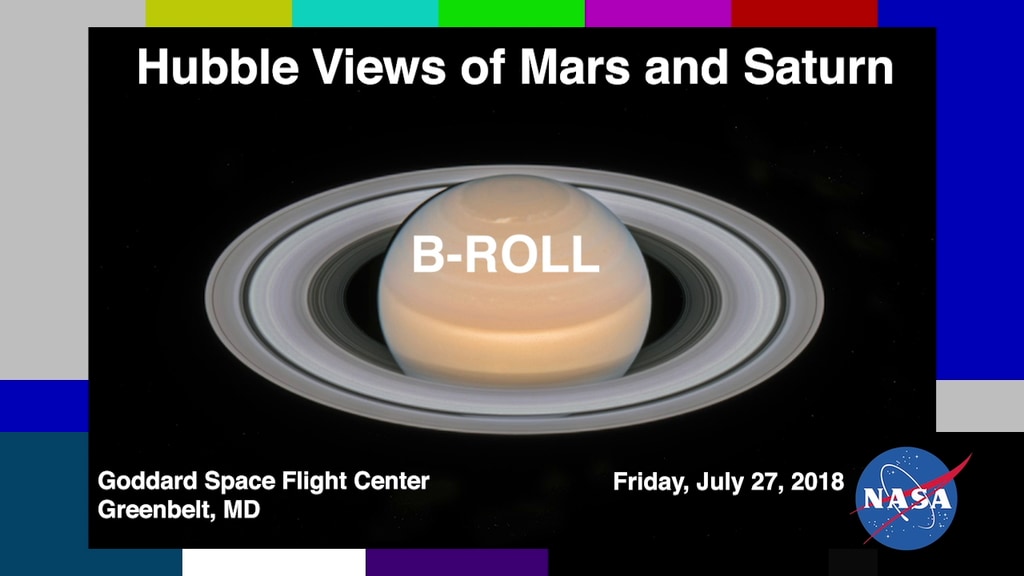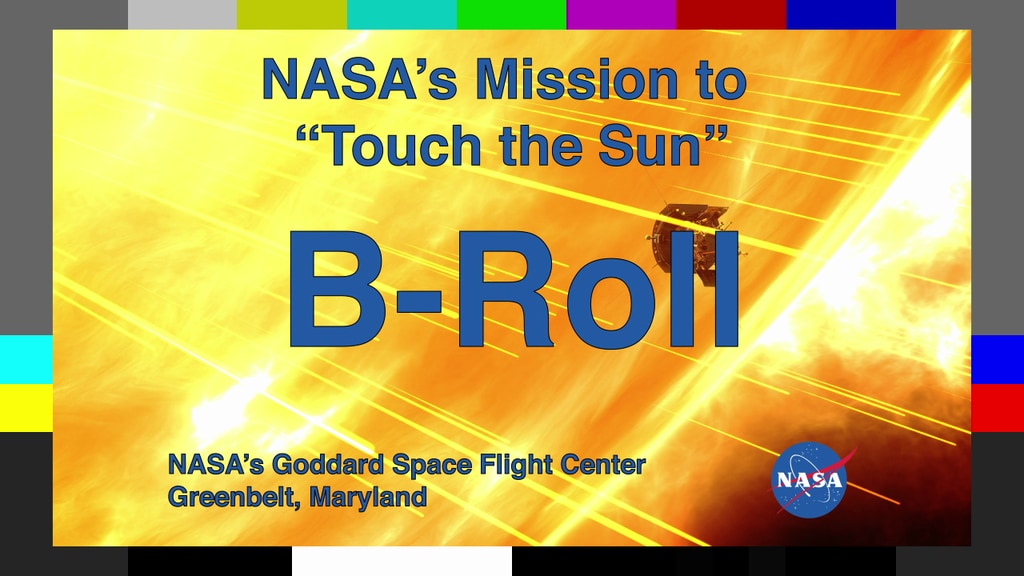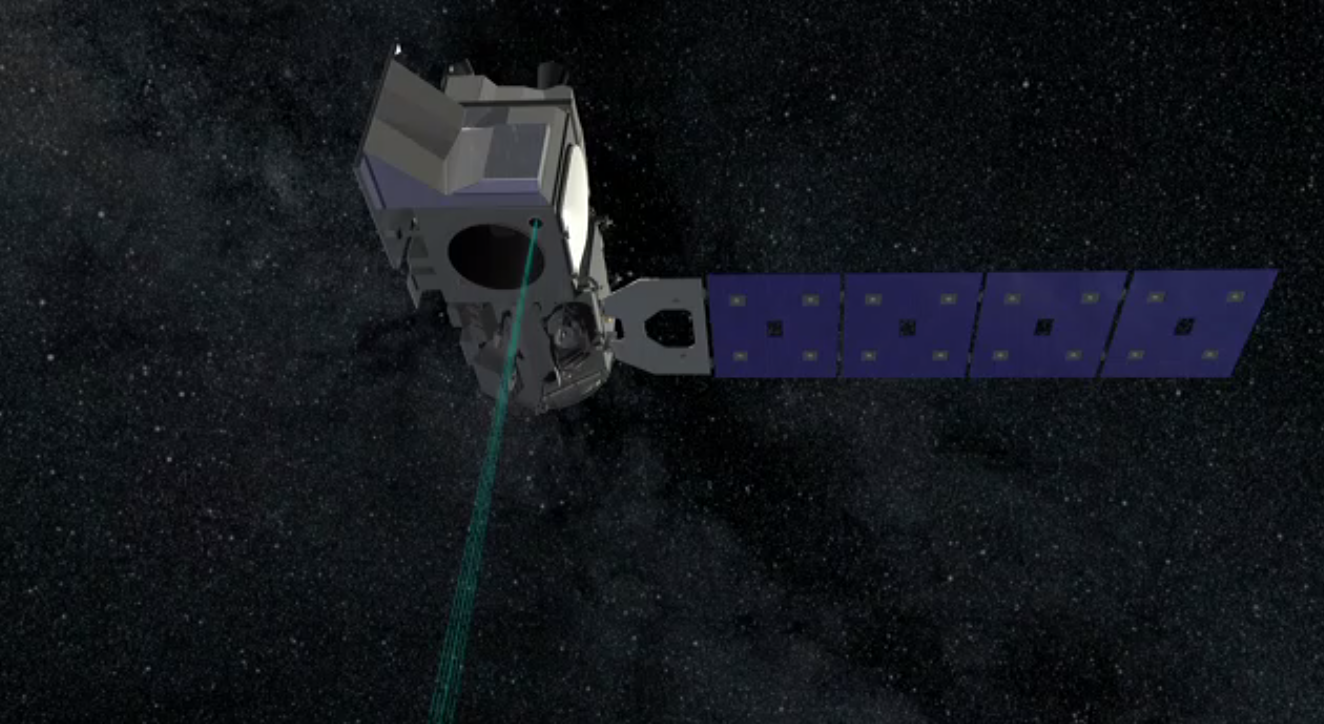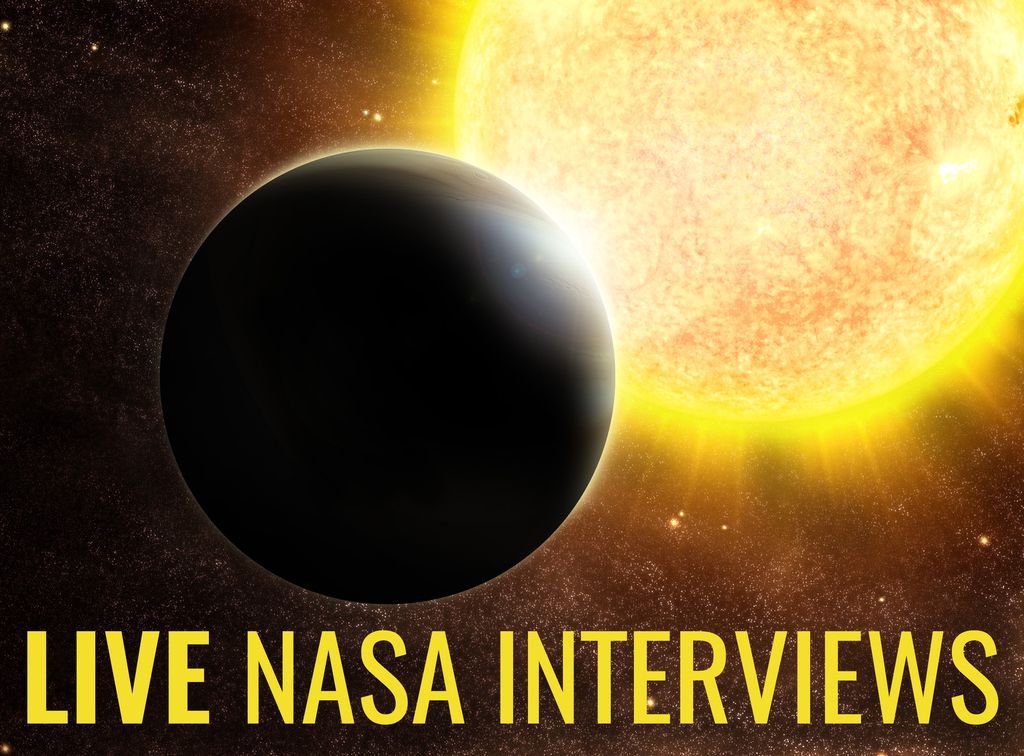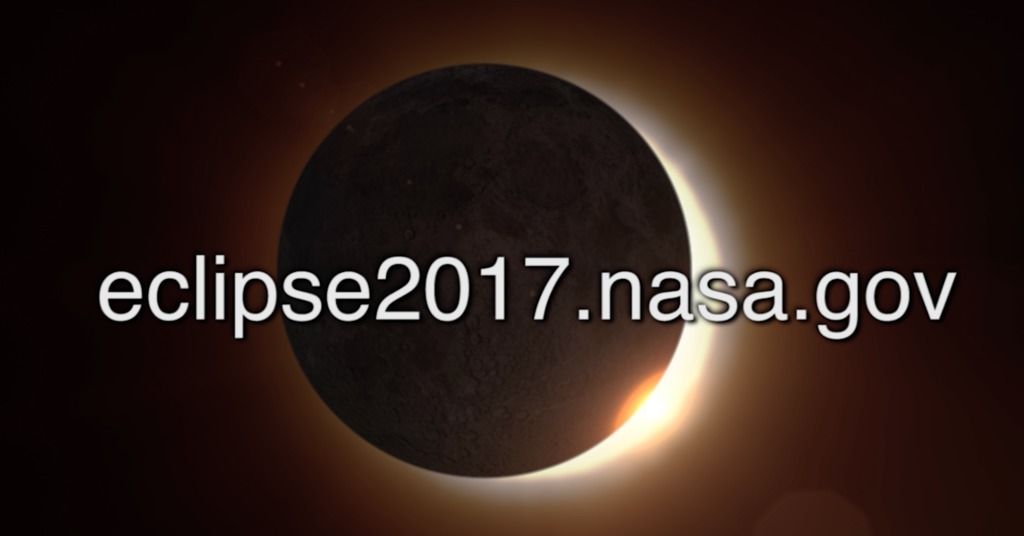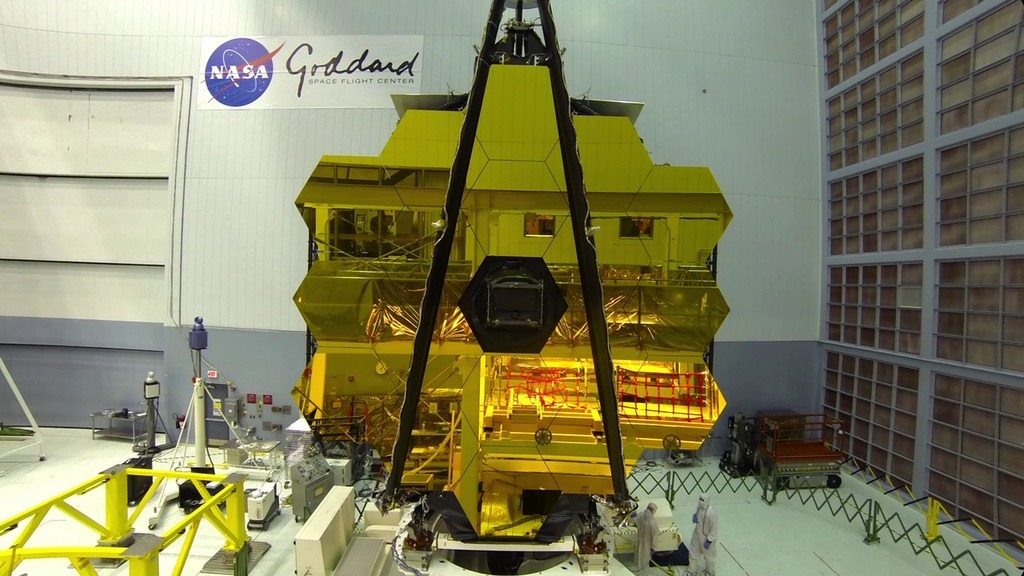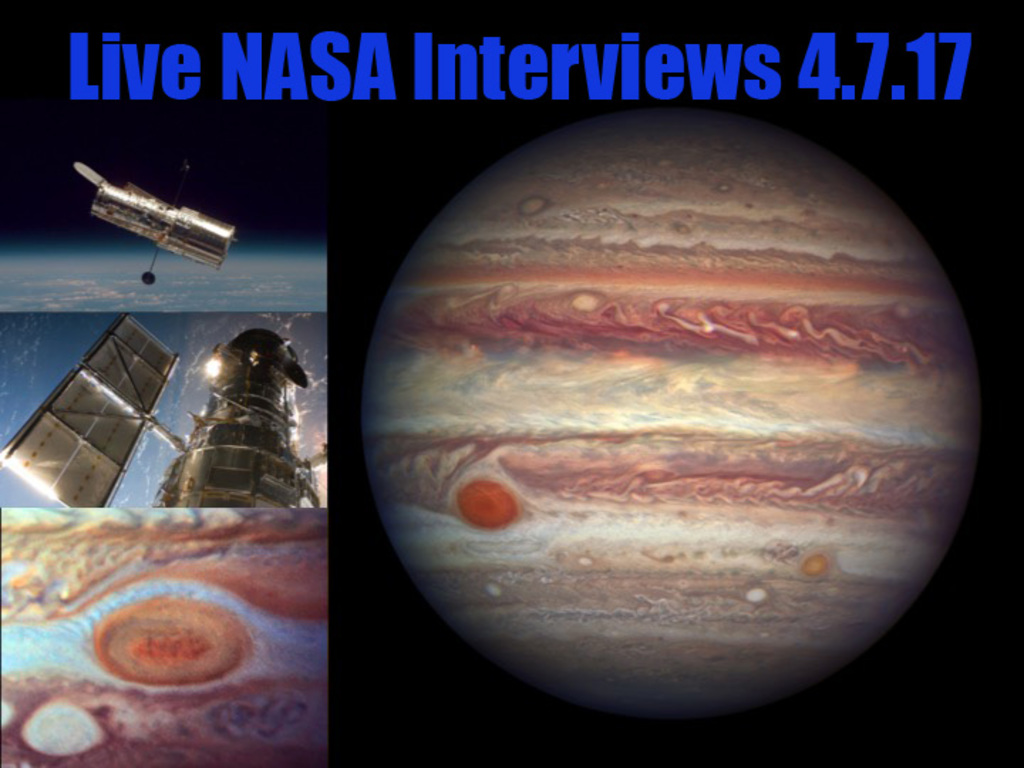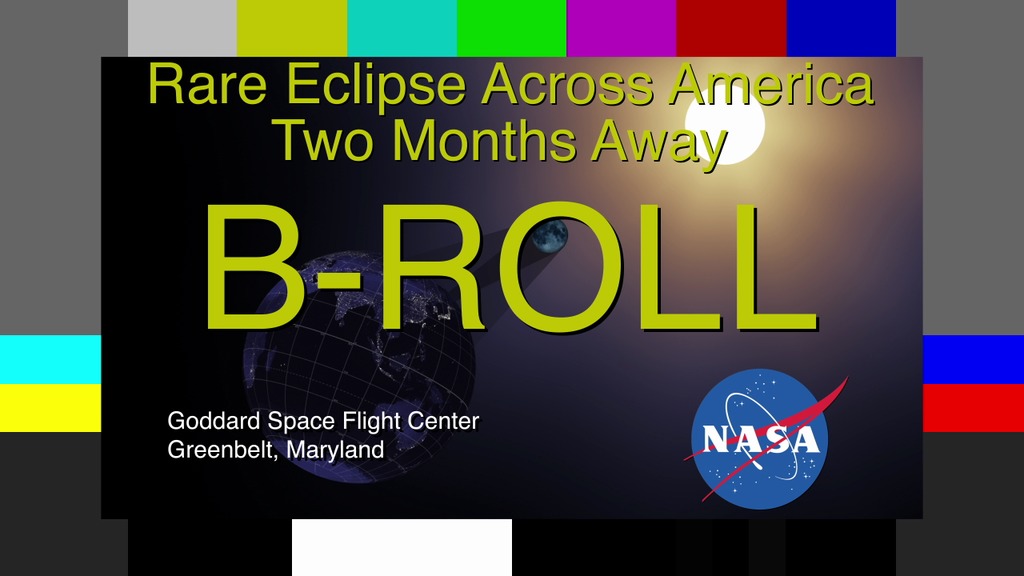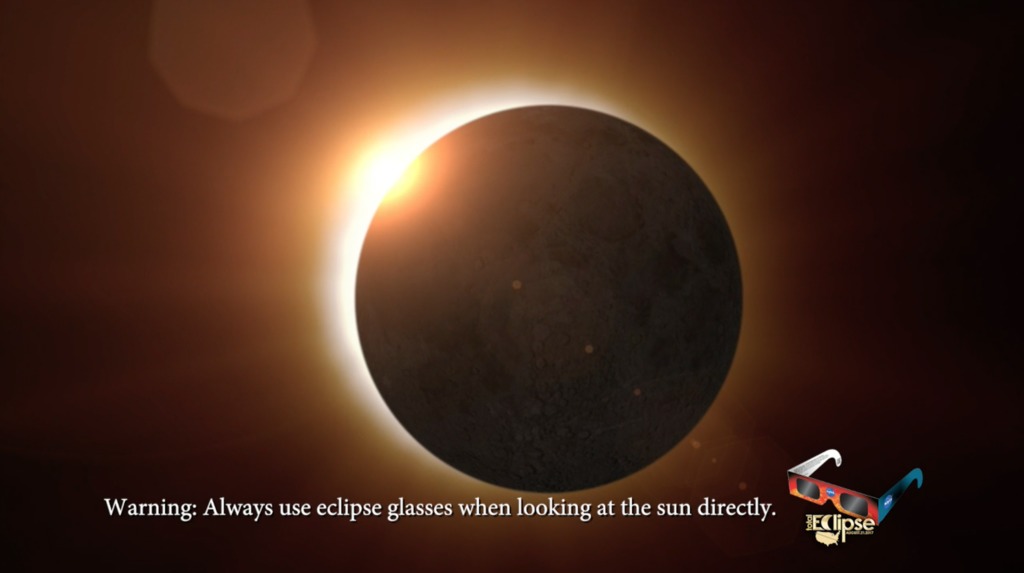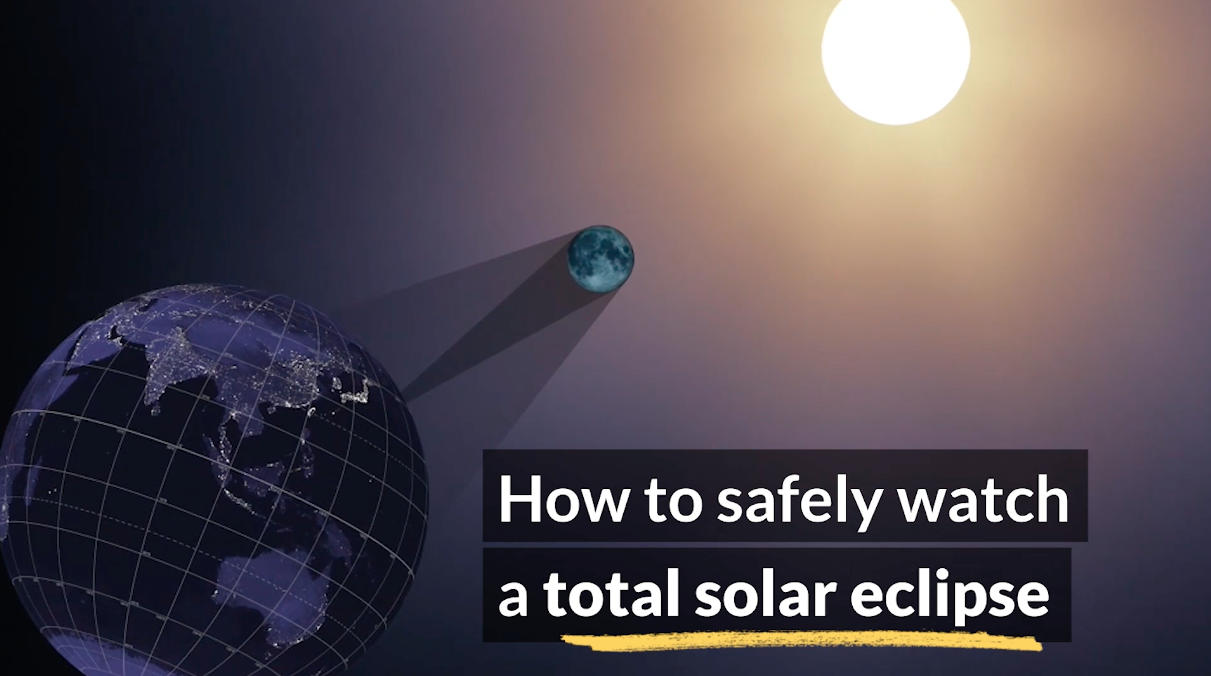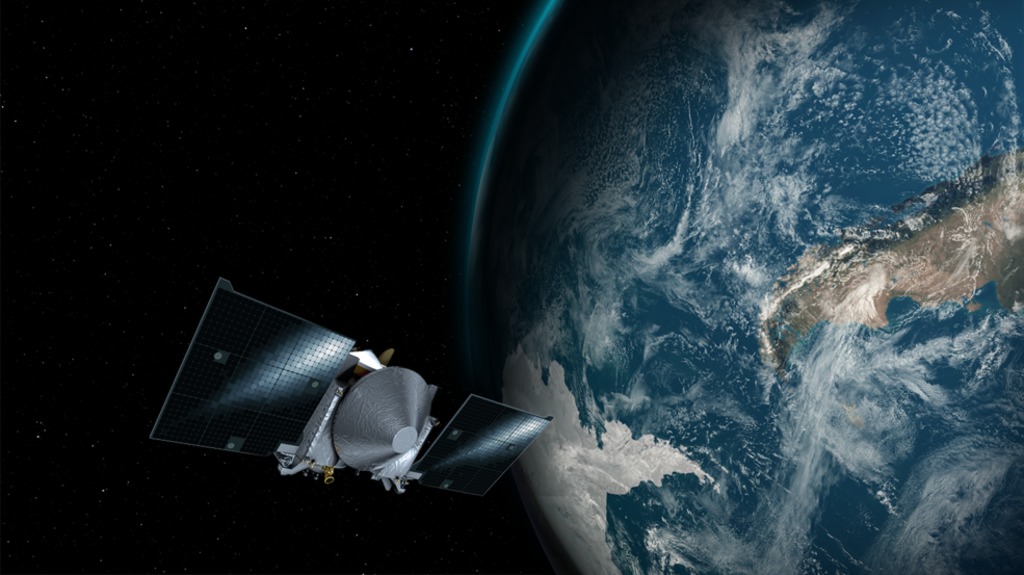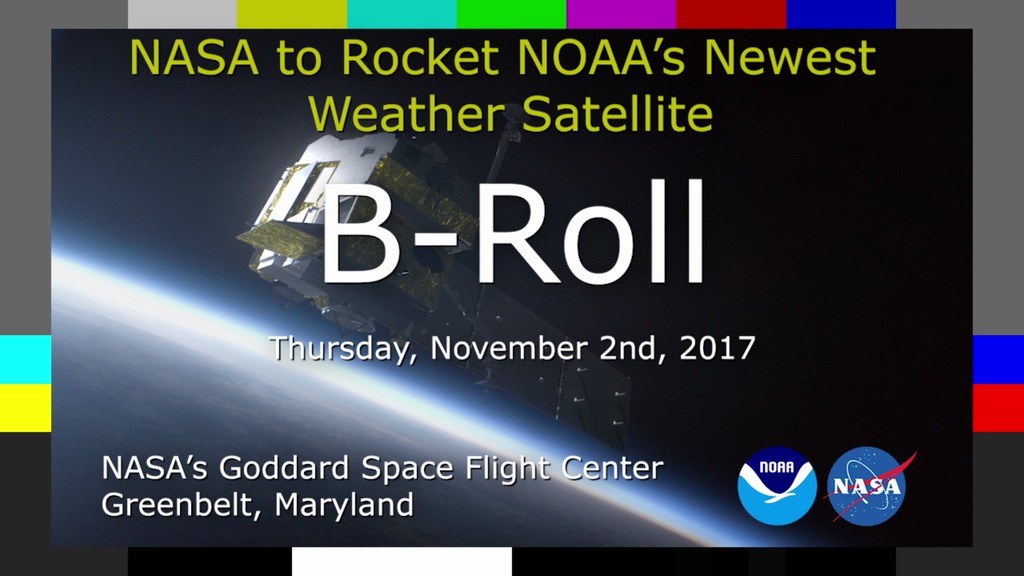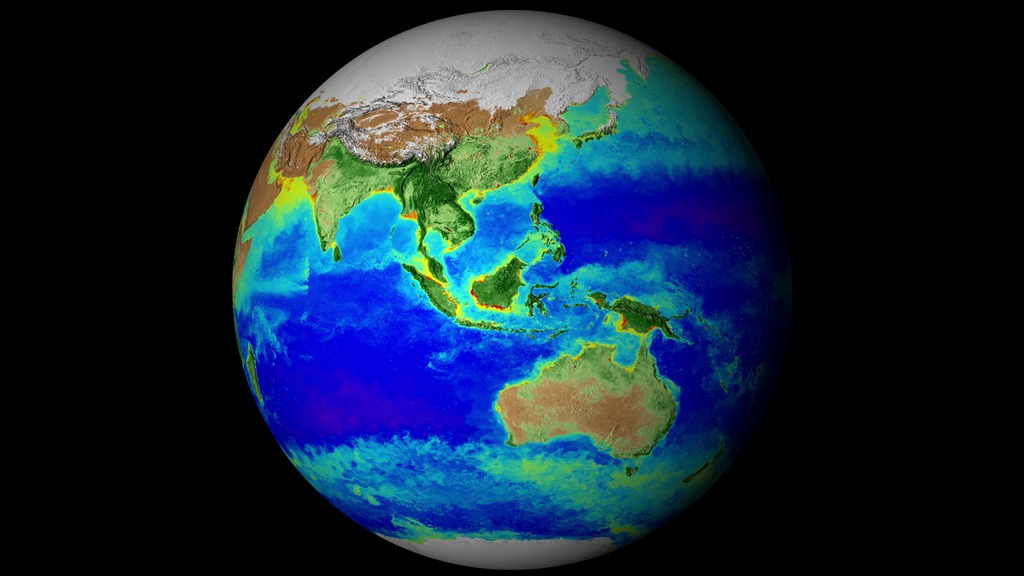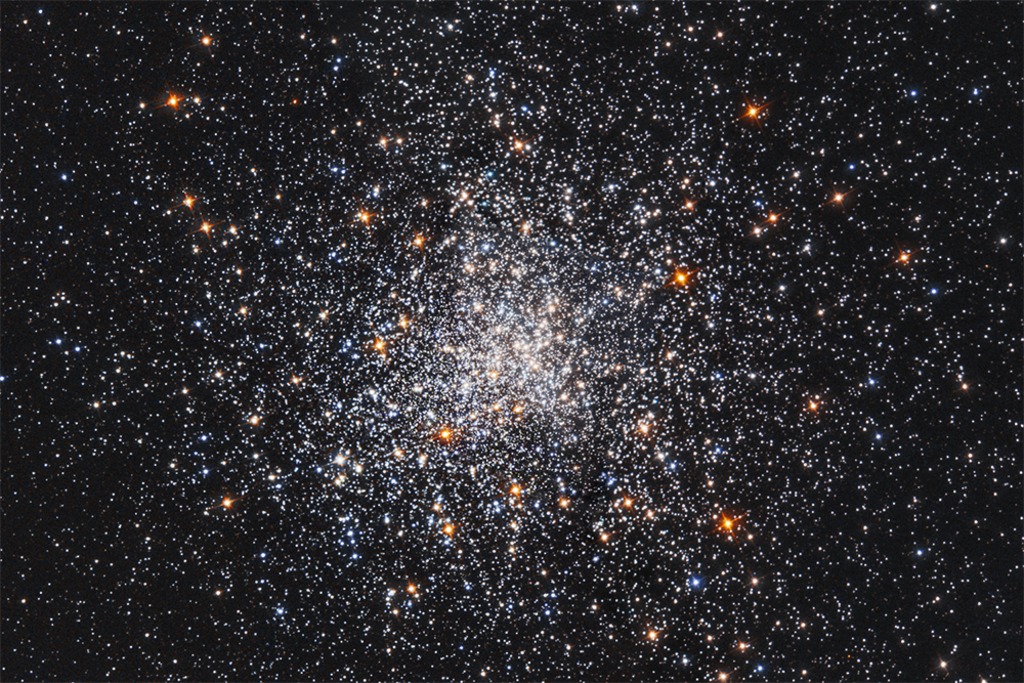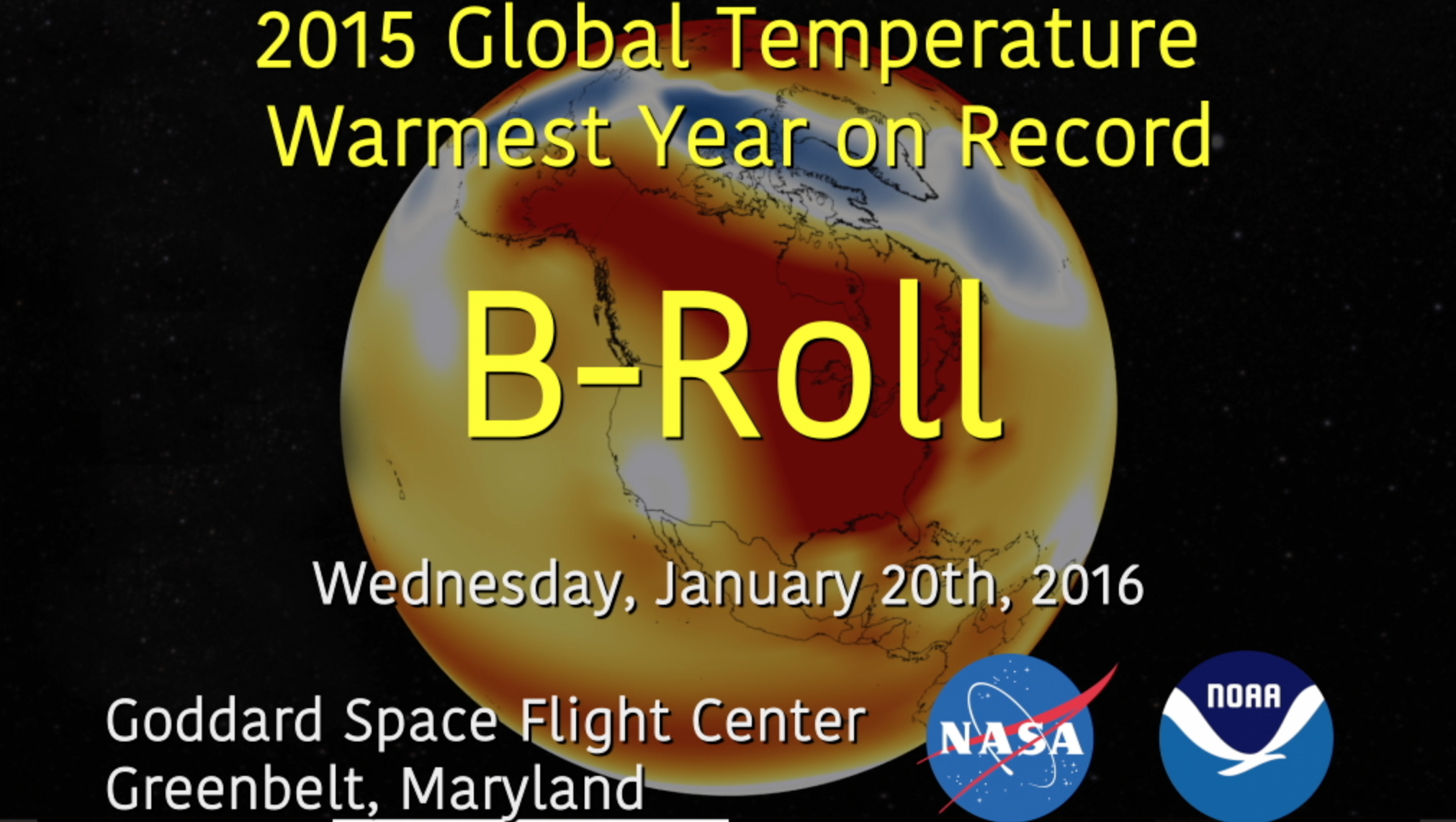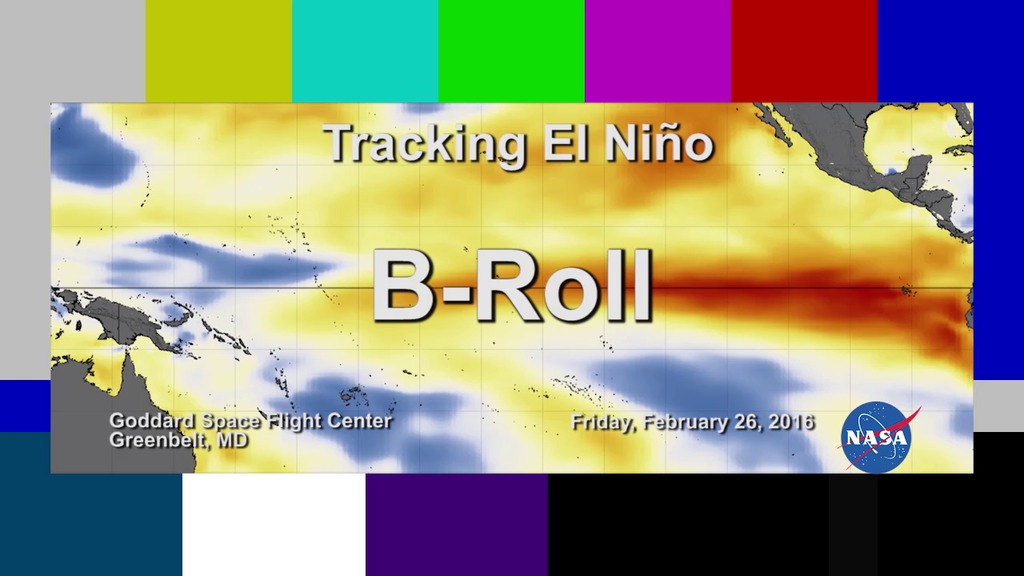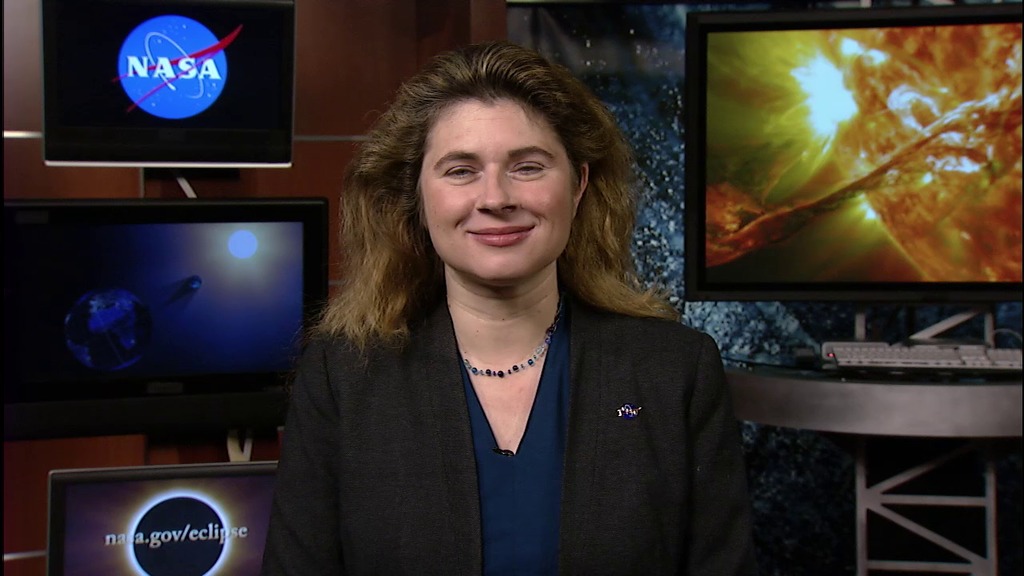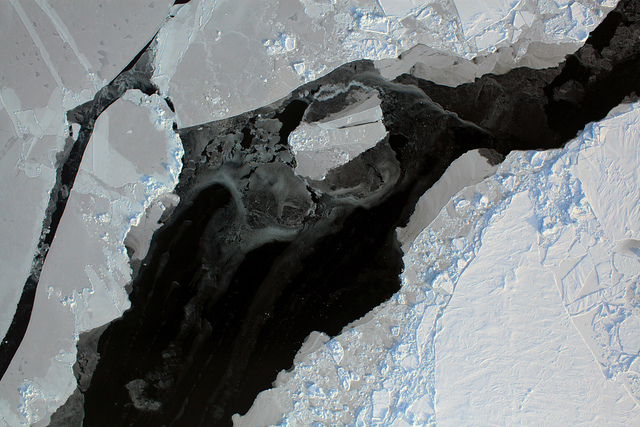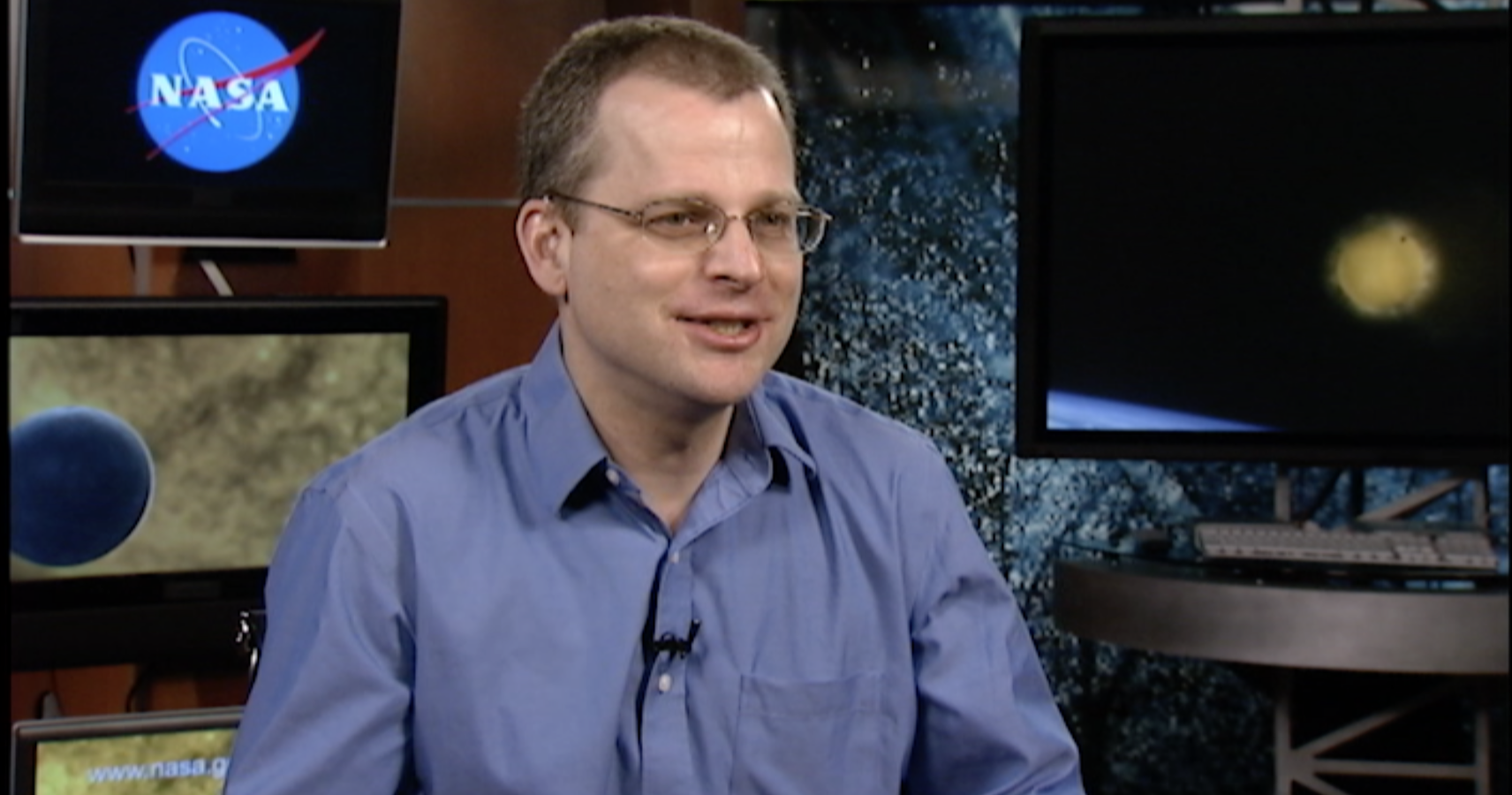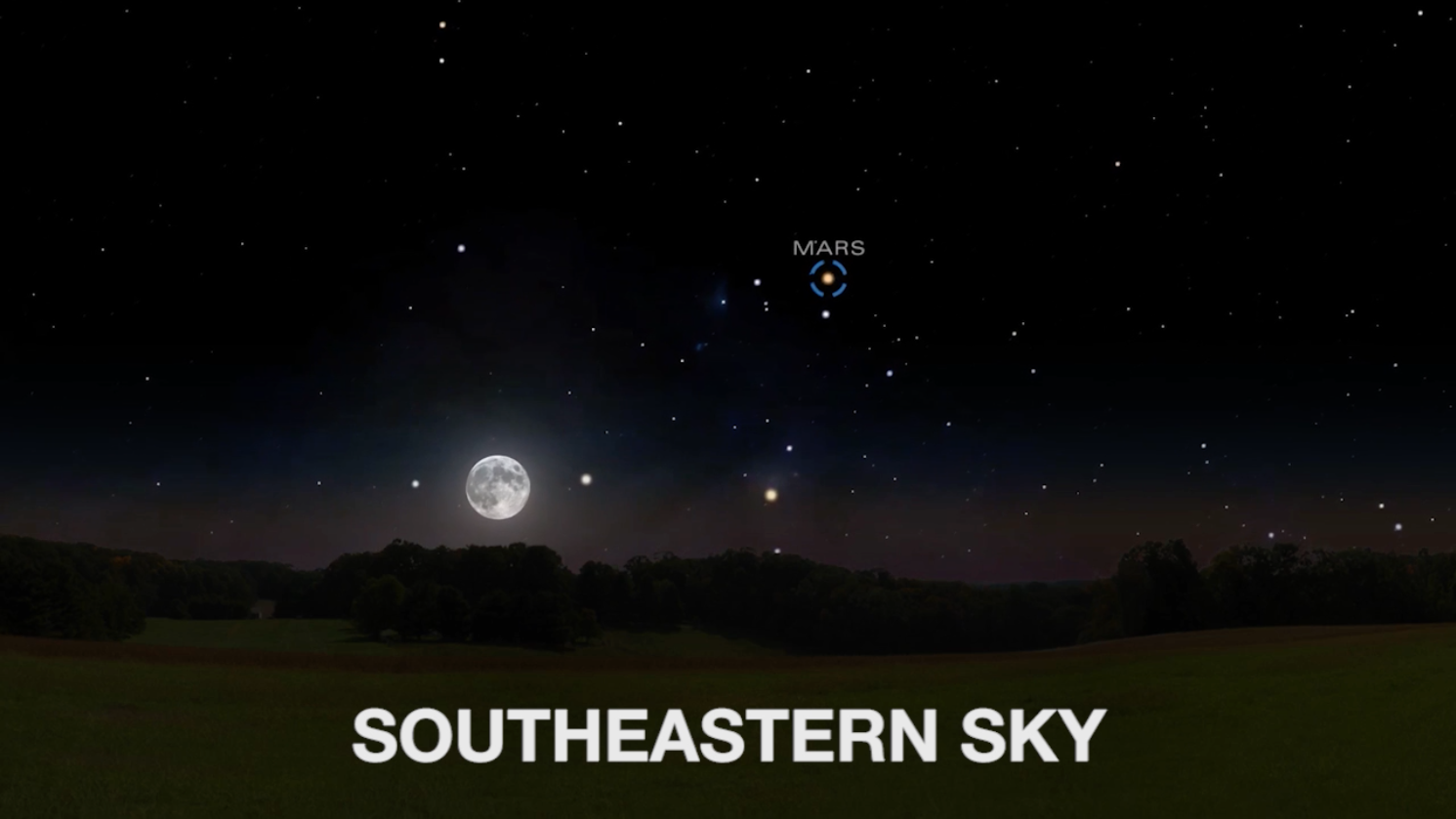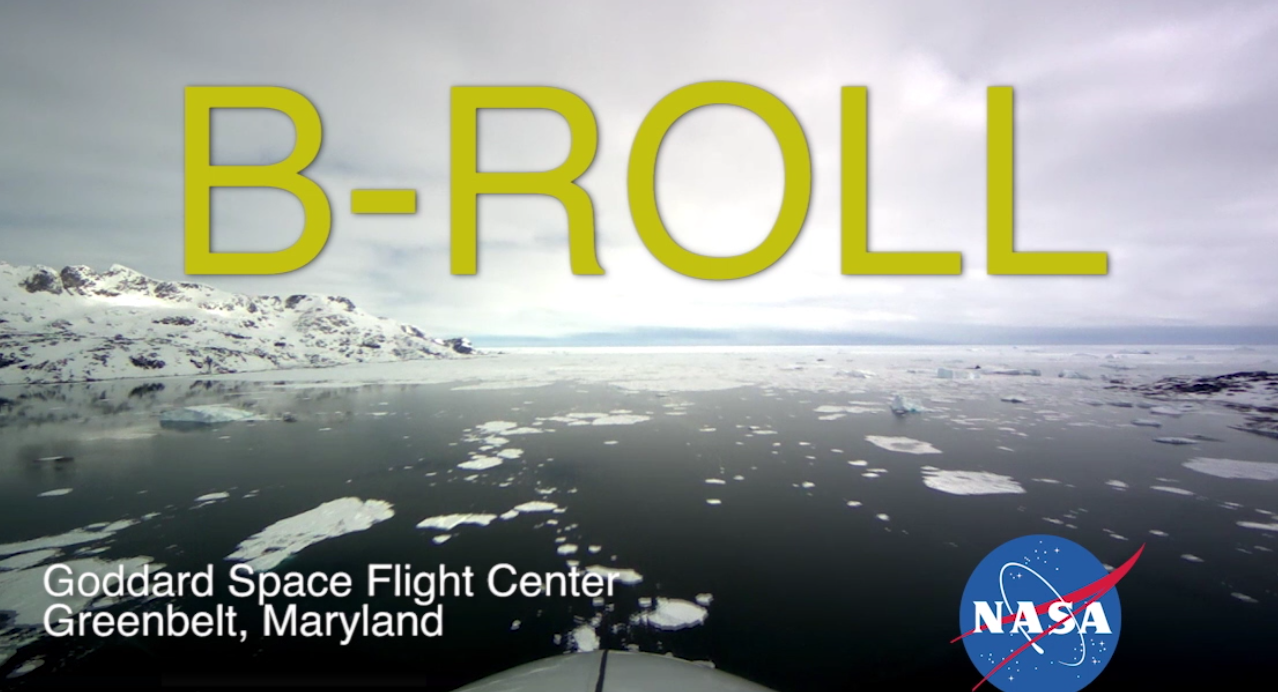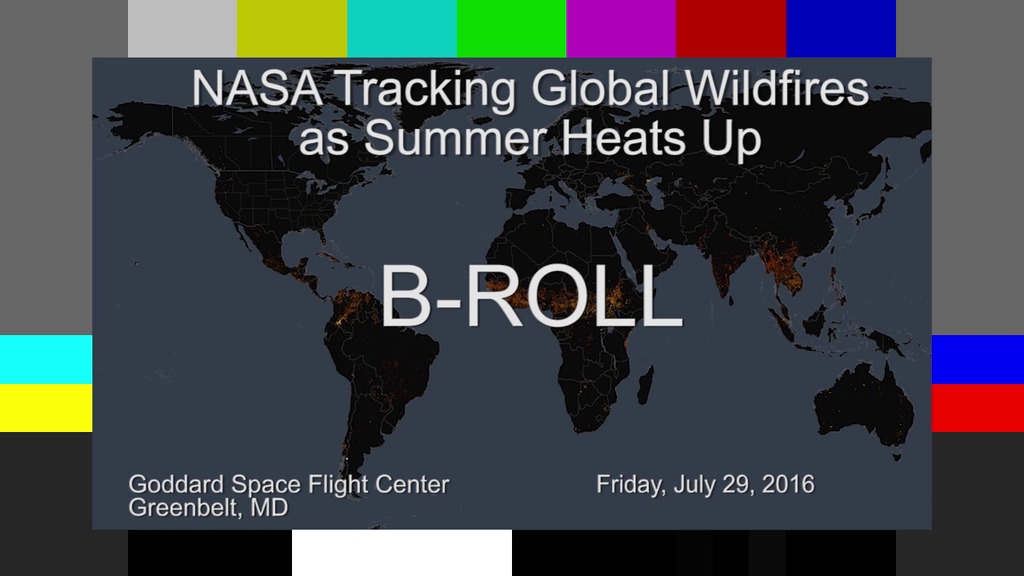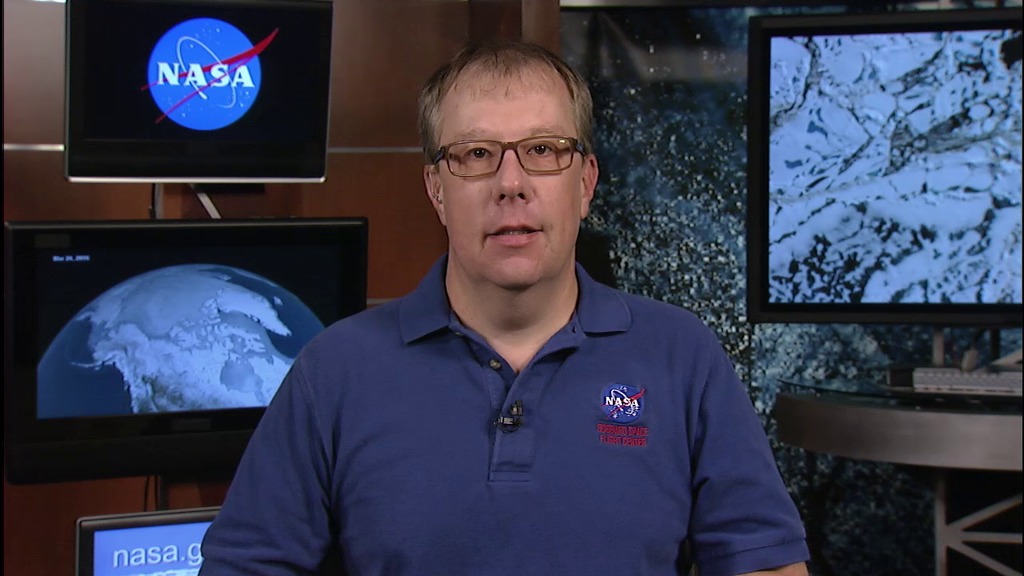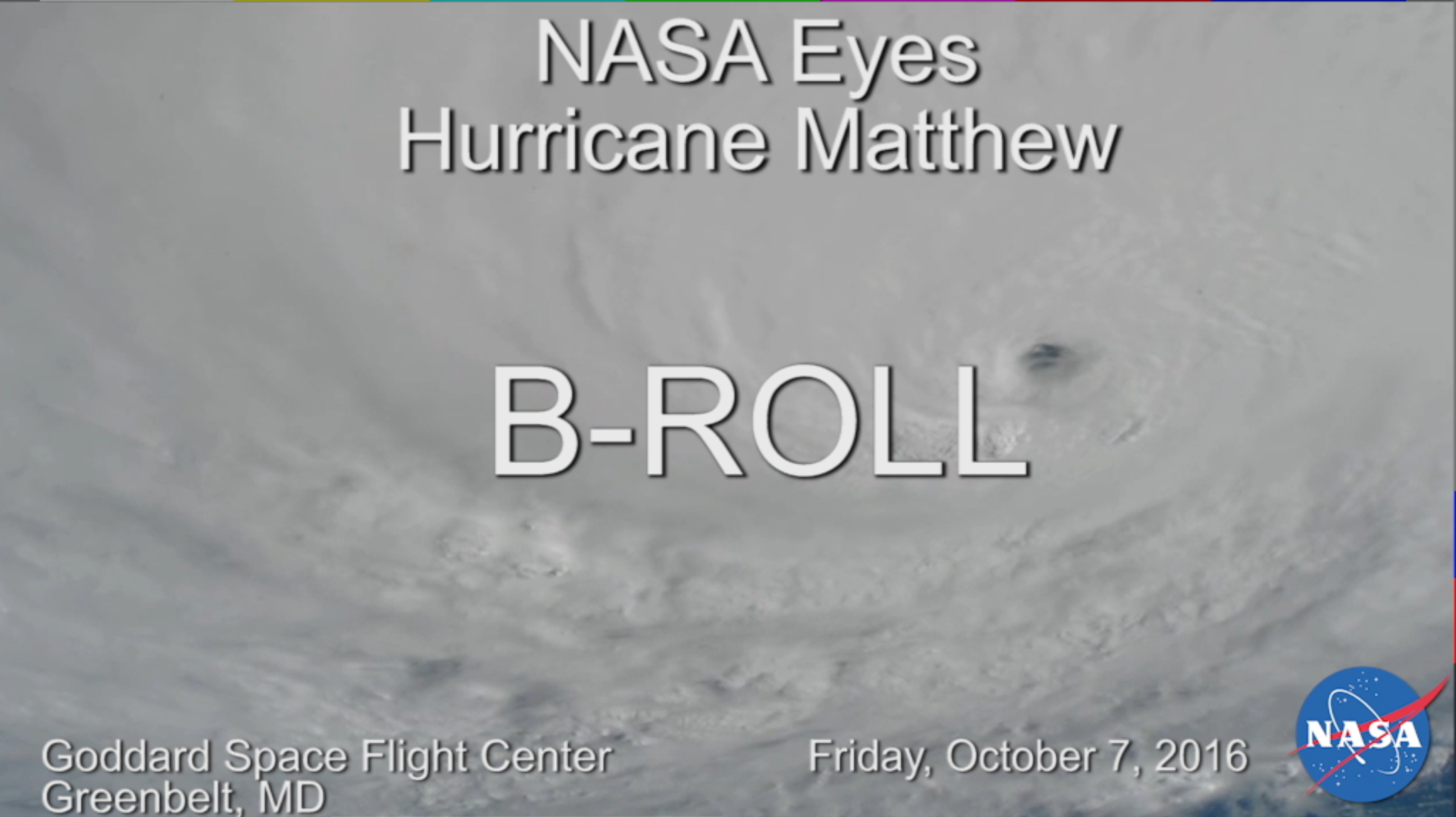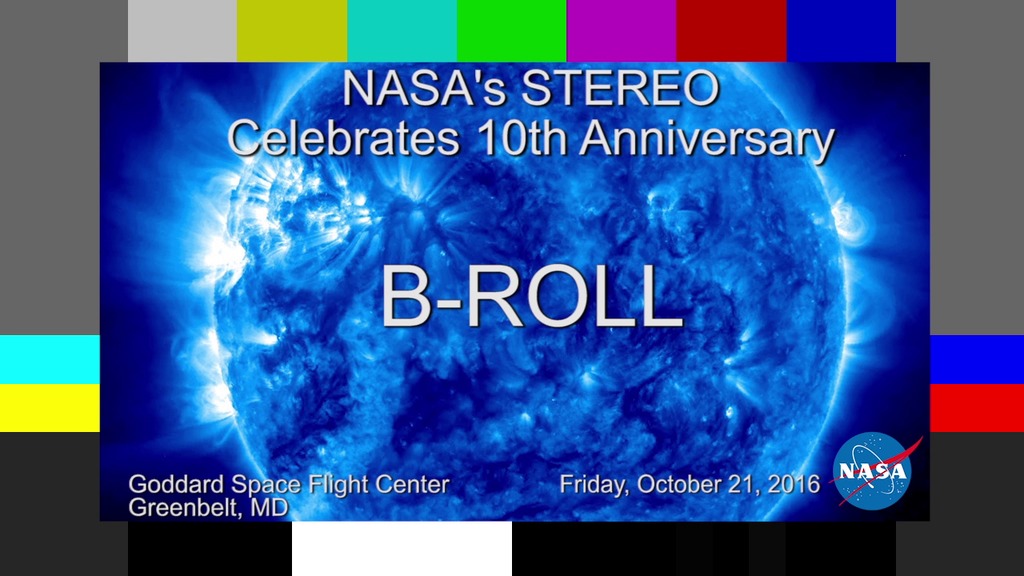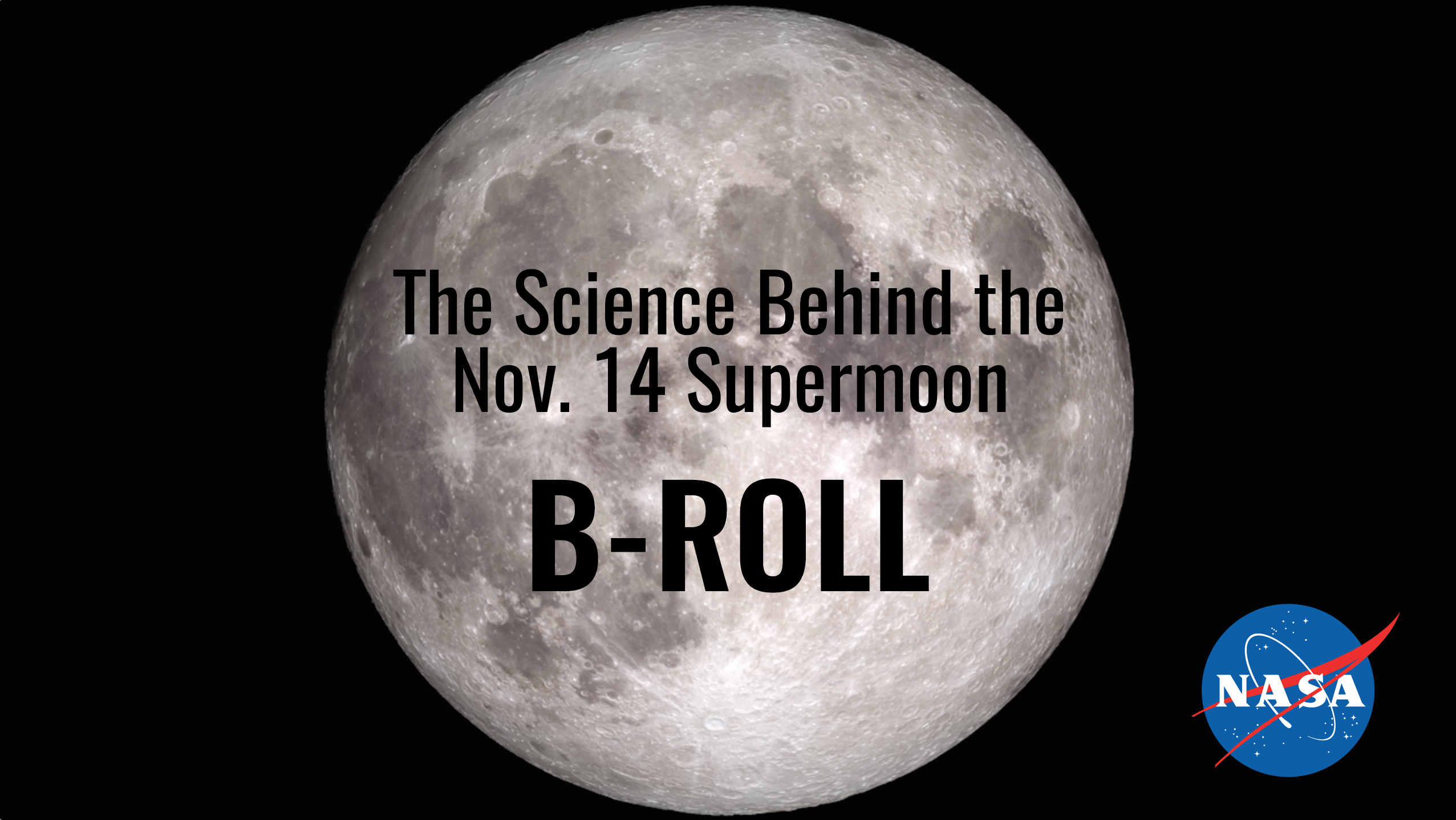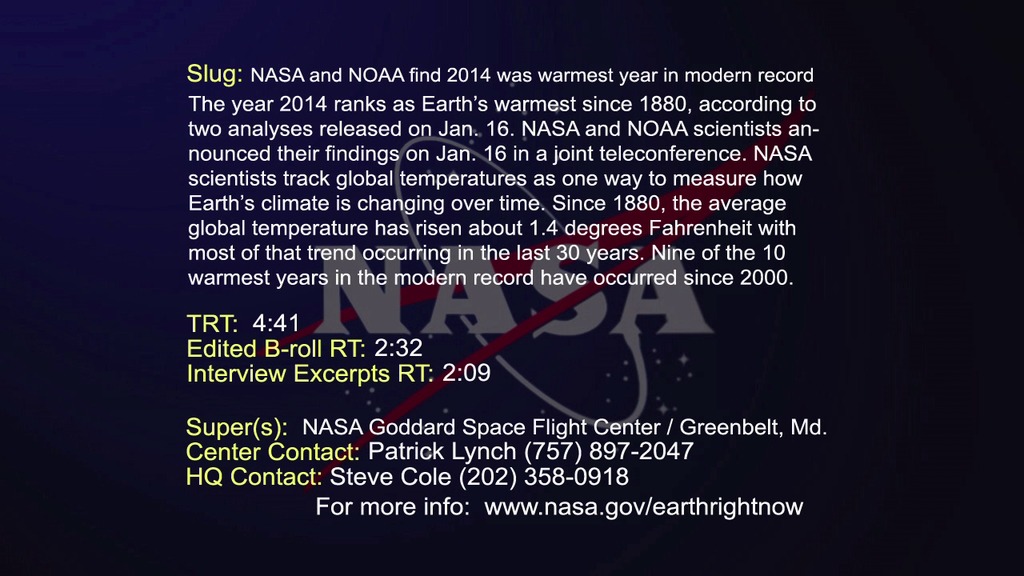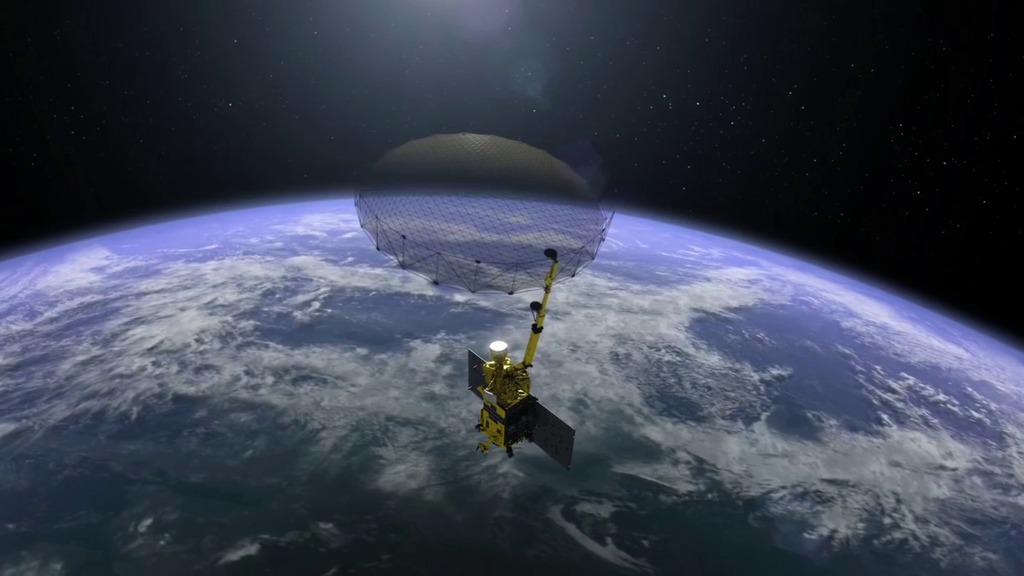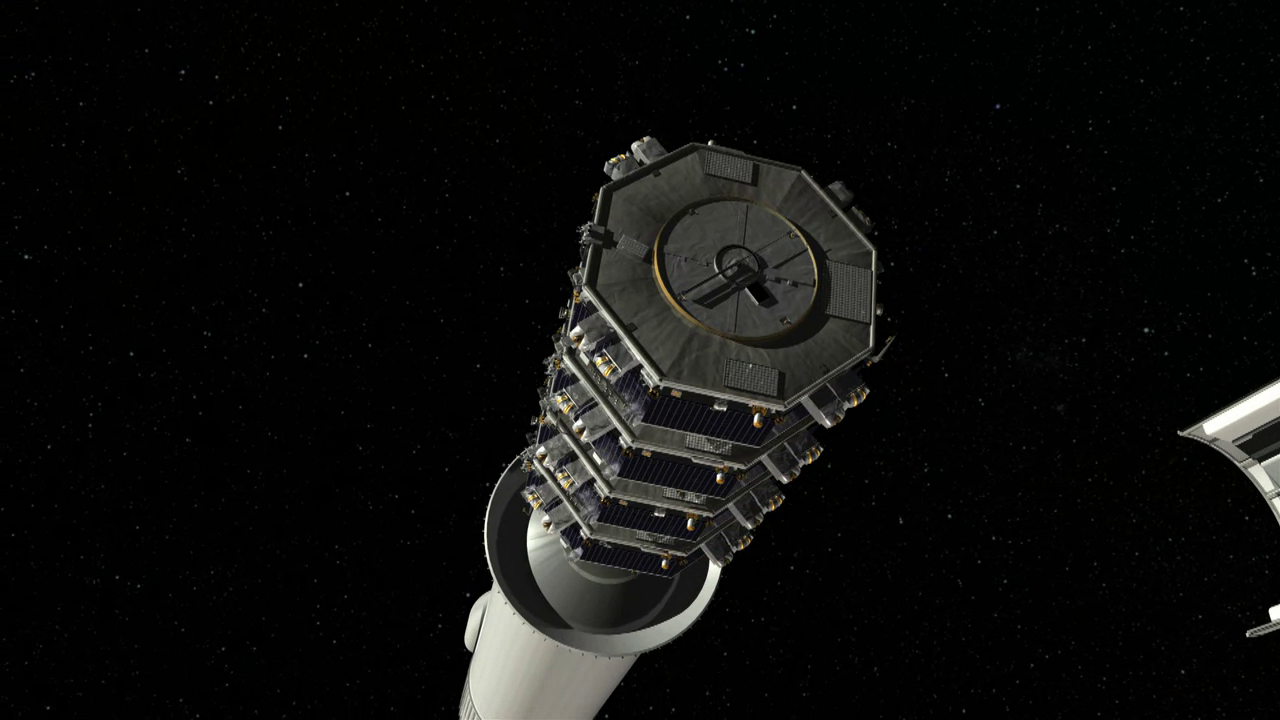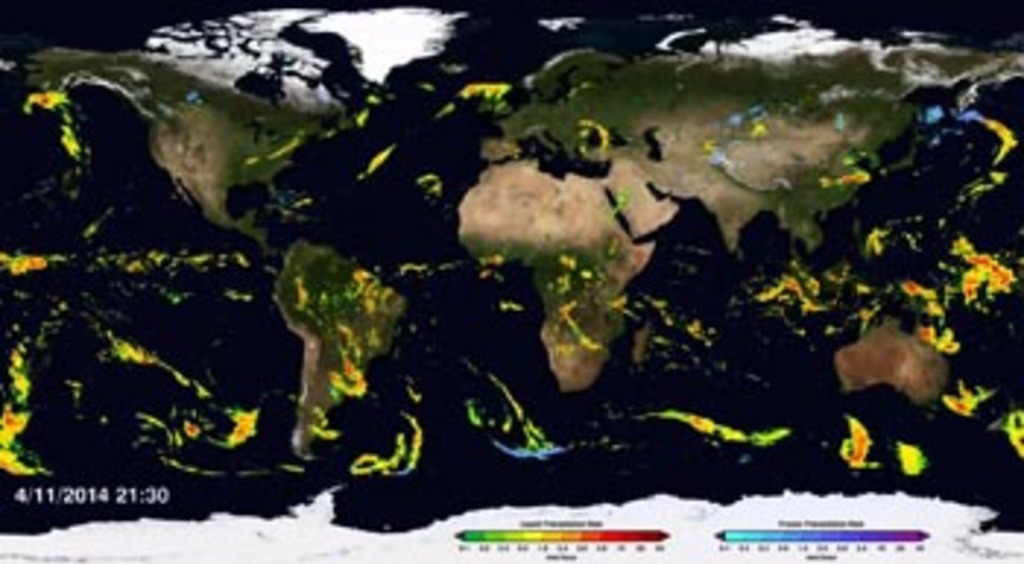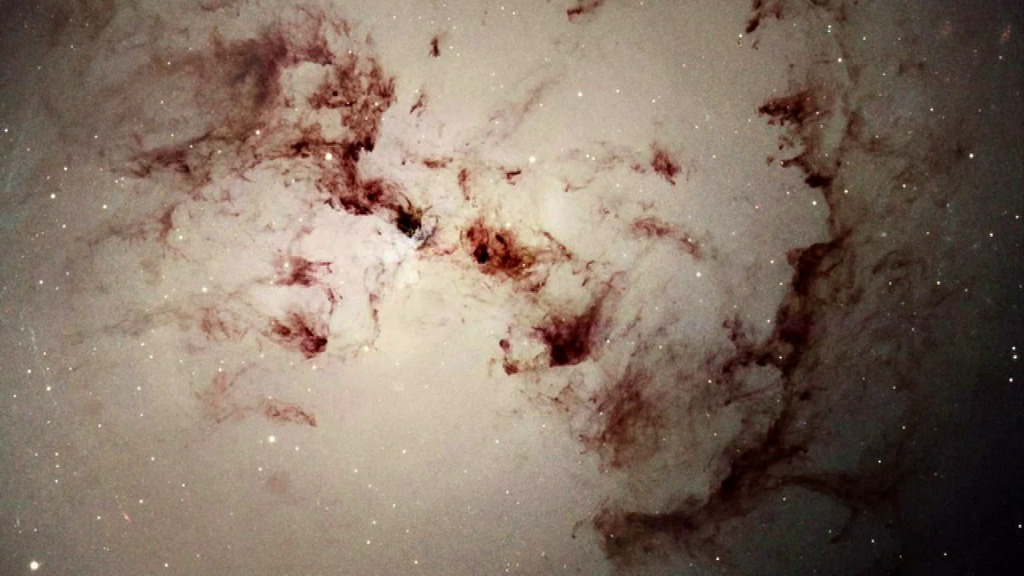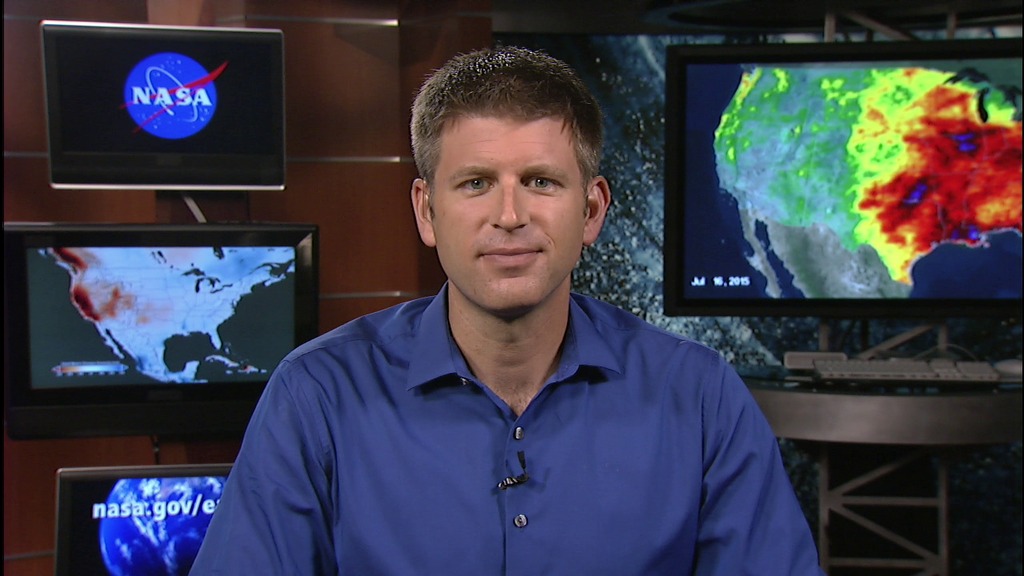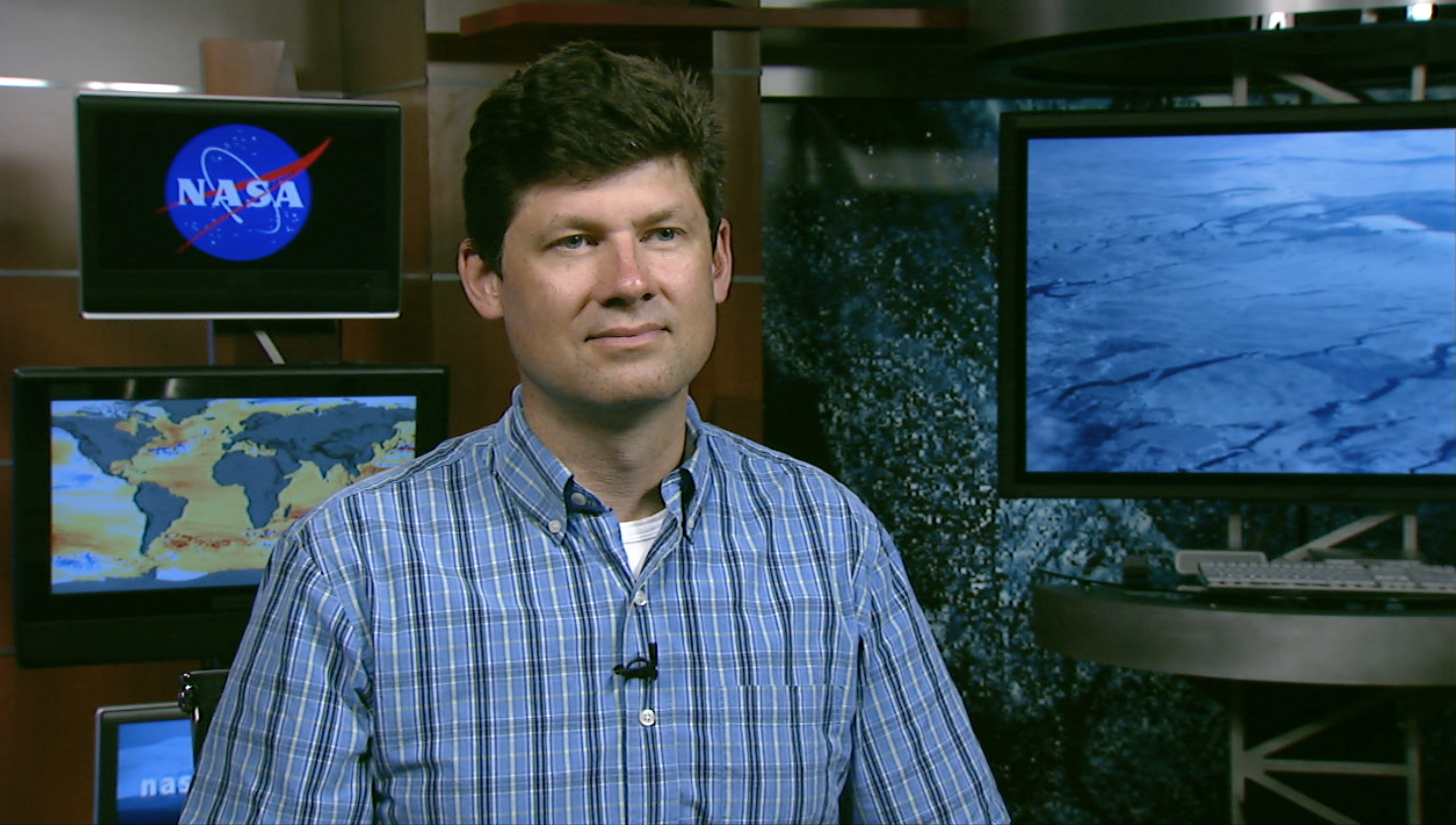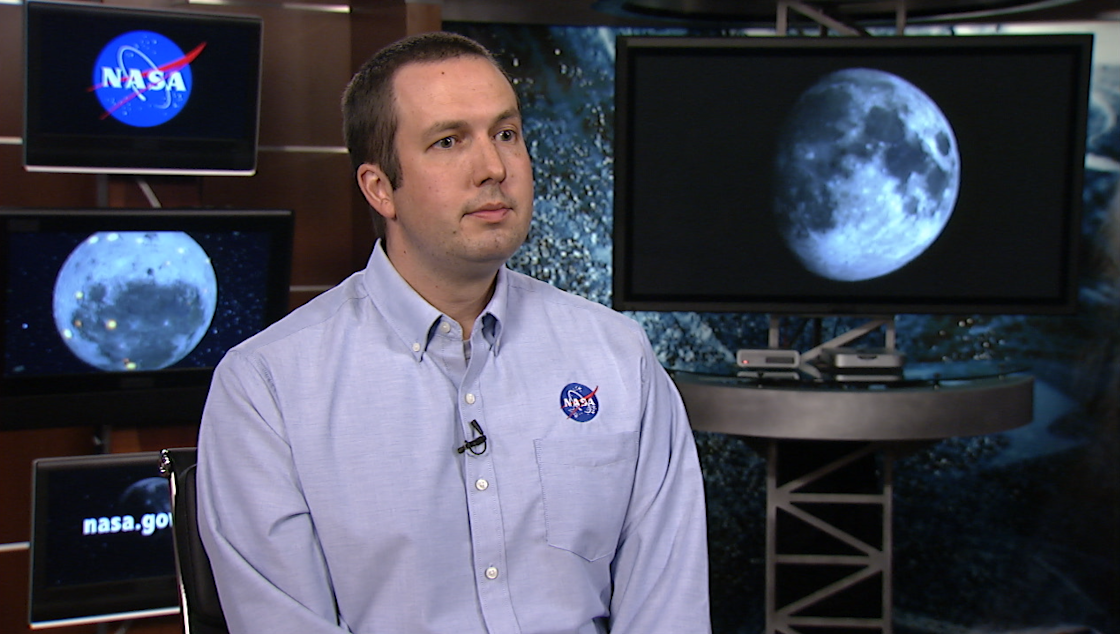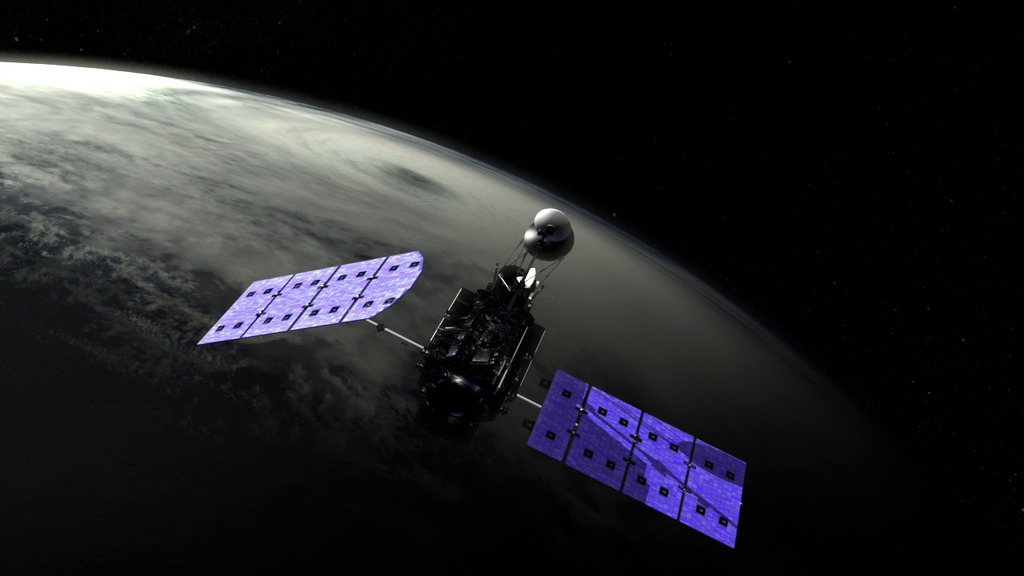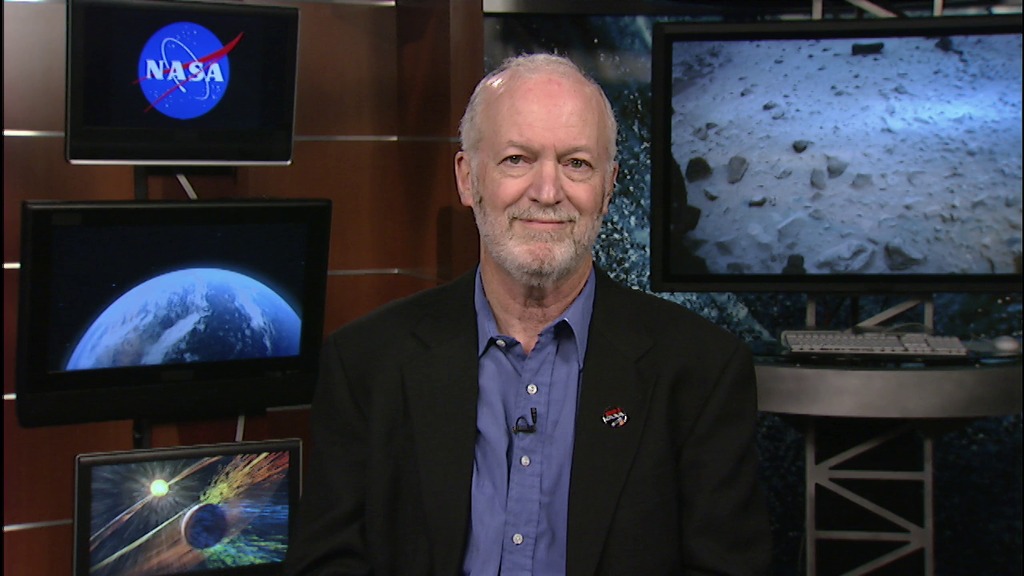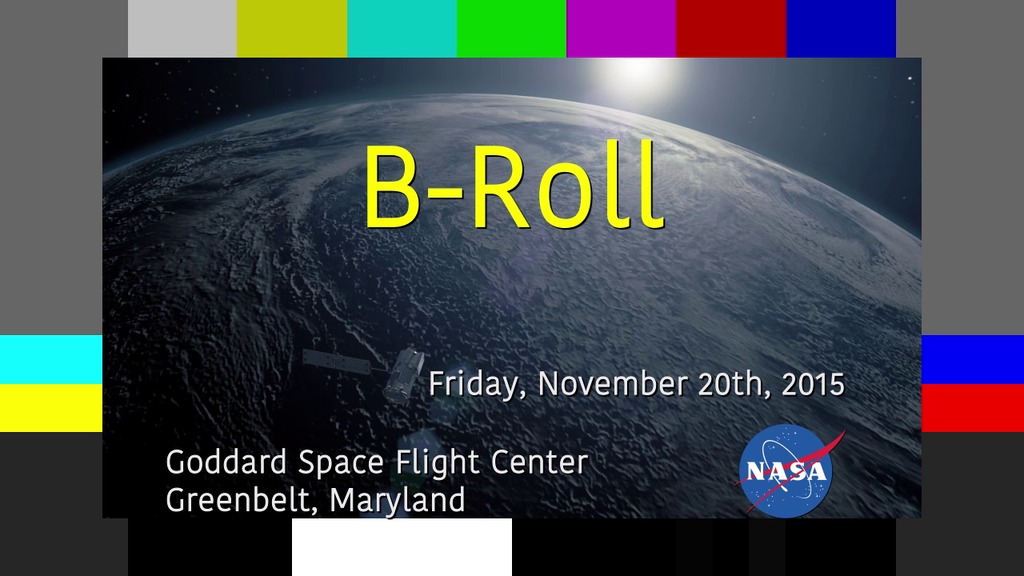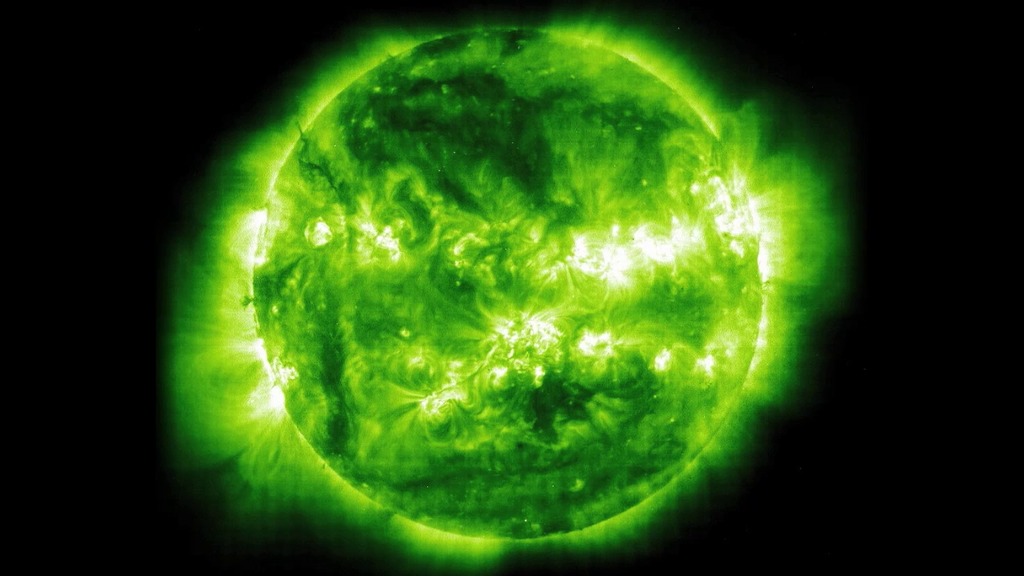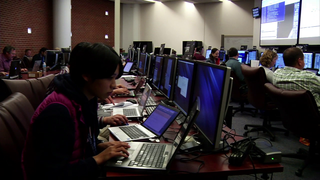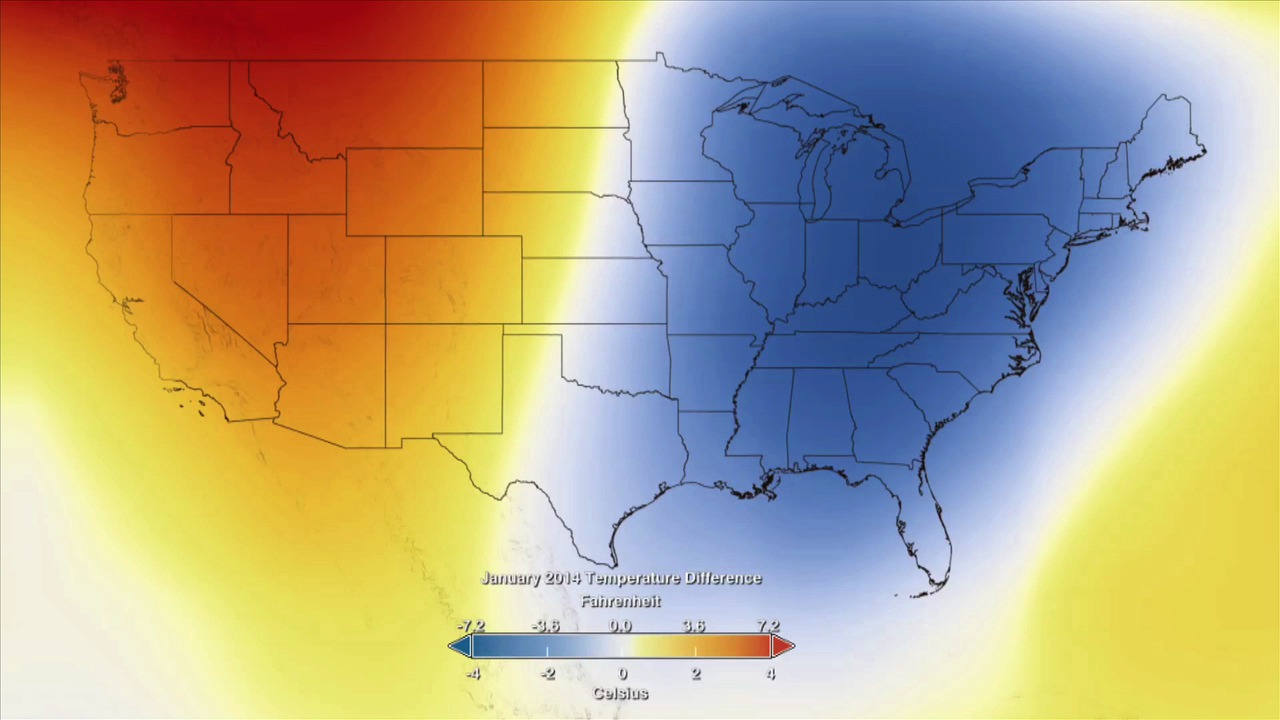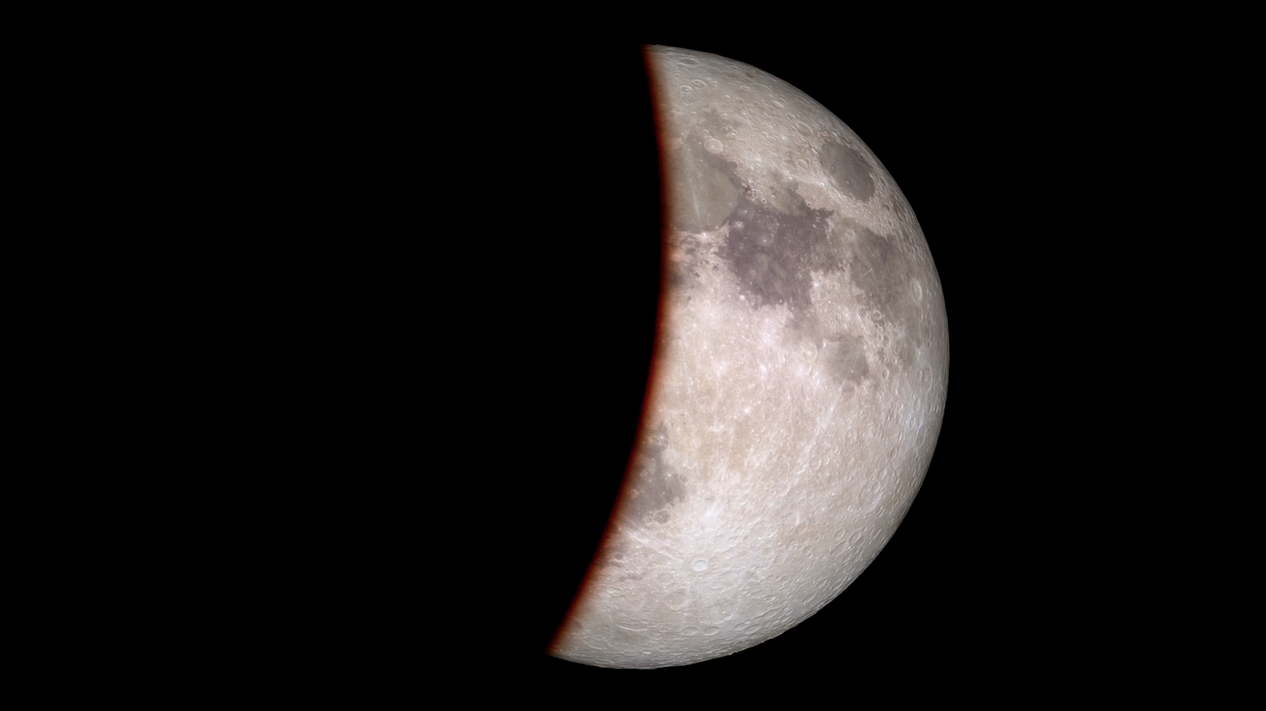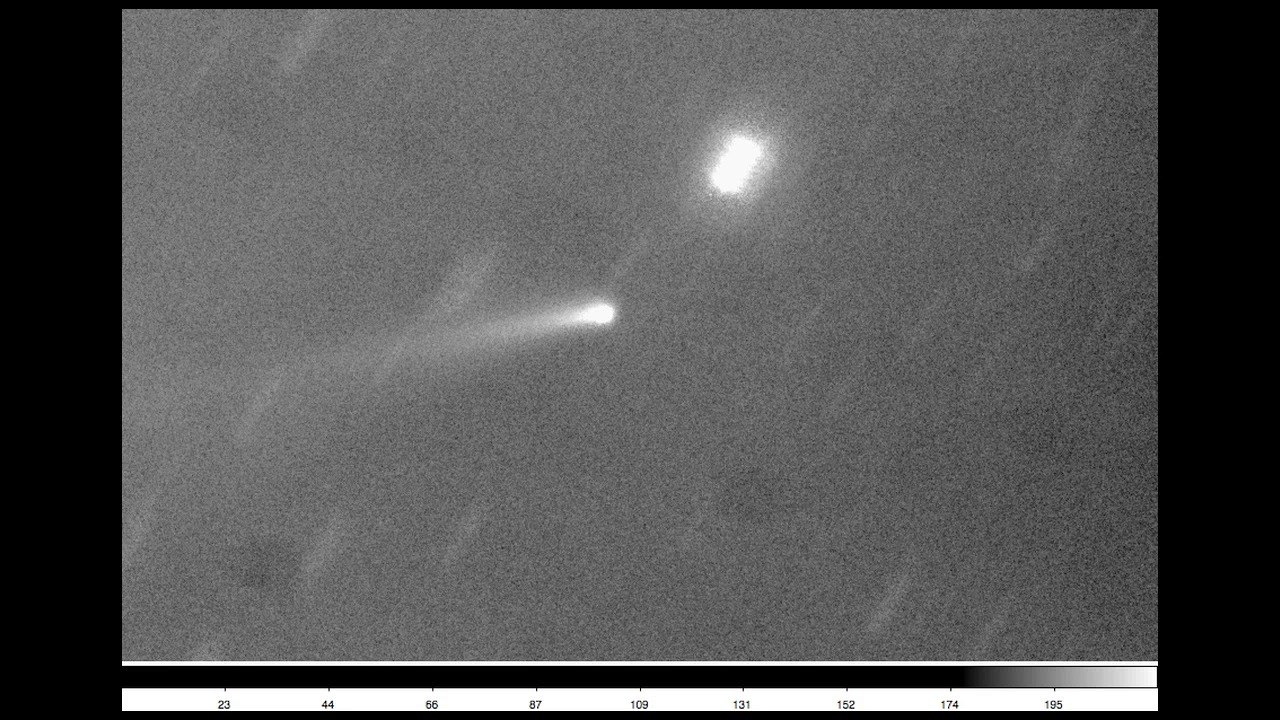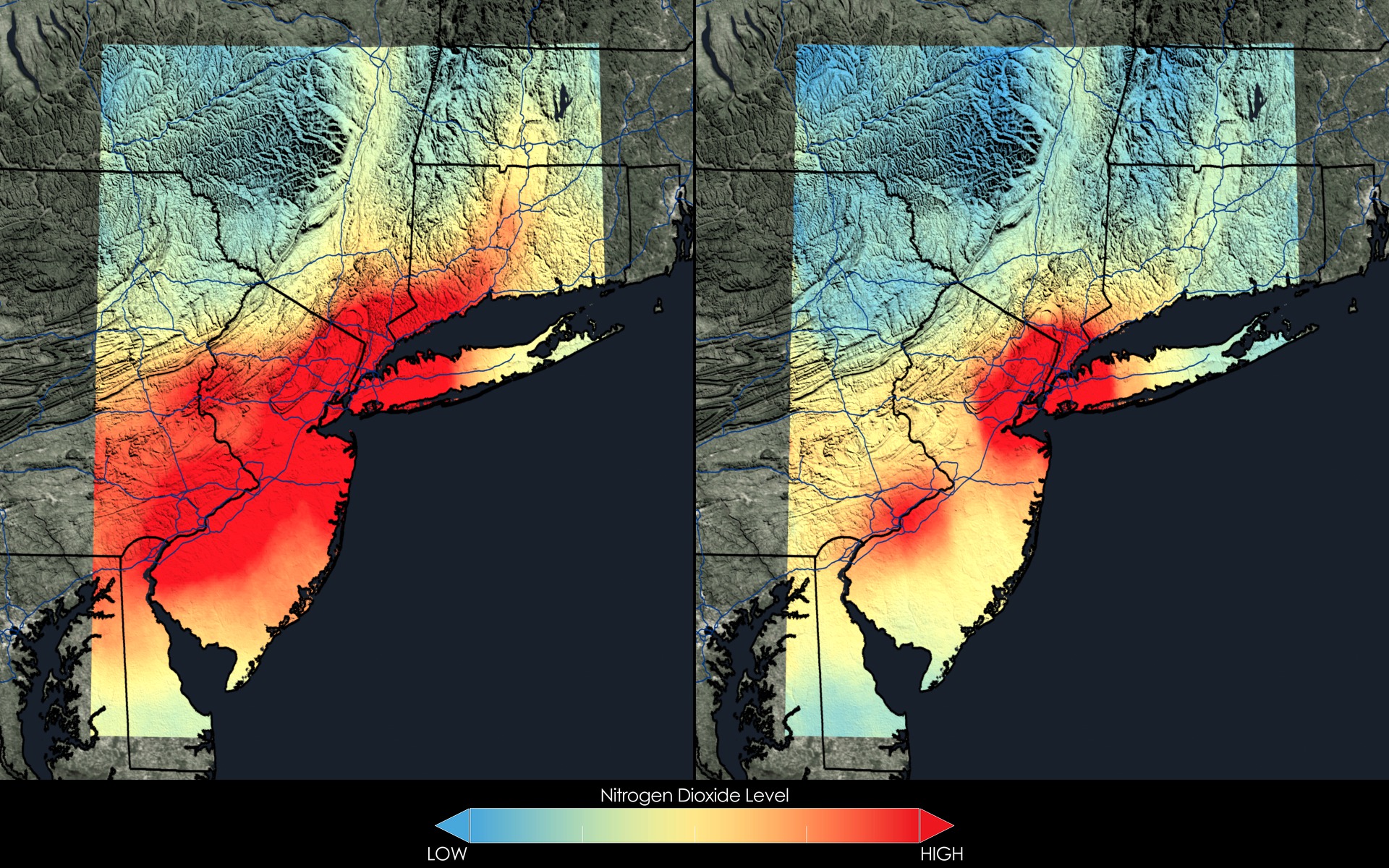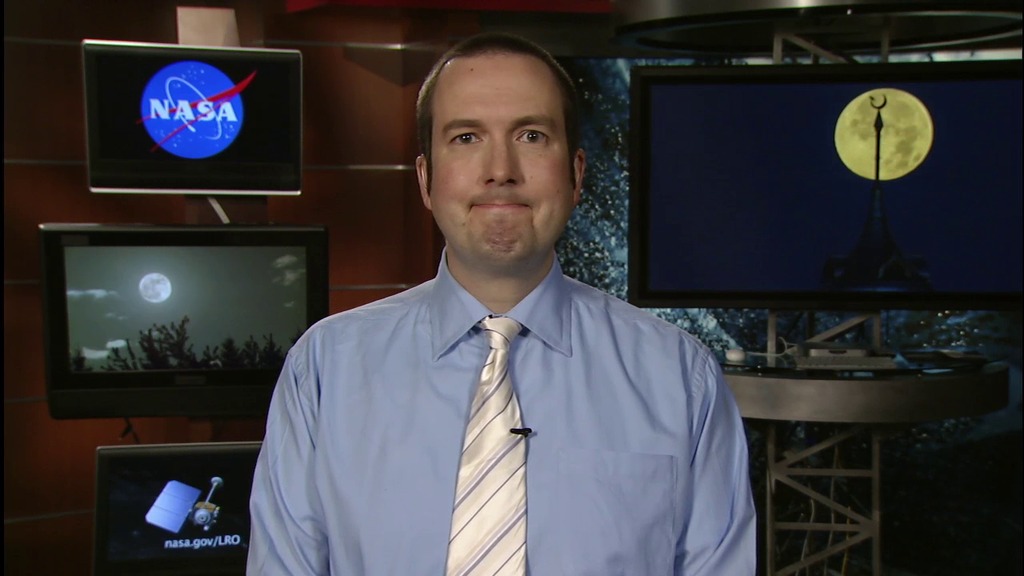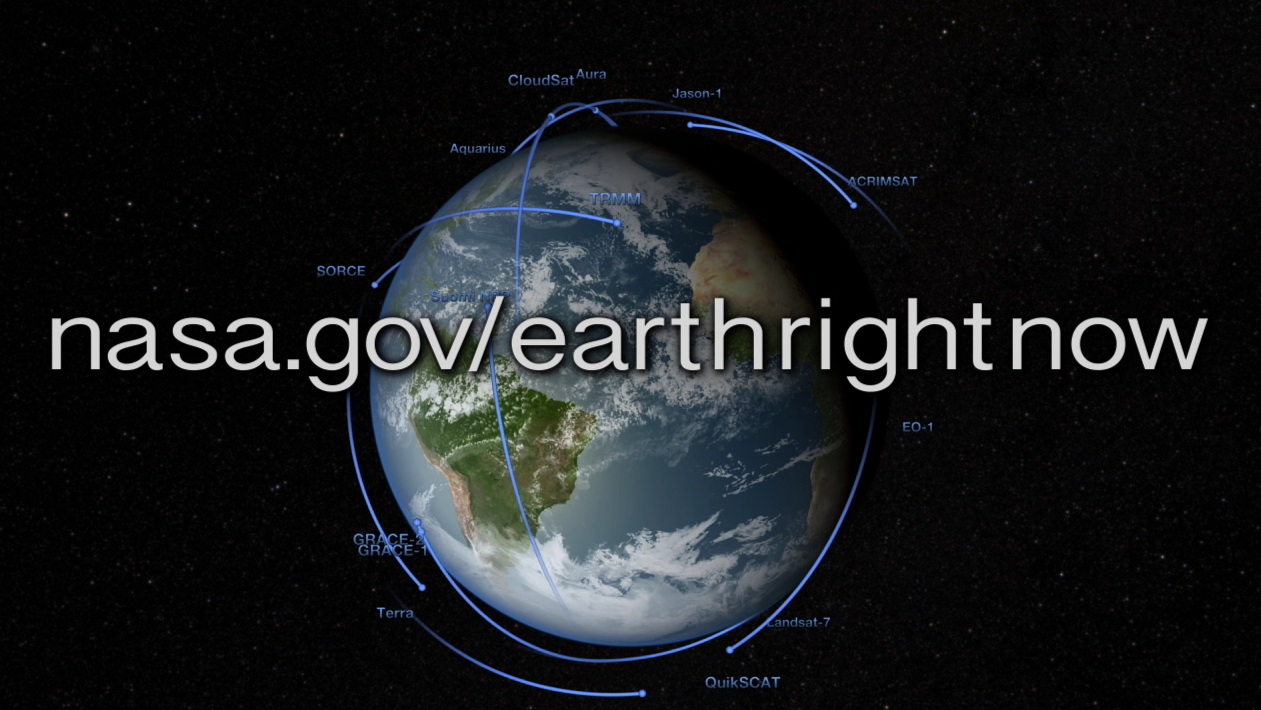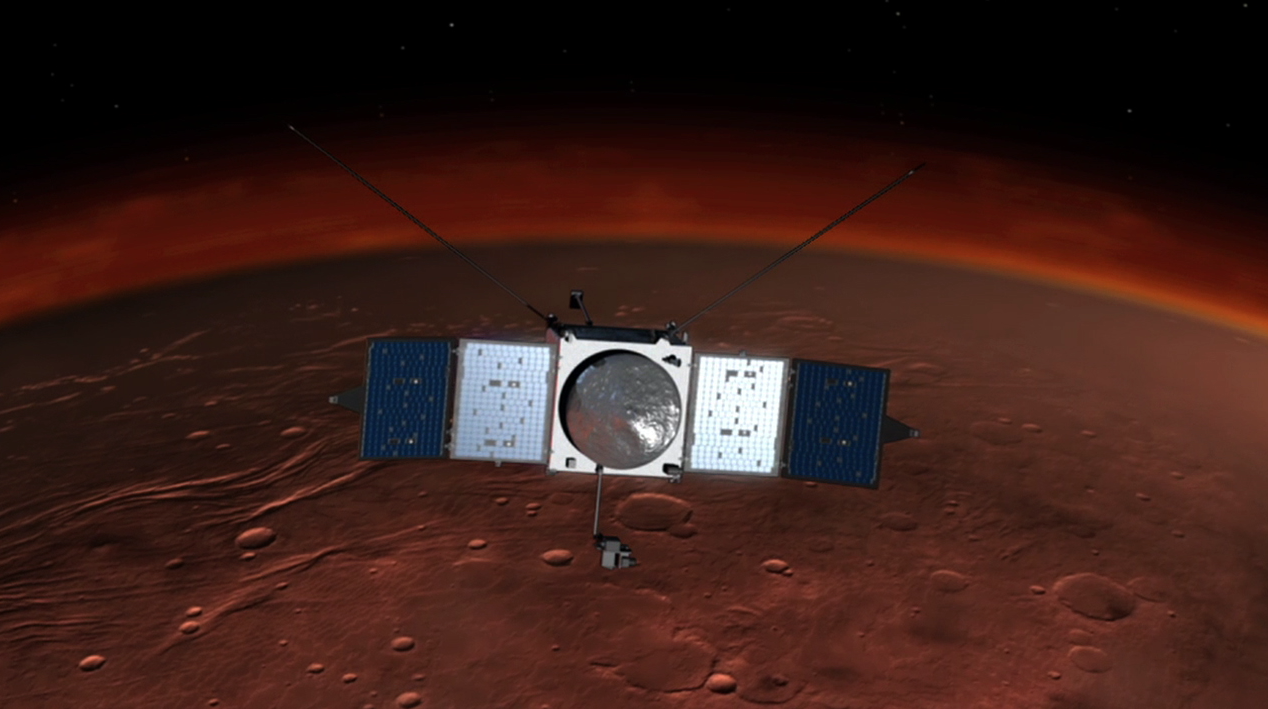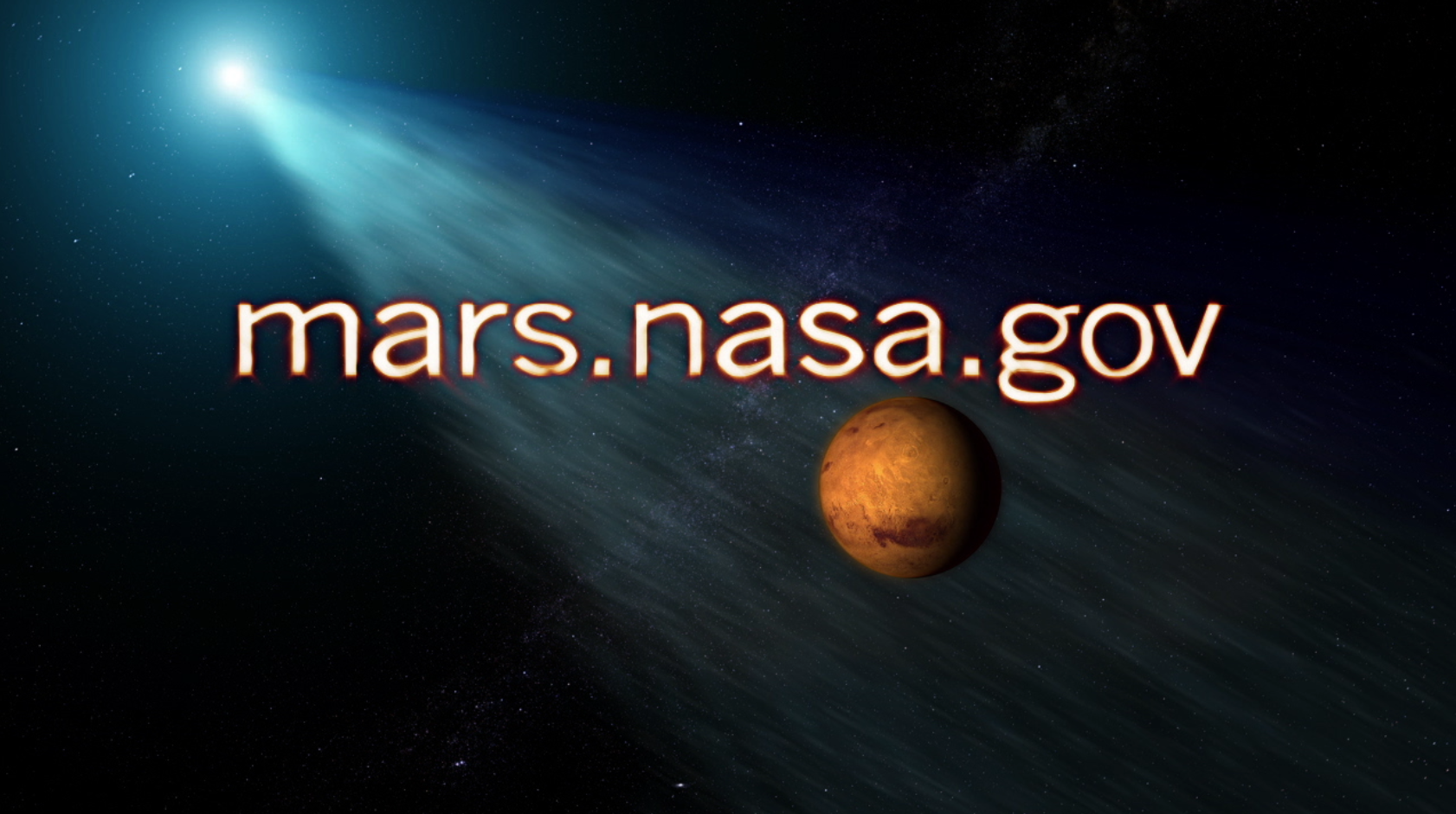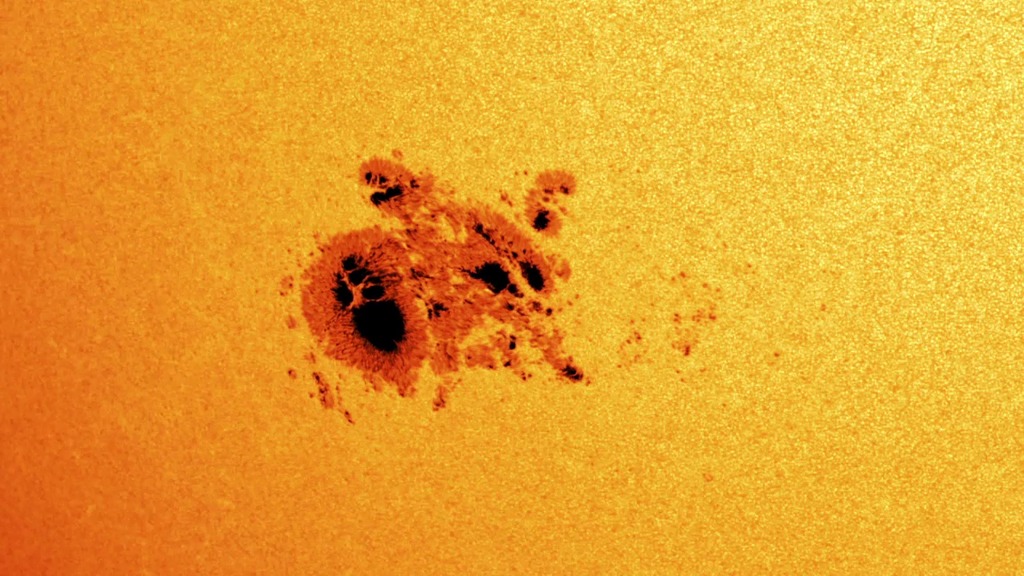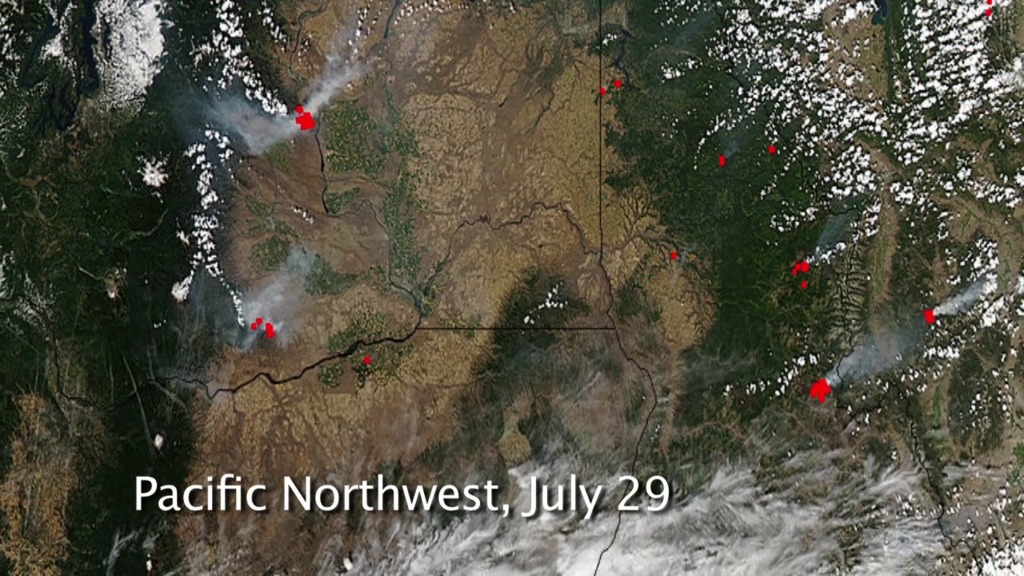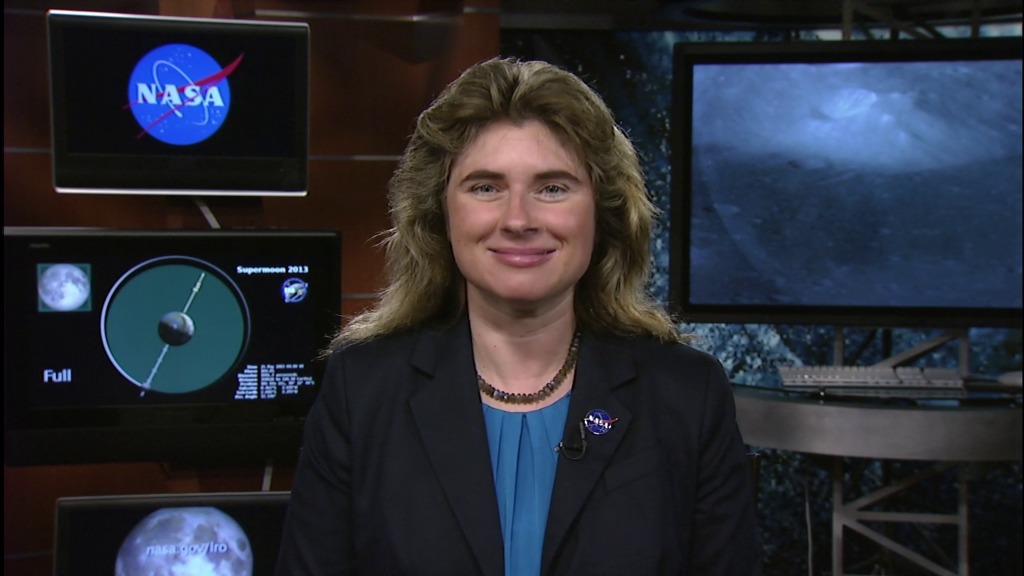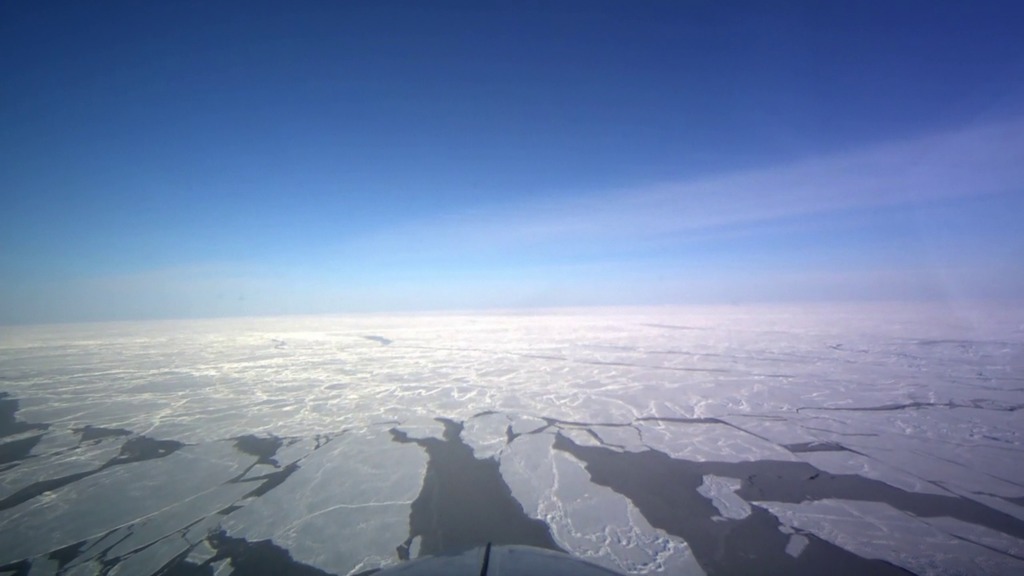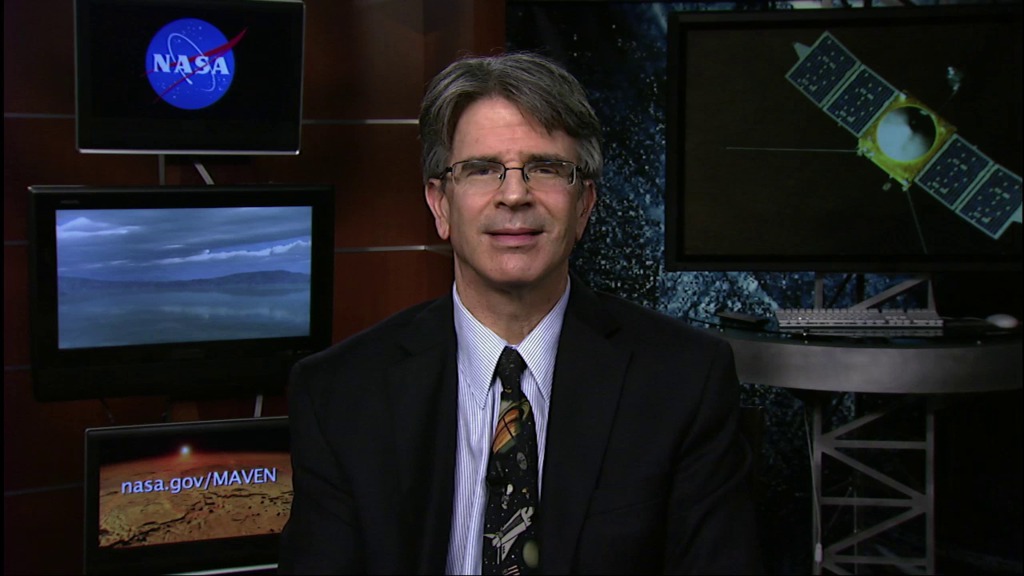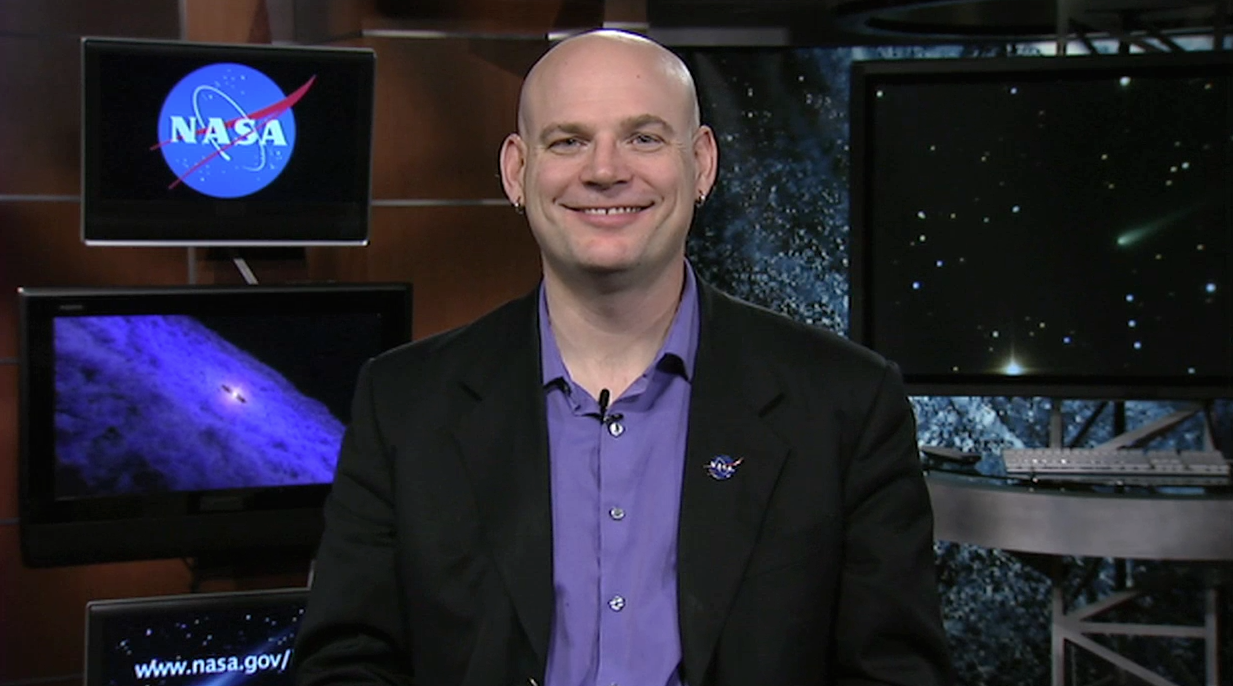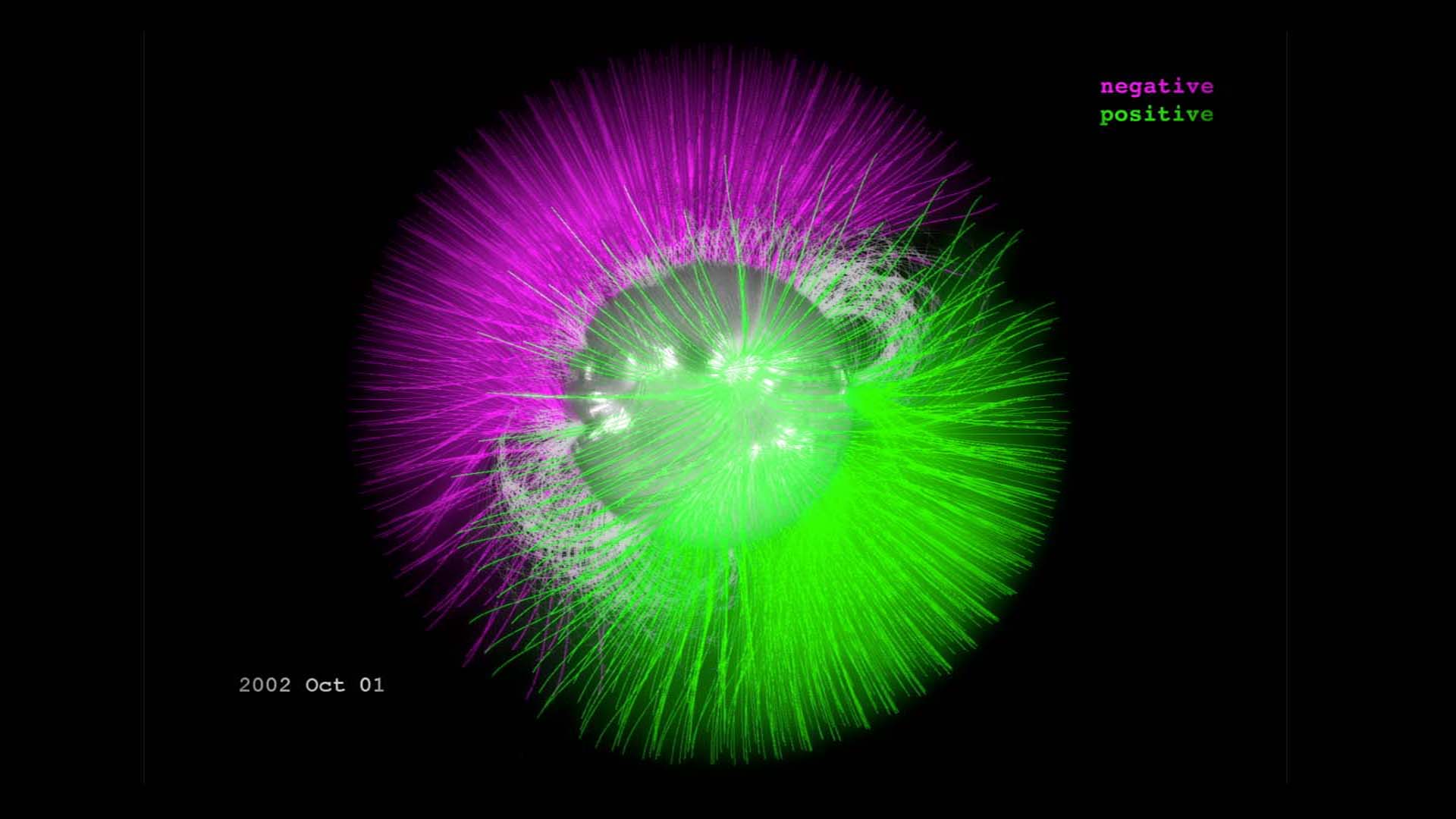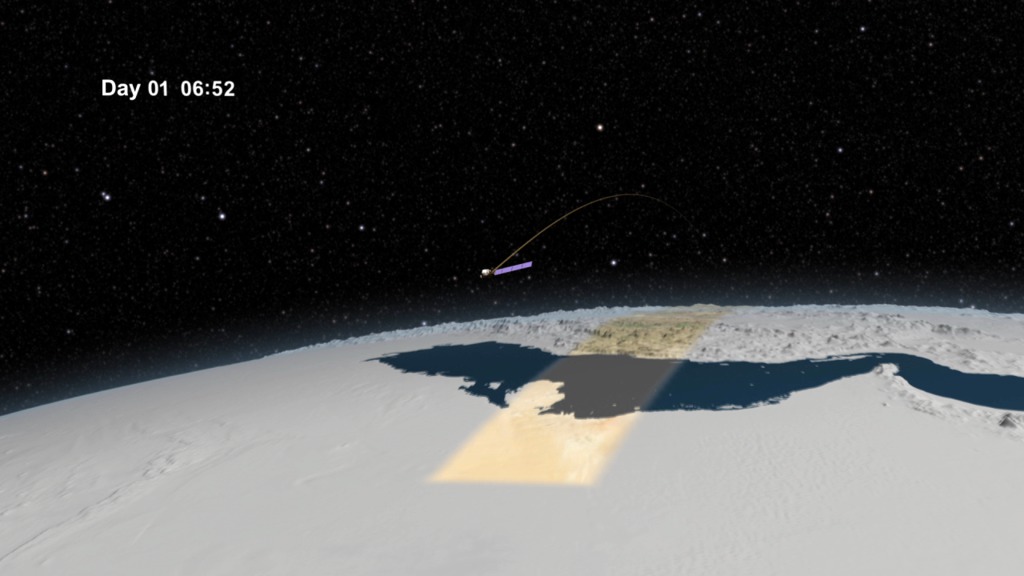Live Shots Gallery Collection
Overview
Collection of live shot pages of b-roll and interviews!
2024 Live Shots
Collection of campaigns done in 2024
Soaring Records in NASA & NOAA’s 2023 Global Global Temperature Report
Go to this pageSoaring Records in NASA & NOAA’s 2023 Global Temperature ReportOn Friday, Jan. 12 at 11 a.m. EST, NASA and NOAA will release the 2023 assessment of global temperatures. Click HERE for more information about the media briefing.2023 was one for the record books with the hottest summer on record in the Northern Hemisphere and the warmest winter on record for the Southern Hemisphere. Last year also had 25 confirmed disaster events as of Dec. 9, that resulted in more than $1 billion in damages for each event in the United States alone. Southern California saw its first-ever tropical storm watch in August. Smoke from Canadian wildfires turned the skies in New York City orange and triggered air quality alerts along the East Coast. The Midwest experienced devastating flooding and a string of deadly tornadoes that claimed five lives. In a summer marked by extraordinary heat in the Southwest, Phoenix had 31 consecutive days of temperature above 110 degrees in July. Elsewhere in the world, record-breaking Tropical Cyclone Freddy became the longest-lived cyclone in history devastating parts of Madagascar and Mozambique with deadly flooding and landslides.Talk about this record year and what it means with a NASA or NOAA expert.Live interviews with NASA and NOAA experts are available January 12, 2024 from 12 p.m.- 5 p.m. EST Click here to request an interview: https://forms.gle/SKBTcfHfAWd23gCE6 Requests sent via the above form will have scheduling priority. Please do not email requests.* Graphics/records showing 2023 global temperature trends can be found here: https://svs.gsfc.nasa.gov/5207/https://svs.gsfc.nasa.gov/5190/Phttps://svs.gsfc.nasa.gov/5191/ Learn more at https://www.nasa.gov/ and on social media @NASASuggested Anchor Intro:2023 was a year of weather extremes across the planet from the hottest summer on record to Hurricane Idalia that caused vast damage across Florida and the southwestern U.S. Health hazards from the massive wildfires in Canada reached vast regions of the U.S. that don’t normally see impacts from the smoky fire season. Here in OUR region we experienced …… Let’s find out how 2023 ranked in the books with NASA (or NOAA) climate expert XXX, here to give us a 2023 climate breakdown.Suggested Questions:1. NASA and NOAA just announced the latest global temperature data for 2023, where does 2023 rank in the climate record?2. In 2023 we saw a lot of extreme events. What impacts from climate change can we expect in our region? Pick a general area.West Coast Midwest East CoastInternational3. What upcoming Earth science missions are you most excited about?4. What action steps are NASA/NOAA taking to address climate issues?5. Where can viewers learn more about today’s announcement, and what it means for our area?Questions for longer interviews: 6. We’re currently in a strong El Niño. Can you explain what El Niño is and how it impacts global temperatures? 7. NASA is preparing to launch a new satellite - the Plankton, Aerosol, Cloud Ocean Ecosystem or PACE - in just a few weeks that will shed new light on the health of our atmosphere and oceans. What are you most excited about with this mission? 8. According to NOAA’s annual climate and weather disaster report, 2023 was a costly one. Can you tell us more about this report and how it differs from other years?9. Given how extraordinary 2023 was, what does that tell you about future trends?10. The Northeast just experienced its first major winter storm in two years. Does that mean this year might be off to a cooler start than last year? ||
Global Pulse Check! NASA’s New Earth Satellite, PACE, Launching Next Week to Capture Earth Like Never Before!
Go to this pageClick here for more information about the PACE mission.Associated cut b-roll for the live shots will be added by 5 p.m. EST on Friday, Feb 2 || PACE_Live_Shots_Next_Weekend_Banner__copy.jpg (1800x720) [611.1 KB] || PACE_Live_Shots_Next_Weekend_Banner__copy_print.jpg (1024x409) [206.7 KB] || PACE_Live_Shots_Next_Weekend_Banner__copy_searchweb.png (320x180) [100.7 KB] || PACE_Live_Shots_Next_Weekend_Banner__copy_thm.png (80x40) [7.8 KB] ||
First U.S. Commercial Provider Just Days From Landing NASA Science And Technology Instruments on the Moon
Go to this pageSee below for associated cut b-roll for the live shots AND a pre-recorded interview with Jim Free. Click here for how you can watch the landing broadcast LIVENASA’s Lunar Reconnaissance Orbiter (LRO) captured this view of the IM-1 landing region || FINAL_CLPS_Mission_Banner_2.15.jpg (1800x720) [502.1 KB] || FINAL_CLPS_Mission_Banner_2.15_print.jpg (1024x409) [209.8 KB] || FINAL_CLPS_Mission_Banner_2.15_searchweb.png (320x180) [94.5 KB] || FINAL_CLPS_Mission_Banner_2.15_thm.png (80x40) [7.2 KB] ||
One Month Out From The Total Solar Eclipse Live Shots
Go to this pageIncluded on this resource page are cut broll for the live shots and pre-recorded soundbites with Gina DiBraccio / Deputy Director of Heliophysics, NASA GSFC and Nicholeen Viall / NASA Mission Scientist for PUNCH. Also check out NASA's podcast nasa.gov/curiousuniverse. New episodes coming soon including one about the April 2024 solar eclipse. || Unknown.jpeg (1600x640) [86.5 KB] || Unknown_print.jpg (1024x409) [53.1 KB] || Unknown_searchweb.png (320x180) [35.3 KB] || Unknown_thm.png (80x40) [5.1 KB] ||
The Countdown Is On For The Historic Solar Eclipse On April 8th That Will Sweep Across the U.S. Are You Ready for It?
Go to this pageScroll down the page for the cut b-roll for the live shots and a canned interview available for easy download || Total_Solar_Eclipse_Banner_4.3.24.jpg (1800x720) [134.2 KB] || Total_Solar_Eclipse_Banner_4.3.24_print.jpg (1024x409) [62.3 KB] || Total_Solar_Eclipse_Banner_4.3.24_searchweb.png (320x180) [32.4 KB] || Total_Solar_Eclipse_Banner_4.3.24_thm.png (80x40) [5.0 KB] ||
NASA Interview Opportunity: Celebrate Earth Day With A Global Pulse Check Of Our Oceans! See Our Oceans In A Whole New Light
Go to this pageJoin a NASA expert on April 22, 2024 to talk about Earth Day 2024 Celebrations sprinkled with ocean science! ||
2023 Live Shots
Collection of campaigns done in 2023
NASA and NOAA Interview Opportunity: The numbers are in! See Where 2022 Ranks for Hottest Year on Record
Go to this pageAssociated cut b-roll for the live shots will be posted by Wednesday, Jan 11 with the exception of the new graphic showing the global temperature data for 2022 which is embargoed until 11:00 a.m. EST on Jan 12 || 2.png (7776x3888) [19.1 MB] || 2_print.jpg (1024x512) [187.4 KB] || 2_searchweb.png (320x180) [119.3 KB] || 2_thm.png (80x40) [8.4 KB] ||
NASA Interview Opportunity: Celebrate our Dynamic Planet with a NASA Expert this Earth Day
Go to this pageClick here for quick link to cut B-ROLL for interviewsScroll down promo videos for John Bolten and Lesley OttClick here for quick link to canned interview with Lesley Ott || 1.jpeg (6912x3456) [1.4 MB] || 1_print.jpg (1024x512) [89.6 KB] || 1_searchweb.png (320x180) [100.4 KB] || 1_thm.png (80x40) [7.8 KB] ||
Skywatchers Delight! Venus Will Dazzle In The Night Sky Next Weekend! NASA’s Upcoming DAVINCI Mission Will Take The Plunge into Venus’s Hellish Atmosphere Live Shots
Go to this pageQuick link to EDITED BROLL for the live shotsQuick link to pre-recorded interview with DR. JIM GARVIN / DAVINCI Principal InvestigatorAdditional still images of Venus from NASA's Magellan and Mariner missions. Credit: NASA/JPLLearn more about VENUS here!!Quick link to pre-recorded interview with MATT GARRISONQuick link to pre-recorded interview with DR LINDSAY HAYS || VENUS.jpeg (1800x720) [220.3 KB] || VENUS_print.jpg (1024x409) [85.9 KB] || VENUS_searchweb.png (320x180) [64.2 KB] || VENUS_thm.png (80x40) [7.4 KB] ||
NASA Interview Opportunity: Summer Solstice Leads to an Exciting Year for Our Sun Live Shots
Go to this pageQuick link to cut b-roll for the LIVE SHOTSQuick link to canned interview with DR. ALEX YOUNG || 2023_summer_solstice.jpeg (1800x720) [257.0 KB] || 2023_summer_solstice_print.jpg (1024x409) [101.3 KB] || 2023_summer_solstice_searchweb.png (320x180) [91.8 KB] || 2023_summer_solstice_thm.png (80x40) [8.2 KB] ||
NASA Interview Opportunity: Celebrate the James Webb Space Telescope’s First Year Of Amazing Science With a New Observation Live Shots
Go to this pageNEW IMAGE CAN BE FOUND HERE!!!Cut broll for the live shots is posted below. Here are some additional resources for images if interested: https://www.jwst.nasa.gov/ https://webbtelescope.org/home New 3D Visualization Highlights 5,000 Galaxies Revealed by WebbHubble/ WEBB images in our solar system || English_JWST_w_logos.jpg (1312x600) [653.4 KB] || English_JWST_w_logos_print.jpg (1024x468) [450.1 KB] || English_JWST_w_logos_searchweb.png (320x180) [80.6 KB] || English_JWST_w_logos_thm.png (80x40) [6.5 KB] || JWSTAnniversary_B-roll.webm (1920x1080) [77.1 MB] ||
Worth the wait! NASA’s First Ever Sample From An Asteroid Just Days Away From Returning to Earth Live Shots
Go to this pageLive coverage will begin at 10 a.m. EDT on Sept. 24 and air on NASA Television and the agency’s website, as well as YouTube, X, Facebook, and NASA’s App.For more information click NASA Invites Public to Share Excitement of Asteroid Sample Return || OREX_landing_banner5.jpeg (1800x720) [300.4 KB] || OREX_landing_banner5_print.jpg (1024x409) [97.4 KB] || OREX_landing_banner5_searchweb.png (320x180) [87.8 KB] || OREX_landing_banner5_thm.png (80x40) [7.7 KB] ||
NASA’s First-Ever Journey to a Metal-Rich Asteroid Launching Soon!
Go to this pageClick here for the Psyche PRESS KIT that includes additional resources!!Click here for mission updates: https://blogs.nasa.gov/psyche/Click here to find out more about the Psyche mission to a metal-rich asteroid. || PSYCHE_LiveShot_Template_3.jpeg (1800x720) [356.8 KB] ||
NASA Interview Opportunity: Ring of Fire THIS Weekend With Annular Solar Eclipse
Go to this pageAssociated cut broll for the live shots will be added by 4:00 p.m. EST on Thursday, Oct 12 || english_final.png (7560x2484) [3.0 MB] || english_final_print.jpg (1024x336) [84.8 KB] || english_final_searchweb.png (320x180) [40.8 KB] || english_final_thm.png (80x40) [5.5 KB] ||
2022 Live Shots
Gallery of live shots done in 2022
- Produced Video
2021 Live Shots
Live shots done in 2021
- Produced Video
2020 Live Shots
Live shots done in 2020
- Produced Video
- Produced Video
- Produced Video
2019 Live Shots
Collection of live shots done in 2019
- Produced Video
- Produced Video
- Produced Video
- Produced Video
- Produced Video
- Produced Video
- Produced Video
2018 Live Shots
Collection of live shots done in 2018
The Numbers Are In: Where Does 2017 Rank for Global Temperatures? Live Shots 1.18.18
Go to this page2017 Takes Second Place For Warmest Year On Record. || 12824_Temperature_BROLL.00001_print.jpg (1024x576) [150.1 KB] || 12824_Temperature_BROLL.00001_searchweb.png (320x180) [80.3 KB] || 12824_Temperature_BROLL.00001_thm.png (80x40) [7.2 KB] || 12824_Temperature_BROLL.mov (1280x720) [4.3 GB] || PRORES_B-ROLL_12824_Temperature_BROLL_prores.mov (1280x720) [4.4 GB] || 12824_Temperature_BROLL_large.mp4 (1280x720) [322.6 MB] || 12824_Temperature_BROLL.webm (960x540) [127.6 MB] ||
‘Super, Blue Blood Moon’ Will Leave Spectators in Awe Live Shots
Go to this pageB-roll Find out what scientists will be learning during the Super, Blue, Blood Moon.Beginning at 5:30 a.m. EST on Jan. 31, a live feed of the Moon will be offered on NASA TV and NASA.gov/live. You can also follow at @NASAMoon. Weather permitting, the NASA TV broadcast will feature views from the varying vantage points of telescopes at NASA’s Armstrong Flight Research Center in Edwards, California; Griffith Observatory in Los Angeles; and the University of Arizona’s Mt. Lemmon SkyCenter Observatory. For more click HERE || B-roll.00001_print.jpg (1024x576) [96.7 KB] || B-roll.00001_print_print.jpg (1024x576) [97.1 KB] || B-roll.00001_print_searchweb.png (320x180) [59.4 KB] || B-roll.00001_print_thm.png (80x40) [6.4 KB] || B-roll.mov (1280x720) [4.6 GB] || B-roll.mp4 (1280x720) [376.7 MB] || B-roll.webm (1280x720) [34.9 MB] ||
Space Communications Live Interviews - Feb. 15, 2018
Go to this pageB-roll for suggested questions 1-5. || TDRS_DATA_Stream_YT1080.00742_print.jpg (1024x576) [29.6 KB] || TDRS_DATA_Stream_YT1080.00742_print_print.jpg (1024x576) [29.5 KB] || TDRS_DATA_Stream_YT1080.00742_print_searchweb.png (320x180) [24.6 KB] || TDRS_DATA_Stream_YT1080.00742_print_thm.png (80x40) [2.6 KB] || 12852_TDRS_LS_B-roll.mov (1280x720) [2.2 GB] || 12852_TDRS_LS_B-roll.webm (1280x720) [16.7 MB] || 12852_TDRS_LS_B-roll.mp4 (1280x720) [231.6 MB] ||
Faster Weather Tracking On The Way. Feb. 23 Live Shots About Upcoming Launch Of GOES-S
Go to this pageB-roll to be added Thursday, Feb. 22nd at 6:00 p.m. ET || GOESR_SpaceShot1_V2-2.png (1920x1080) [3.7 MB] || GOESR_SpaceShot1_V2-2_print.jpg (1024x576) [107.4 KB] || GOESR_SpaceShot1_V2-2_searchweb.png (320x180) [92.5 KB] || GOESR_SpaceShot1_V2-2_thm.png (80x40) [6.7 KB] ||
NASA Preparing to Launch New Planet-Hunting Mission Live Shots
Go to this pageB-Roll for TESS Live Shot || B_ROLL.00001_print.jpg (1024x576) [98.9 KB] || B_ROLL.00001_searchweb.png (320x180) [56.6 KB] || B_ROLL.00001_thm.png (80x40) [5.4 KB] || B_ROLL.mp4 (1280x720) [369.8 MB] || B_ROLL.mov (1280x720) [48.1 GB] || B_ROLL.webm (1280x720) [36.1 MB] ||
Hubble Space Telescope Celebrates 28 Years: Live Interviews on April 20, 2018
Go to this pageHubble Space Telescope Celebrates 28 Years: Live Shots B-Roll Reel || Hubble28broll.png (1280x720) [1.1 MB] || Hubble28broll_print.jpg (1024x576) [79.5 KB] || Hubble28broll_searchweb.png (320x180) [87.4 KB] || Hubble28broll_thm.png (80x40) [6.8 KB] || Hubble28broll.mp4 (1280x720) [339.8 MB] || Hubble28broll.webm (1280x720) [31.0 MB] || Hubble28broll.mov (1280x720) [4.0 GB] ||
Hubble Sees Summer Storms on Mars and Saturn
Go to this pageB-Roll || HubbleMarsSaturnBRoll.00001_print.jpg (1024x576) [61.7 KB] || STSCI-H-p1829d-f-1152x1152.png (1152x1152) [360.7 KB] || STSCI-H-p1829d-f-1152x1152_print.jpg (1024x1024) [56.0 KB] || HubbleMarsSaturnBRoll.00001_searchweb.png (320x180) [46.8 KB] || HubbleMarsSaturnBRoll.00001_thm.png (80x40) [5.2 KB] || HubbleMarsSaturnBRoll.00001_print_web.png (320x180) [52.2 KB] || HubbleMarsSaturnBRoll.00001_web.png (320x180) [47.2 KB] || STSCI-H-p1829d-f-1152x1152_web.png (320x320) [33.8 KB] || STSCI-H-p1829d-f-1152x1152_thm.png (80x40) [3.9 KB] || 05-broll.mov (1280x720) [1.2 GB] || HubbleMarsSaturnBRoll.mp4 (1280x720) [88.2 MB] || HubbleMarsSaturnBRoll.webm (1280x720) [12.5 MB] ||
NASA's Mission to Touch the Sun Launches Next Week
Go to this pageCanned interview with C.Alex Young || Parker_Solar_Probe_LS_Alex_Young_Canned_Interview_8.2.2018.00001_print.jpg (1024x576) [28.5 KB] || Alex_Canned_Interview.png (2640x1408) [419.5 KB] || Parker_Solar_Probe_LS_Alex_Young_Canned_Interview_8.2.2018.mp4 (1280x720) [240.6 MB] || Parker_Solar_Probe_LS_Alex_Young_Canned_Interview_8.2.2018.webm (1280x720) [24.9 MB] ||
ICESat-2 Launch Live Interviews
Go to this pageB-roll will be added on Thursday, Sept 6th || icesat_screen_grab.png (1324x724) [1.3 MB] || icesat_screen_grab_print.jpg (1024x559) [92.1 KB] || icesat_screen_grab_searchweb.png (320x180) [77.6 KB] || icesat_screen_grab_thm.png (80x40) [5.3 KB] || ICESat-2_B-roll_Liveshots.mov (1280x720) [6.5 GB] || ICESat-2_B-roll_Liveshots.webm (960x540) [211.4 MB] || ICESat-2_B-roll_Liveshots_facebook_720.mp4 (1280x720) [809.8 MB] ||
ICON Pre-Launch Live Shots
Go to this pageB-roll and canned interviews will be added on Wednesday, Oct 24 by 6:00pm || ICON_WebBanner_2018.jpg (3792x597) [550.7 KB] || ICON_WebBanner_2018_print.jpg (1024x161) [101.5 KB] || ICON_WebBanner_2018_searchweb.png (320x180) [119.7 KB] || ICON_WebBanner_2018_thm.png (80x40) [6.5 KB] ||
2017 Live Shots
Collection of live shots done in 2017
- Produced Video
- Produced Video
- Produced Video
- Produced Video
- Produced Video
- Produced Video
2016 Live Shots
Collection of live shots done in 2016
- Produced Video
- Produced Video
- Produced Video
- Produced Video
- Produced Video
- Produced Video
- Produced Video
- Produced Video
- Produced Video
- Produced Video
- Produced Video
- Produced Video
- Produced Video
2015 Live Shots
Collection of live shots done in 2015
- Produced Video
- Produced Video
- Produced Video
- Produced Video
- Produced Video
- Produced Video
- Produced Video
- Produced Video
- Produced Video
- Produced Video
- Produced Video
2014 Live Shots
Collection of live shots done in 2014
Global Precipitation Measurement (GPM) Live Shot broll
Go to this pageNASA scientists talk about the GPM mission ahead of launch. ||
Early Spring 3.20.2014 Live Shots
Go to this pageBroll for live shots talking about how signs of spring are coming earlier. || Early Spring Live Shot Roll Ins || Early_Spring_Roll_Ins-sm.1_print.jpg (1280x720) [129.0 KB] || Early_Spring_Roll_Ins-sm_web.png (320x180) [72.5 KB] || Early_Spring_Roll_Ins-sm_thm.png (80x40) [5.7 KB] || Early_Spring_Roll_Ins.mov (1280x720) [2.7 GB] || Early_Spring_Roll_Ins.webmhd.webm (960x540) [41.6 MB] || Early_Spring_Roll_Ins-sm.mov (650x366) [64.4 MB] ||
2014 New Meteor Shower Live Shot Broll
Go to this pageB-roll for new meteor shower happening May 24, 2014 ||
Air Quality Live Shots 2014
Go to this pageInterviews with scientists and broll on improving air quality conditions in the United States ||
Arctic Sea Ice Live Shot 2014
Go to this pageCanned Interviews and B-roll for Arctic Sea Ice 2014 live shot campaign. ||
MAVEN Arrives at Mars Live Shot 2014
Go to this pageThe Mars Atmosphere Volatile Evolution mission, or MAVEN, is NASA's newest mission to Mars. After a 10 month journey, it's arriving at the Red Planet on Sunday, September 21, where it will study the planet's upper atmosphere. MAVEN will help determine why Mars has lost the majority of its atmosphere over the past four billion years, giving us information on how the Mars climate has evolved over time. This will also help us understand the evolution of other planets, including Earth. ||
Comet Siding Spring: Live Shots 2014
Go to this pageB-roll used to support Comet Siding Spring Live shot on Friday, October 17, 2014 || LS_Broll_Pic.png (1682x940) [1.6 MB] || LS_Broll_Pic_print.jpg (1024x572) [94.6 KB] || LS_Broll_Pic_web.jpg (319x178) [16.5 KB] || LS_Broll_Pic_searchweb.png (320x180) [74.1 KB] || LS_Broll_Pic_web.png (320x178) [73.6 KB] || LS_Broll_Pic_thm.png (80x40) [10.7 KB] || Broll_Comet_Siding_Spring_LS.m4v (960x540) [55.3 MB] || Broll_Comet_Siding_Spring_LS_youtube_hq.mov (1280x720) [60.9 MB] || Broll_Comet_Siding_Spring_LS_prores.mov (1280x720) [1.9 GB] || Broll_Comet_Siding_Spring_LS_1280x720.wmv (1280x720) [59.0 MB] || Broll_Comet_Siding_Spring_LS.webm (960x540) [14.0 MB] || Broll_Comet_Siding_Spring_LS.mov (640x360) [49.6 MB] || Broll_Comet_Siding_Spring_LS_720x480.wmv (720x480) [47.7 MB] || Broll_Comet_Siding_Spring_LS.mp4 (320x240) [9.3 MB] ||
Sunspot Live Shots 2014
Go to this pageCanned interviews for Sunspot live shot 11/20/2014 || Alex_Young_Canned_interview_youtube_hq_print.jpg (1024x576) [102.0 KB] || Alex_Young_Canned_interview_youtube_hq_web.png (320x180) [86.5 KB] || Alex_Young_Canned_interview_youtube_hq_thm.png (80x40) [6.8 KB] || Alex_Young_Canned_interview_1280x720.wmv (1280x720) [106.0 MB] || Alex_Young_Canned_interview_youtube_hq.mov (1280x720) [289.0 MB] || Alex_Young_Canned_interview_appletv.m4v (960x540) [86.6 MB] || Alex_Young_Canned_interview_appletv.webmhd.webm (960x540) [40.6 MB] || Alex_Young_Canned_interview_prores.mov (1280x720) [3.1 GB] || Alex_Young_Canned_interview_appletv_subtitles.m4v (960x540) [86.7 MB] || Alex_Young_Canned_interview_ipod_lg.m4v (640x360) [34.0 MB] || Alex_Young_Canned_Interview.en_US.srt [4.0 KB] || Alex_Young_Canned_Interview.en_US.vtt [4.0 KB] || Alex_Young_Canned_interview_nasaportal.mov (640x360) [86.1 MB] || Alex_Young_Canned_interview_ipod_sm.mp4 (320x240) [18.0 MB] ||
2013 Live Shots
Collection of live shots done in 2013
Wild Fires 2013 Live Shot B-Roll
Go to this pageB-Roll for live shot interviews on Auguest 9, 2013. ||
Supermoon 2013
Go to this pageDr. Michelle Thaller answers questions about what a Supermoon is and talks about how NASA is studying the moon with the Lunar Reconnaissance Orbiter ||
Arctic sea ice live shots 2013
Go to this pageOn Friday August 23, 2013, scientists at NASA's Goddard Space Flight Center talked to television stations from around the country about the Arctic and the changes taking place to sea ice in this region. See below for interviews in English with Tom Wagner and Walt Meier, an interview in Spanish with Carlos del Castillo, and footage and data visualizations of sea ice.For more information please click here. ||
Mars MAVEN mission live shots Nov. 13, 2013
Go to this pageBroll and interview with Dr. Jim Garvin previewing the upcoming launch of NASA's newest mission to Mars, the Mars Atmosphere and Volatile Evoution or MAVEN set to launch Monday, Nov. 18th. ||
Comet ISON live shots Nov. 26, 2013
Go to this pageB-roll for Live Shots November 26th, 2013 || Screen_Shot_2013-11-26_at_2.57.22_PM.png (1171x695) [1.2 MB] || Screen_Shot_2013-11-26_at_2.57.22_PM_web.png (320x189) [96.7 KB] || ison_LS_B-ROLL_appletv.m4v (960x540) [84.7 MB] || ison_LS_B-ROLL_1280x720.wmv (1280x720) [97.9 MB] || ison_LS_B-ROLL_youtube_hq.mov (1280x720) [233.4 MB] || ison_LS_B-ROLL_prores.mov (1280x720) [3.0 GB] || ison_LS_B-ROLL_appletv.webmhd.webm (960x540) [39.3 MB] || ison_LS_B-ROLL_ipod_lg.m4v (640x360) [32.9 MB] || ison_LS_B-ROLL.mov (640x360) [81.1 MB] || ison_LS_B-ROLL_ipod_sm.mp4 (320x240) [16.2 MB] ||
Sun Magnetic Field Flip Live Shots and Media Resources
Go to this pageOn Dec. 6, 2013, NASA scientists Alex Young and Holly Gilbert discussed how the sun's magnetic field is in the process of flipping. ||
2012 Live Shots
Collection of live shots done in 2012
Landsat 40th Liveshot Roll-in Video
Go to this pageOn Friday, July 20th, in advance of Landsat's 40th birthday and a live NASA press conference on Monday the 23rd, NASA scientists are available to discuss amazing & unprecedented images from space of your region. Cities grow, wildfires rage, rivers flood out of their beds and droughts shrink lakes and reservoirs — all captured by Landsat, the world's longest continuous record of Earth from space. Since 1972, Landsat satellites have been orbiting Earth, telling the story of soil moisture, urban spread, land use, assist disasters & recovery. Next year, the 8th Landsat satellite (LDCM) will be launched from California. The Landsat Data Continuity Mission (LDCM) will track food production and water resources, organize disaster recovery and monitor the impact of climate change.The following is broadcast quality video roll-ins in Apple ProRes 422, 1280x720, 59.94 fps. ||
